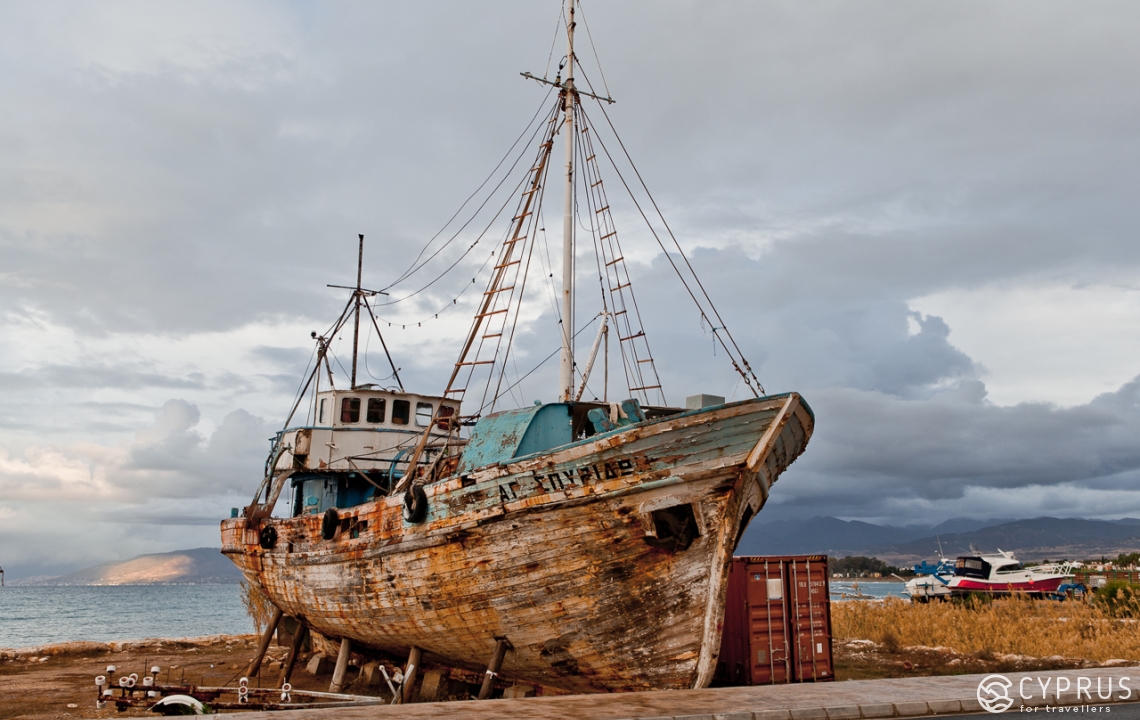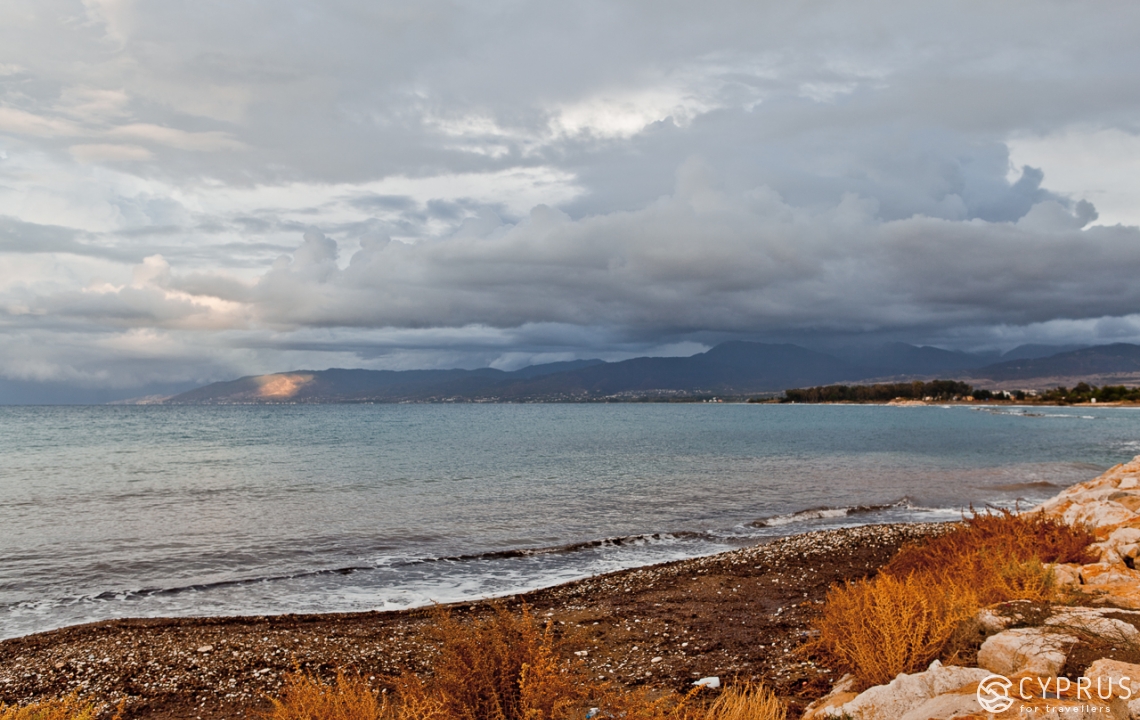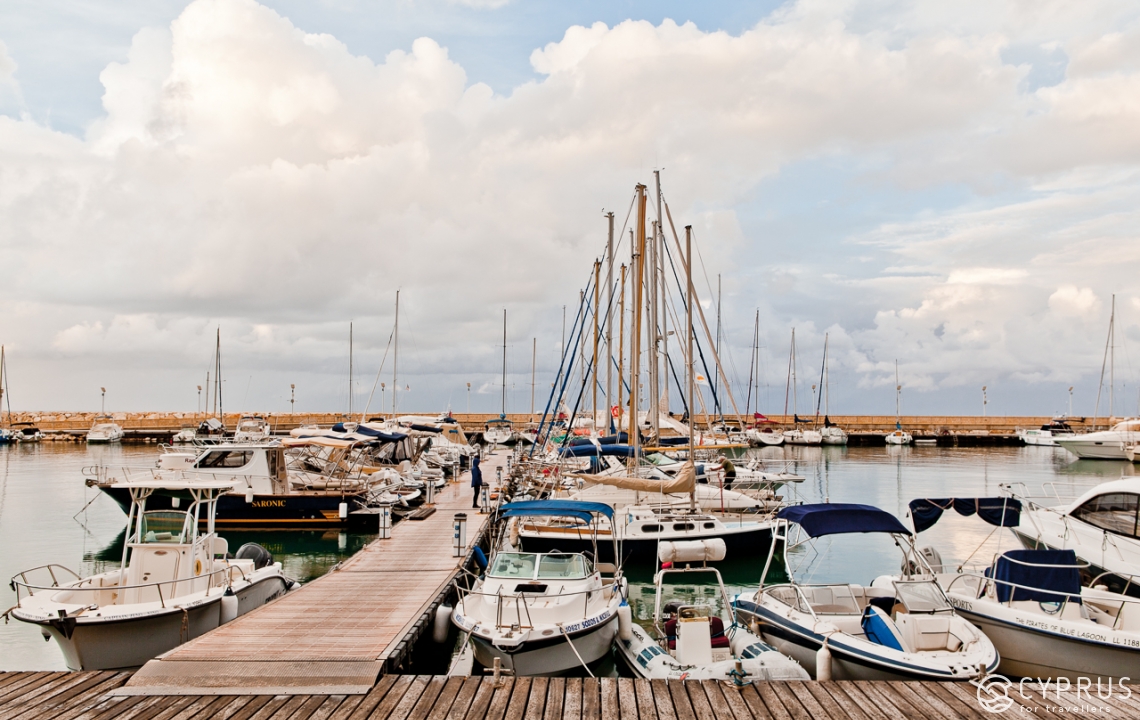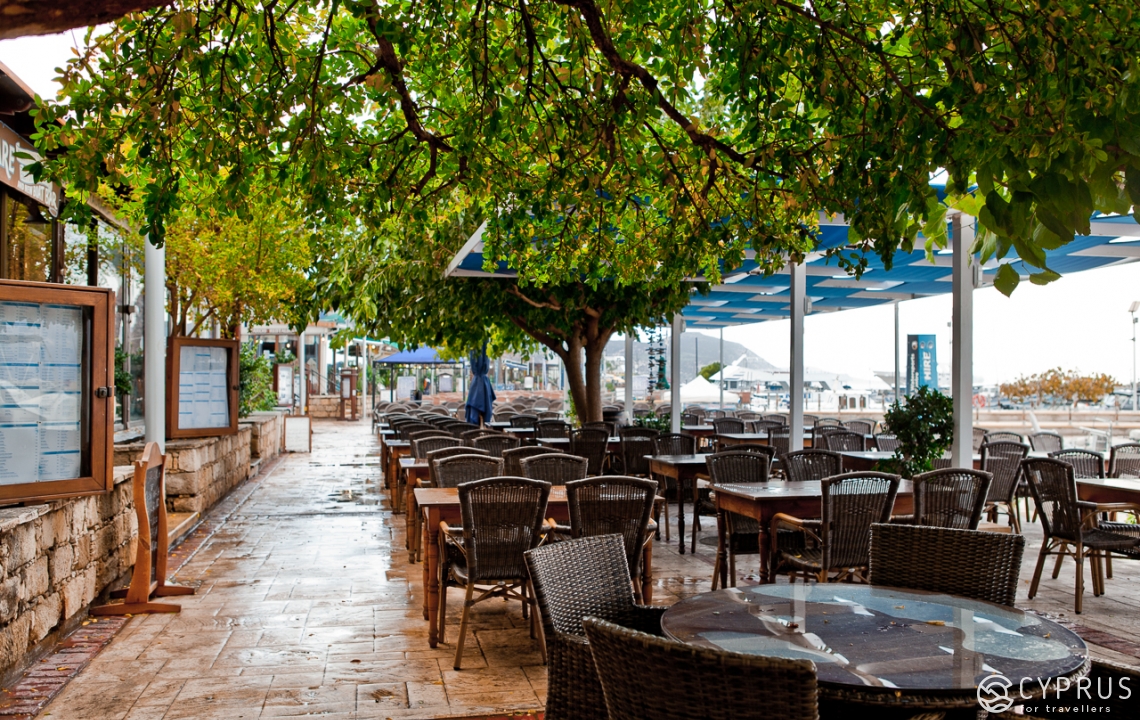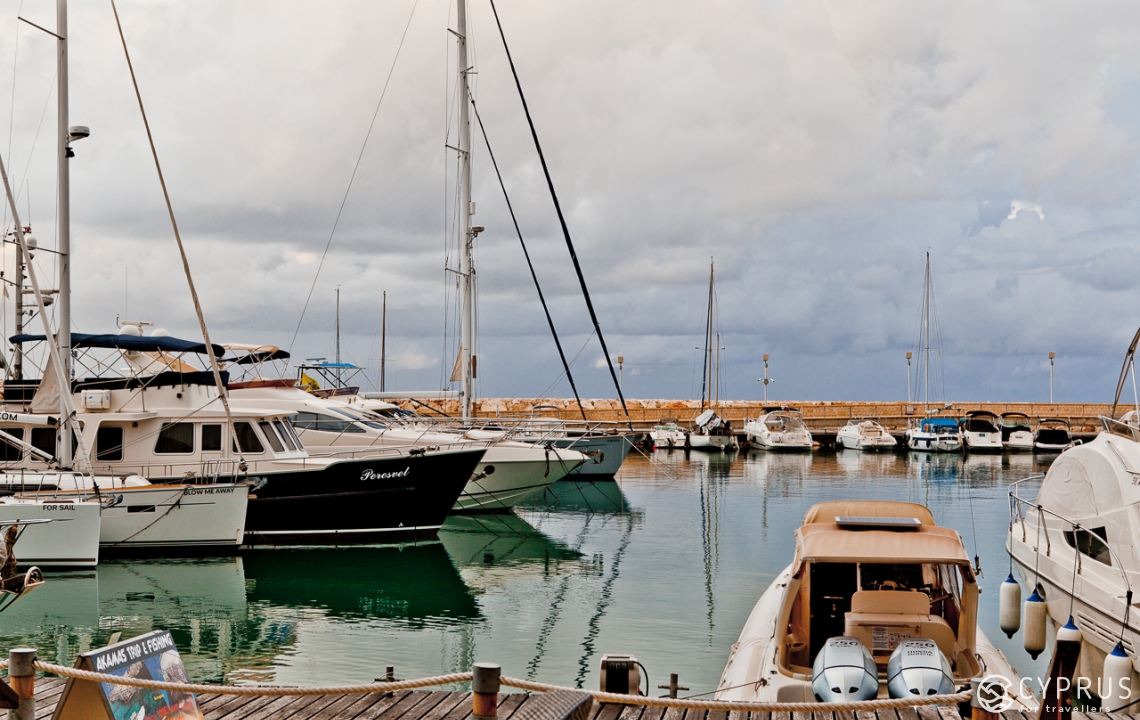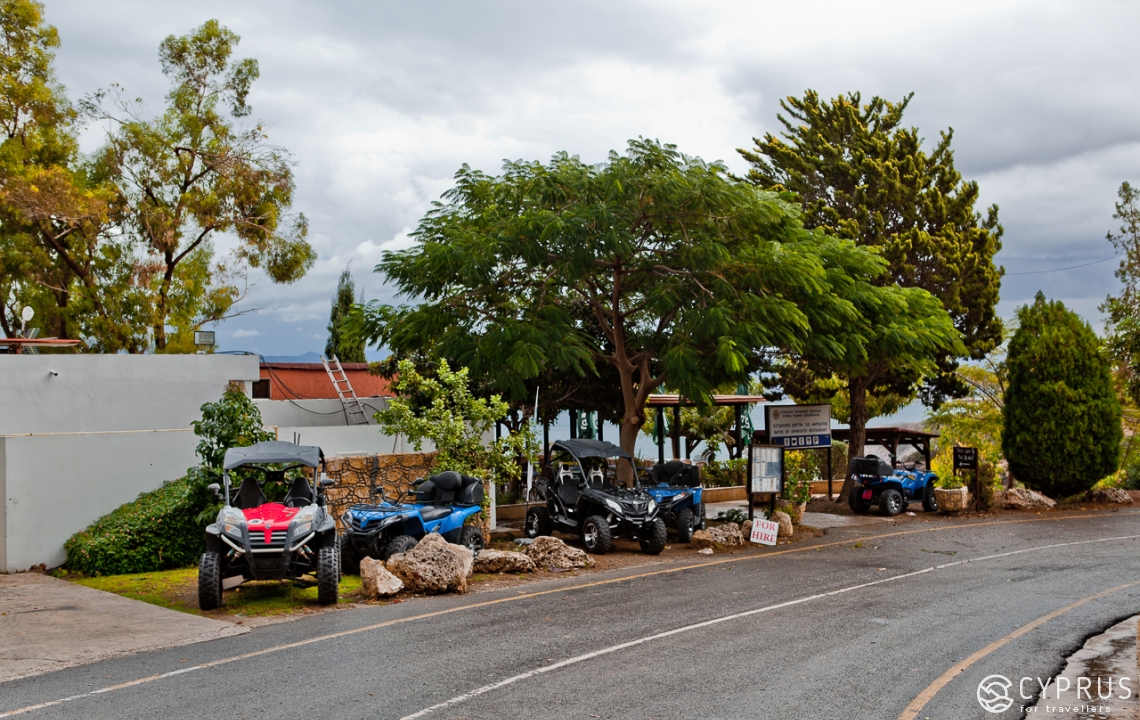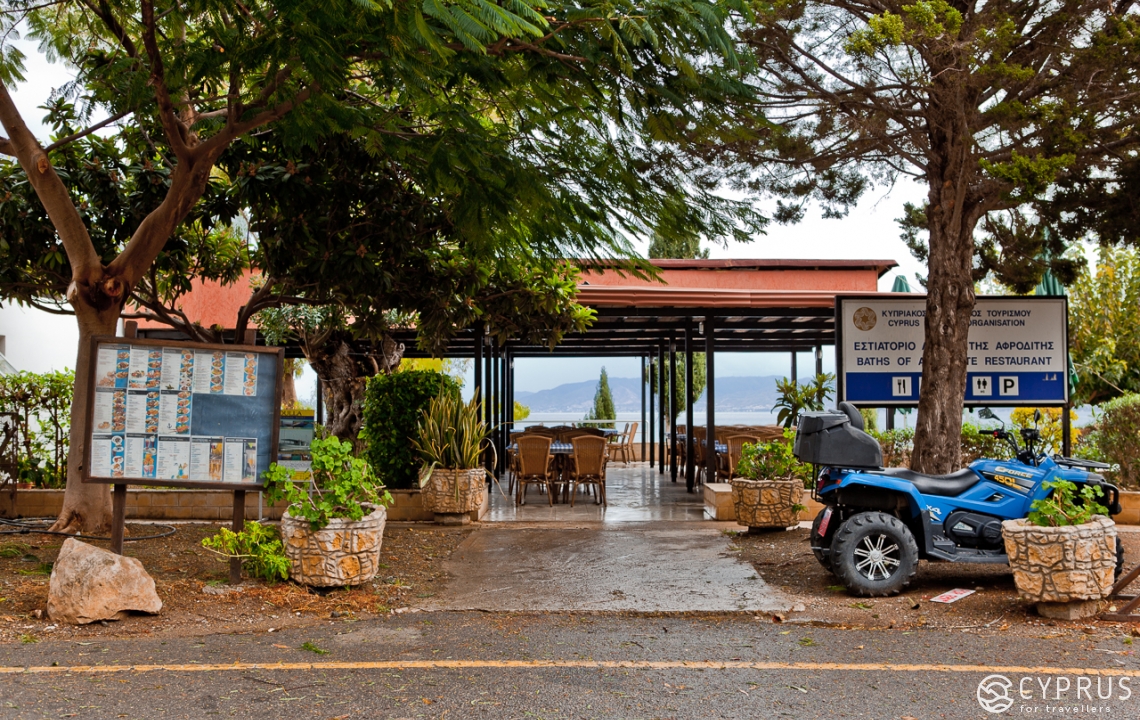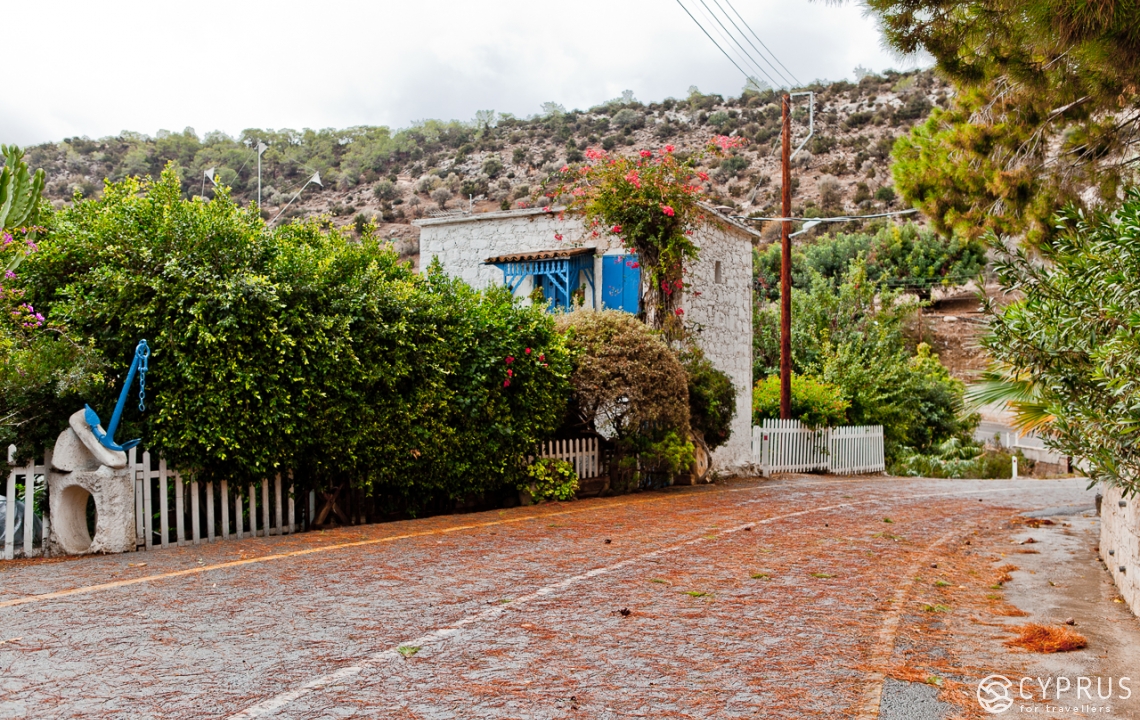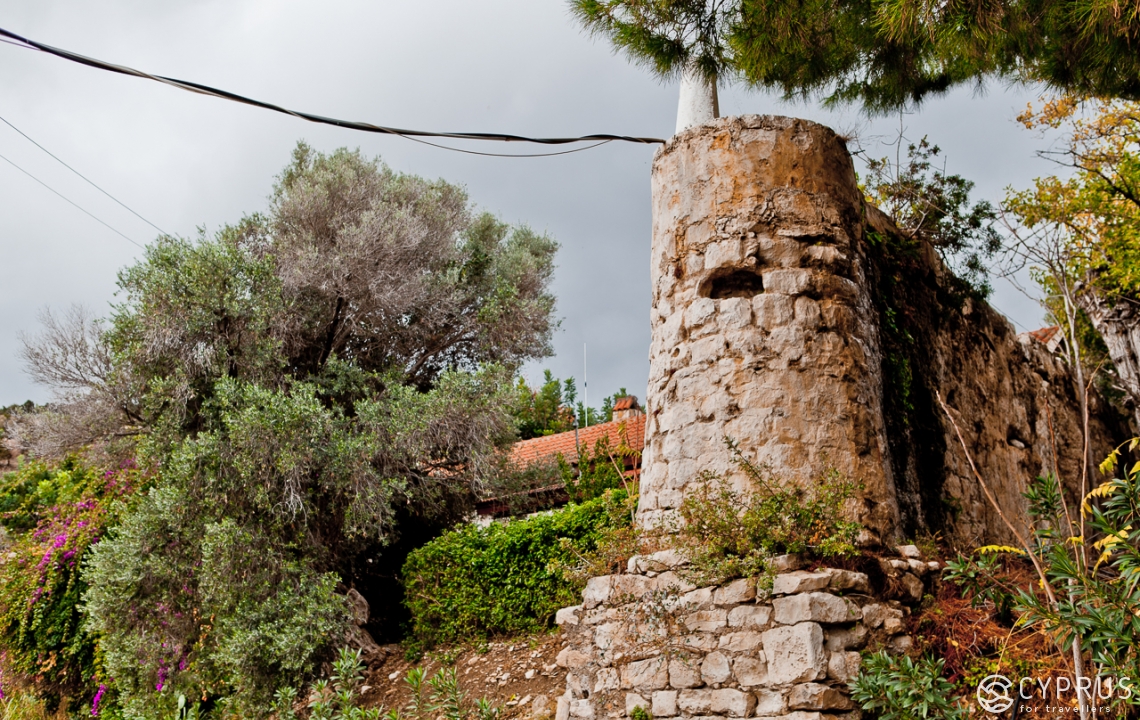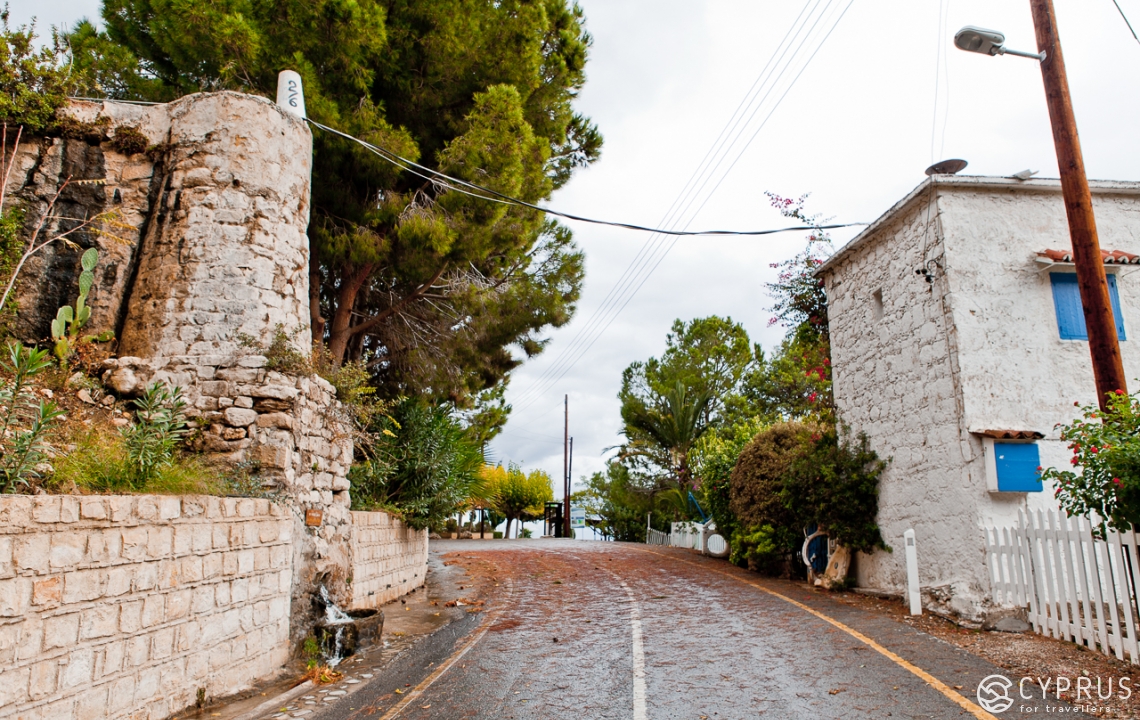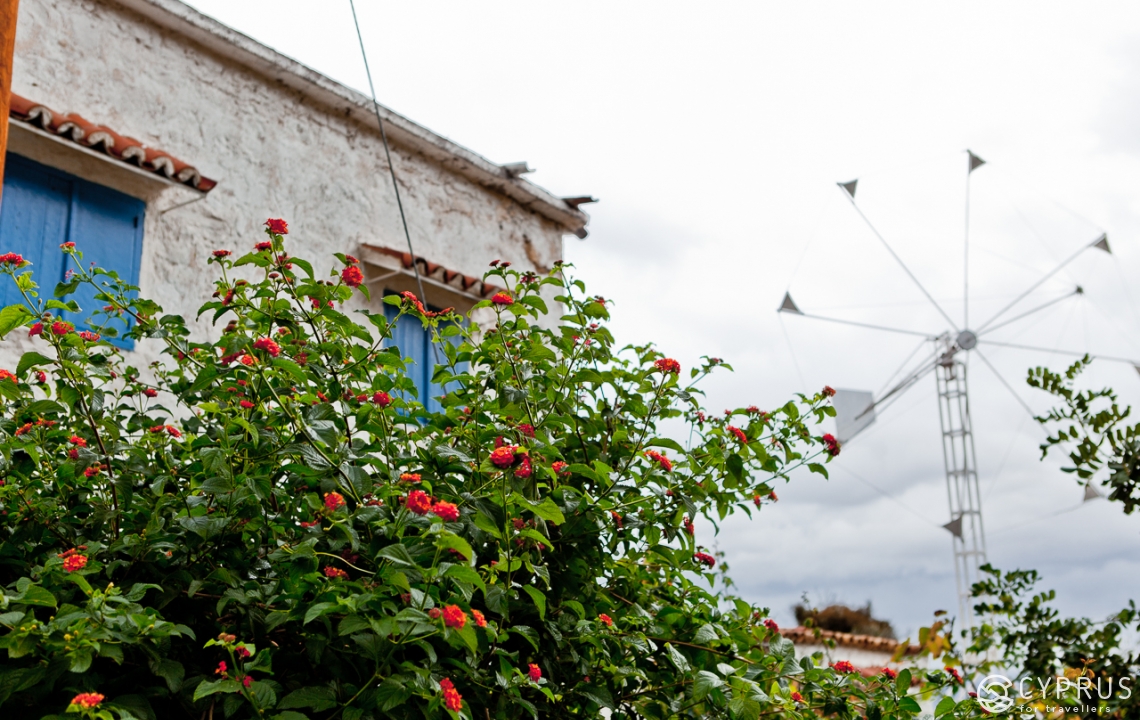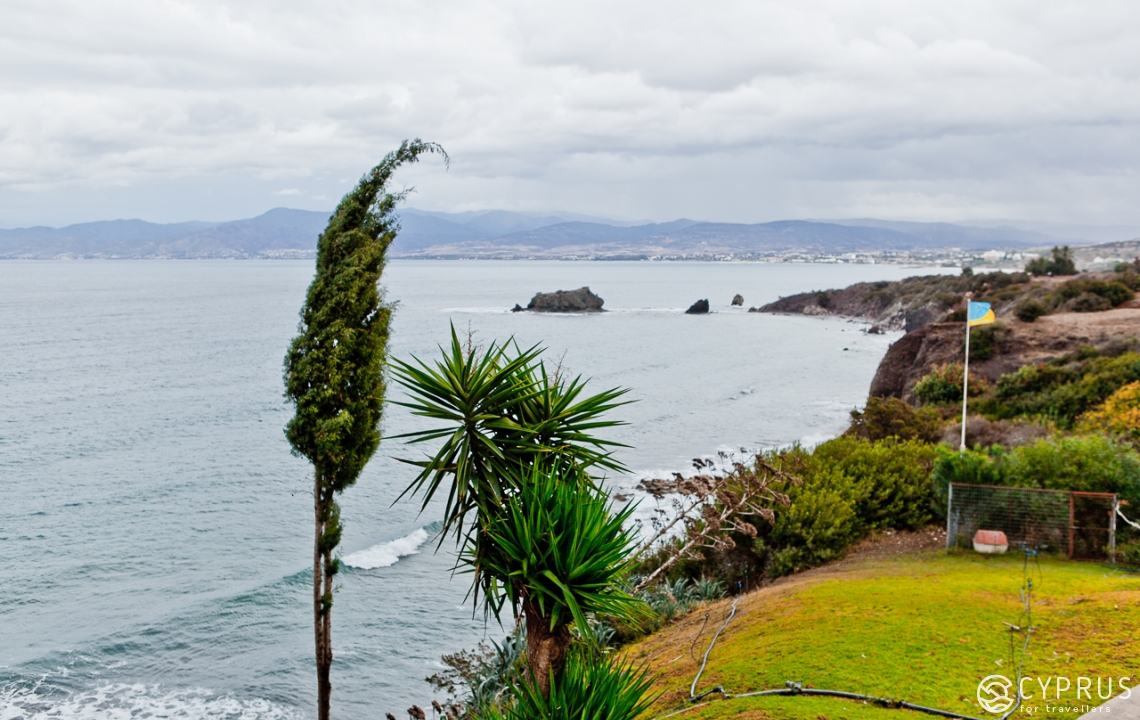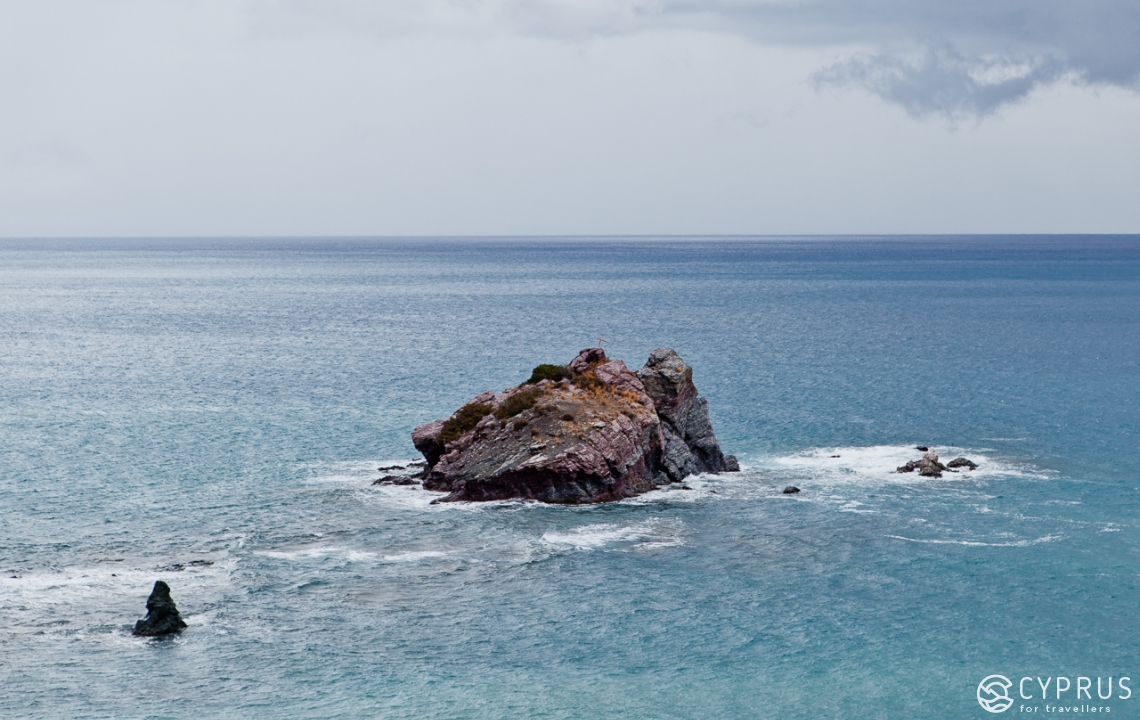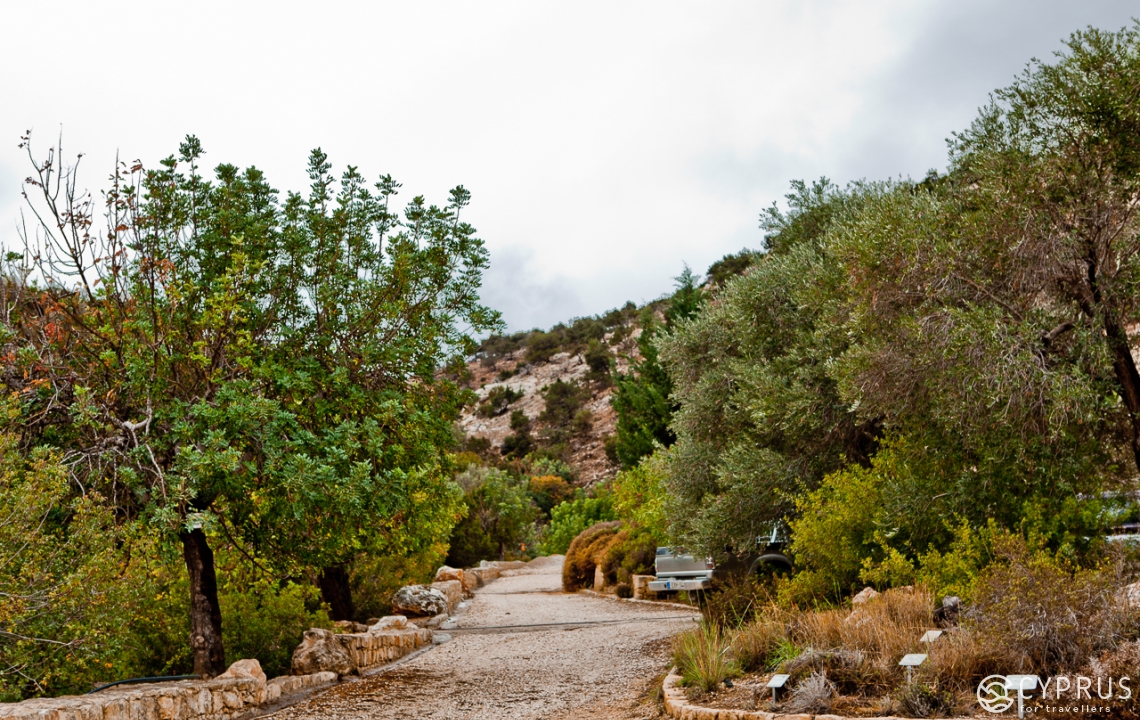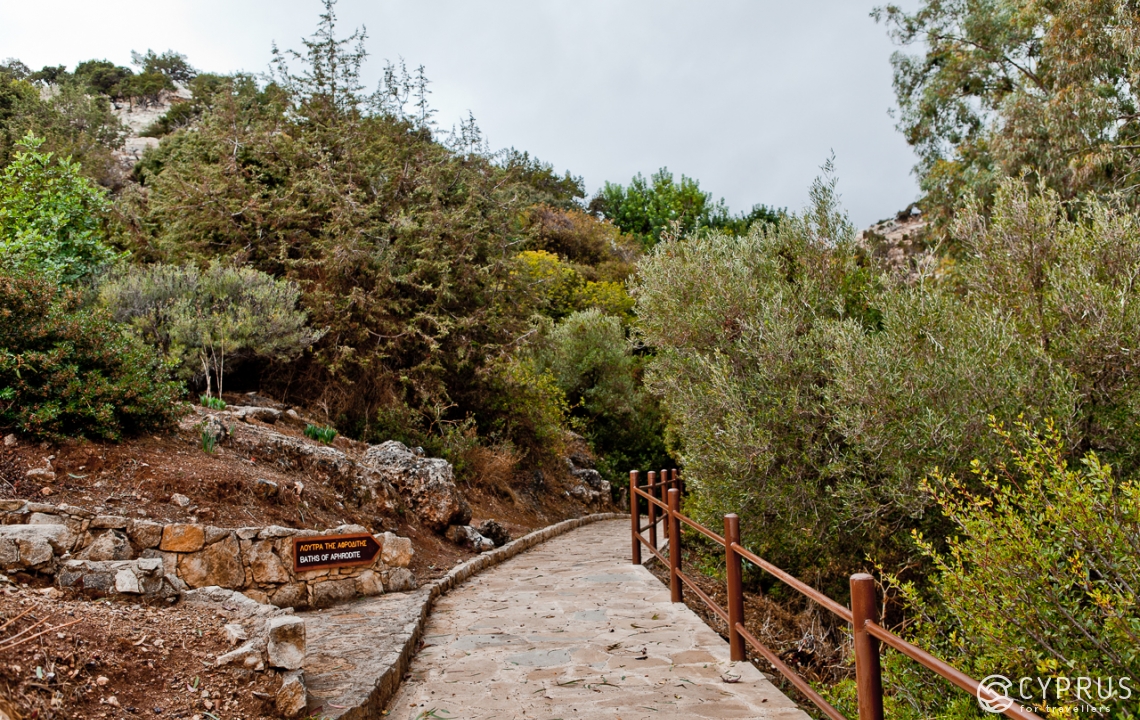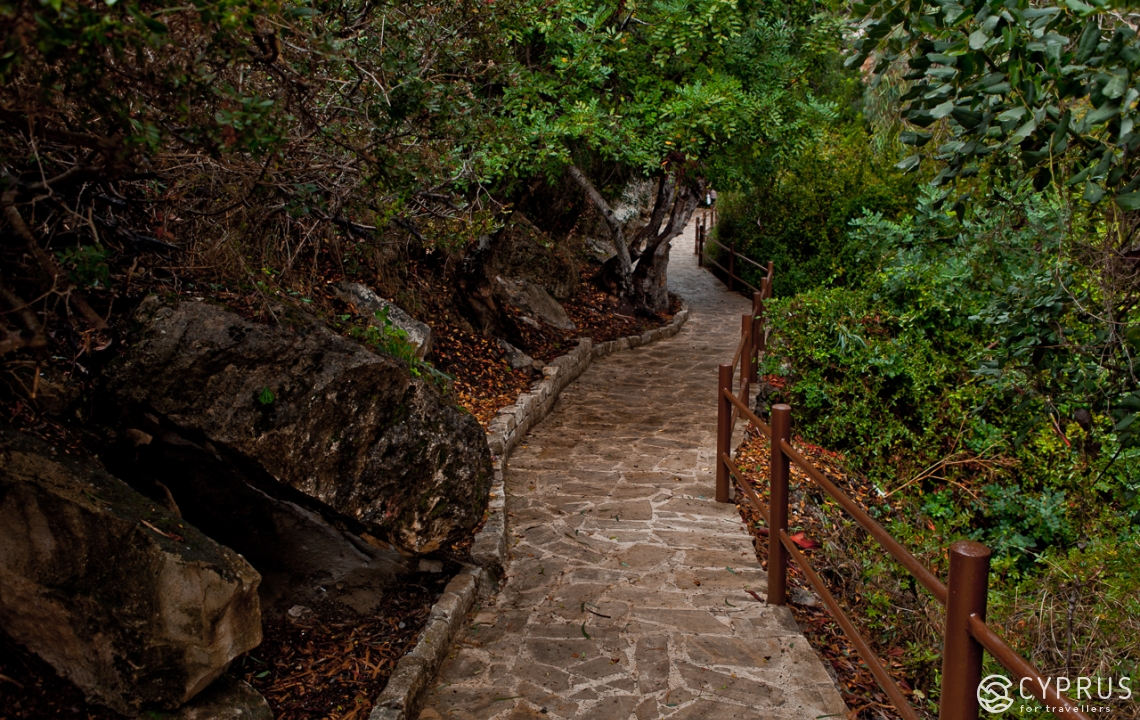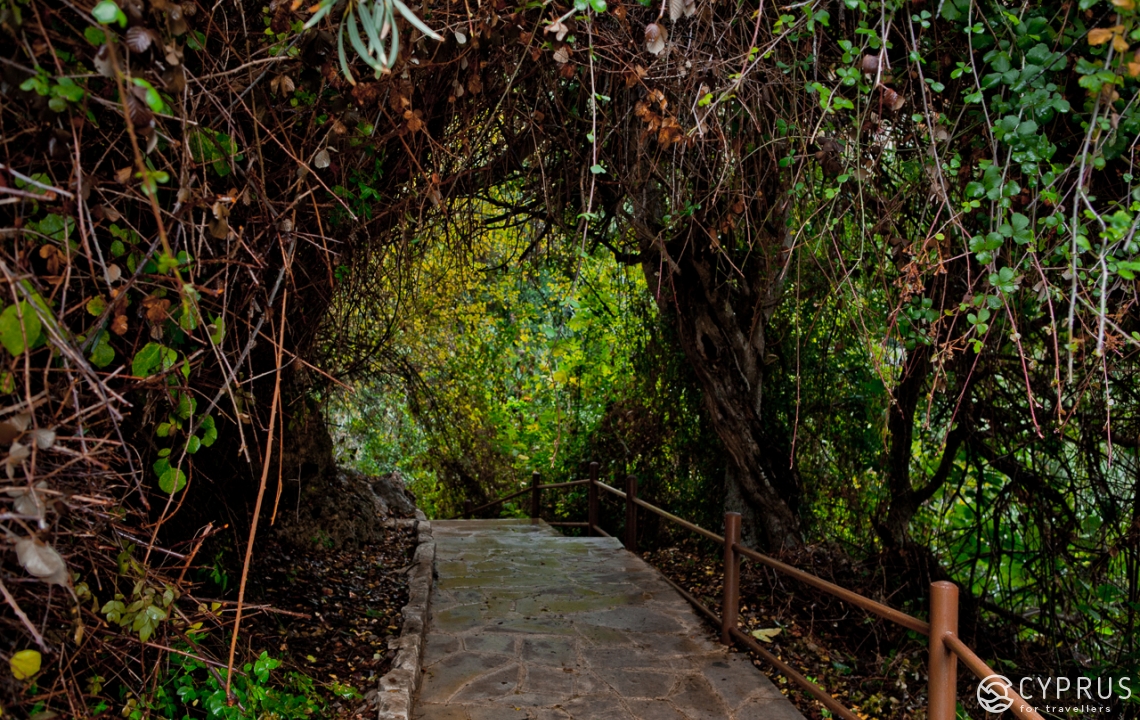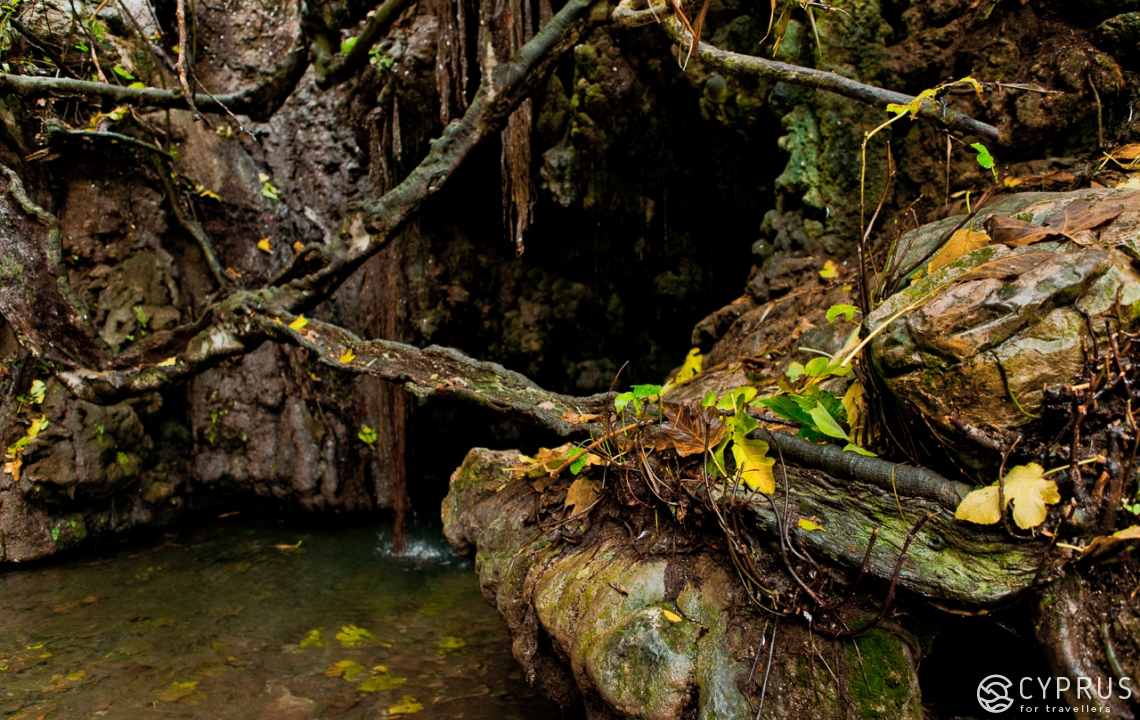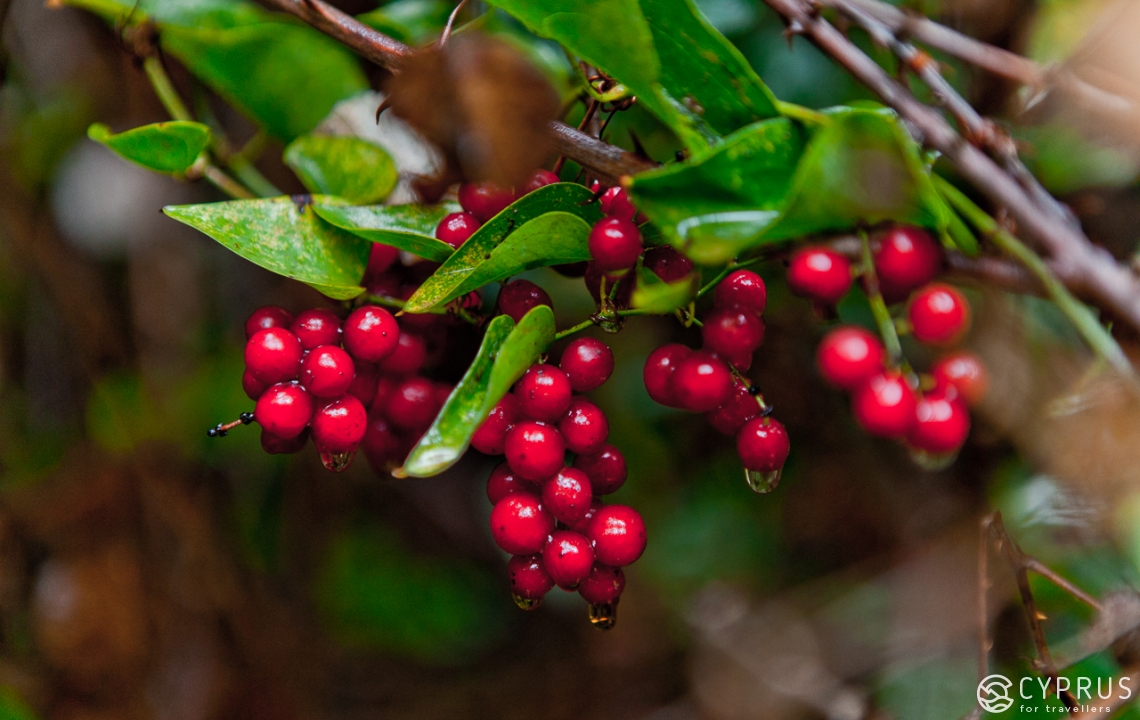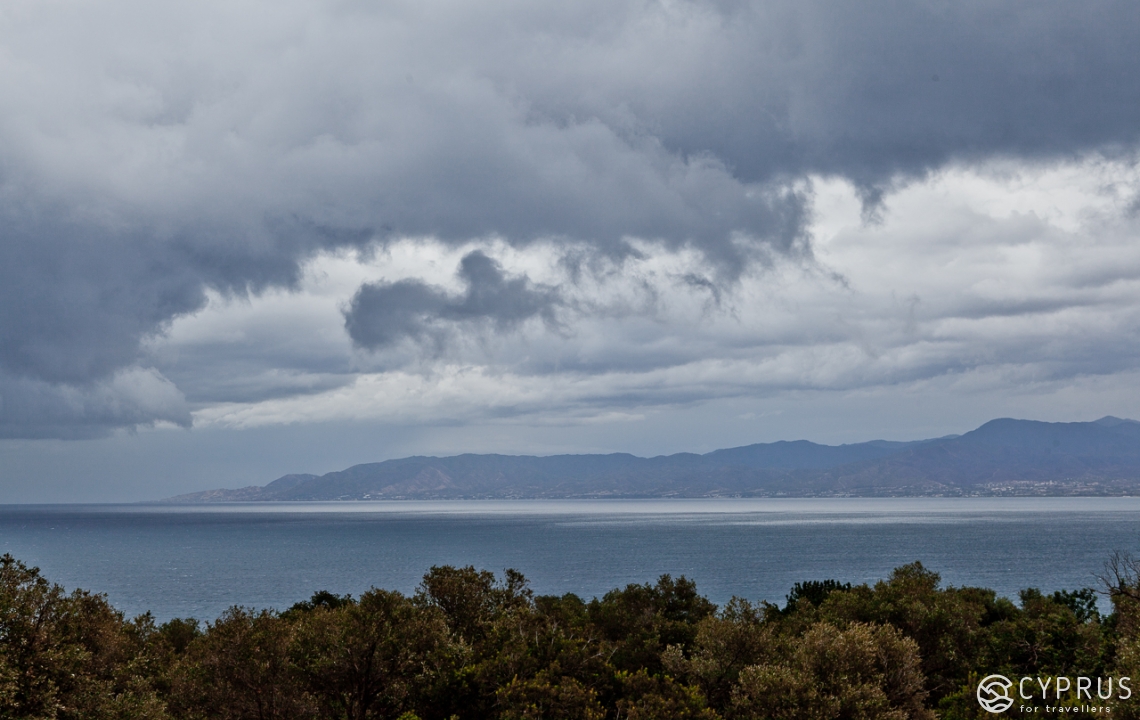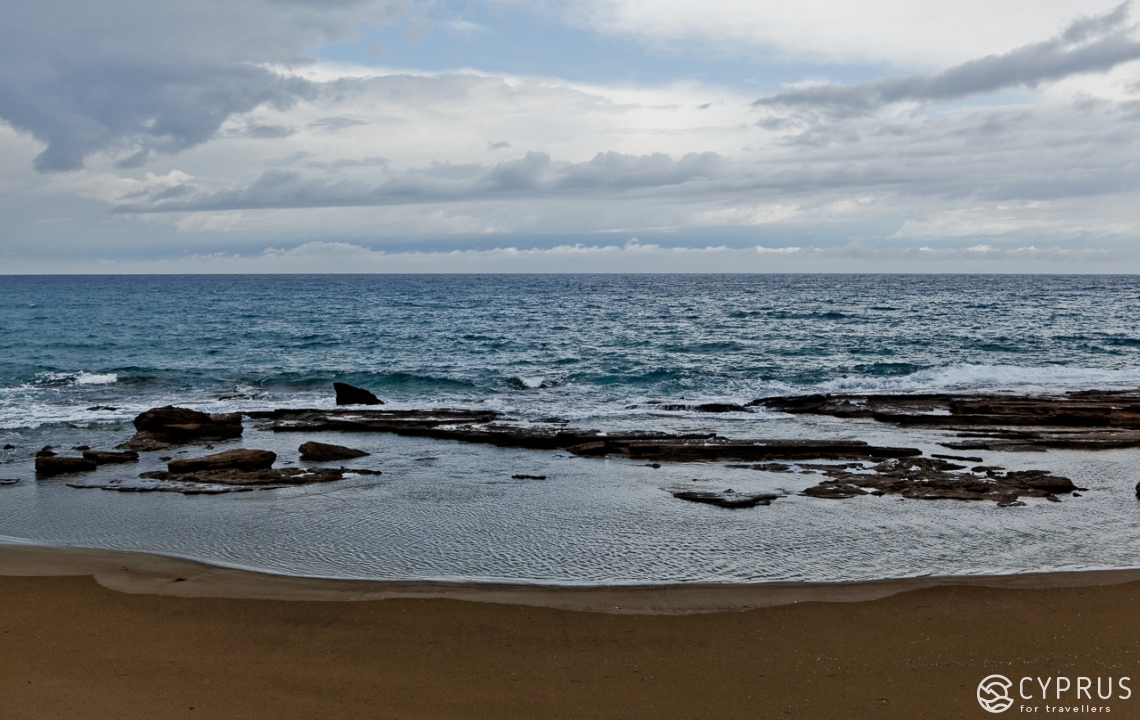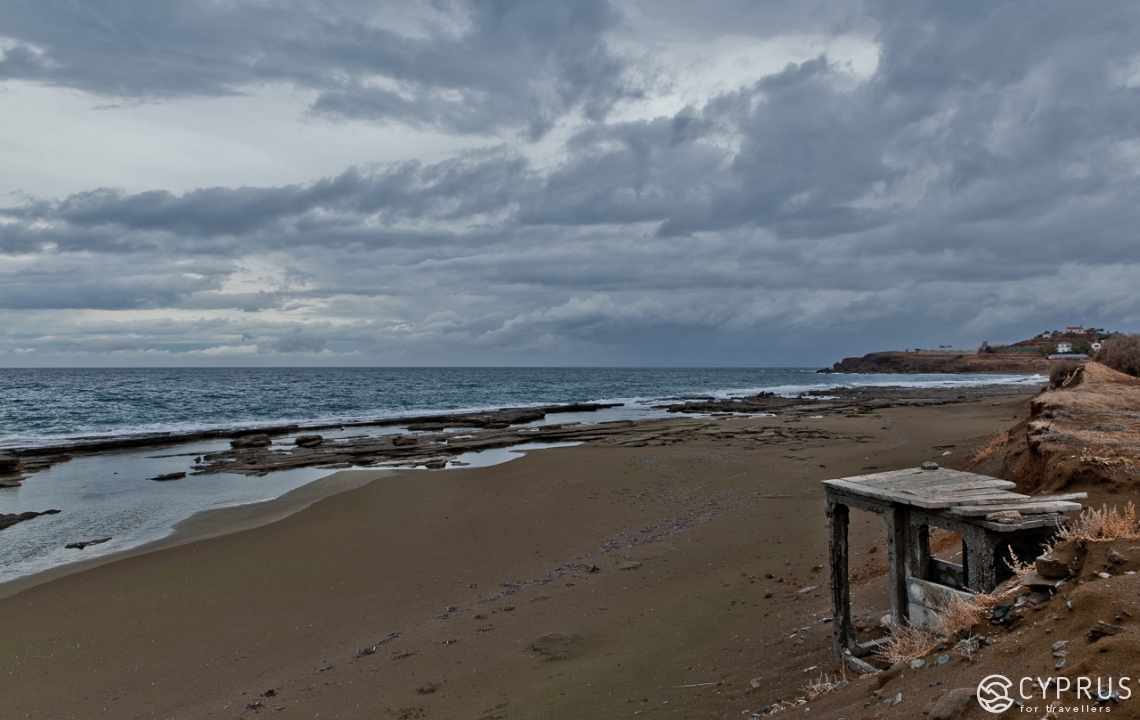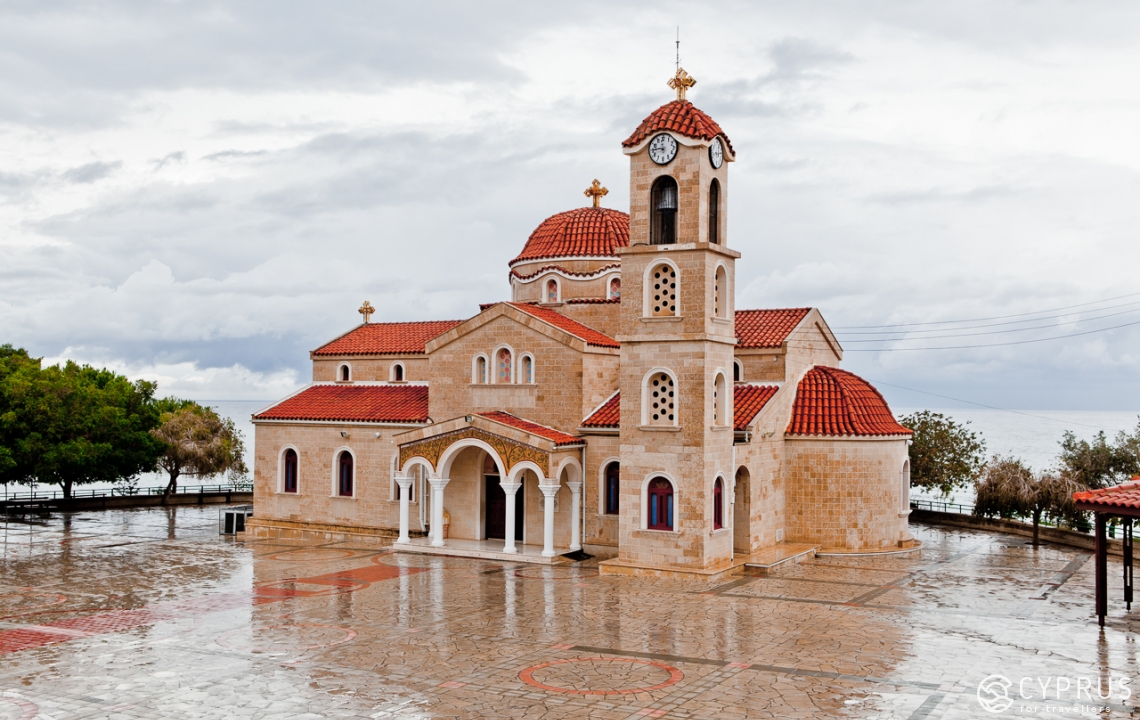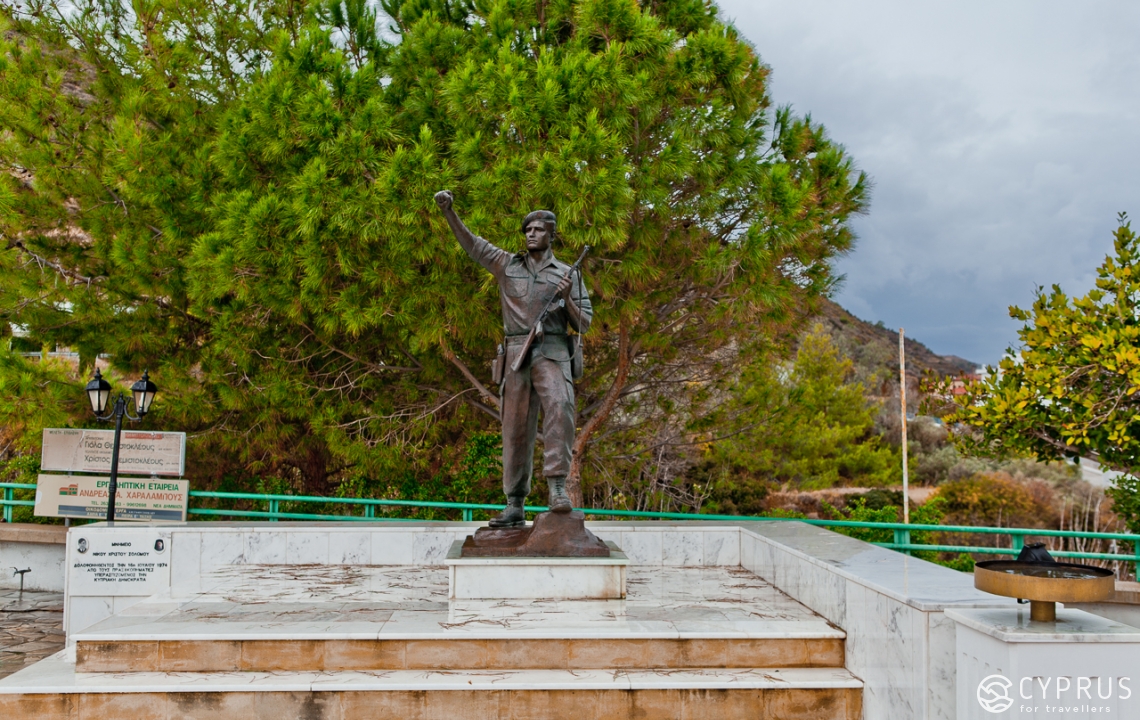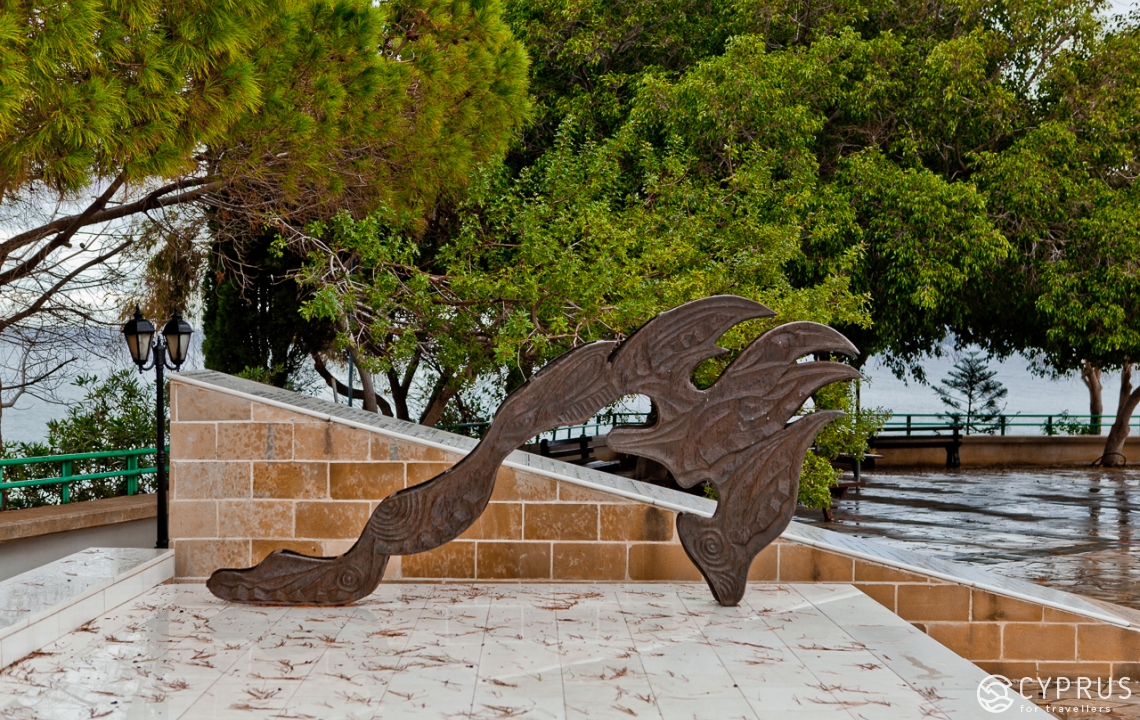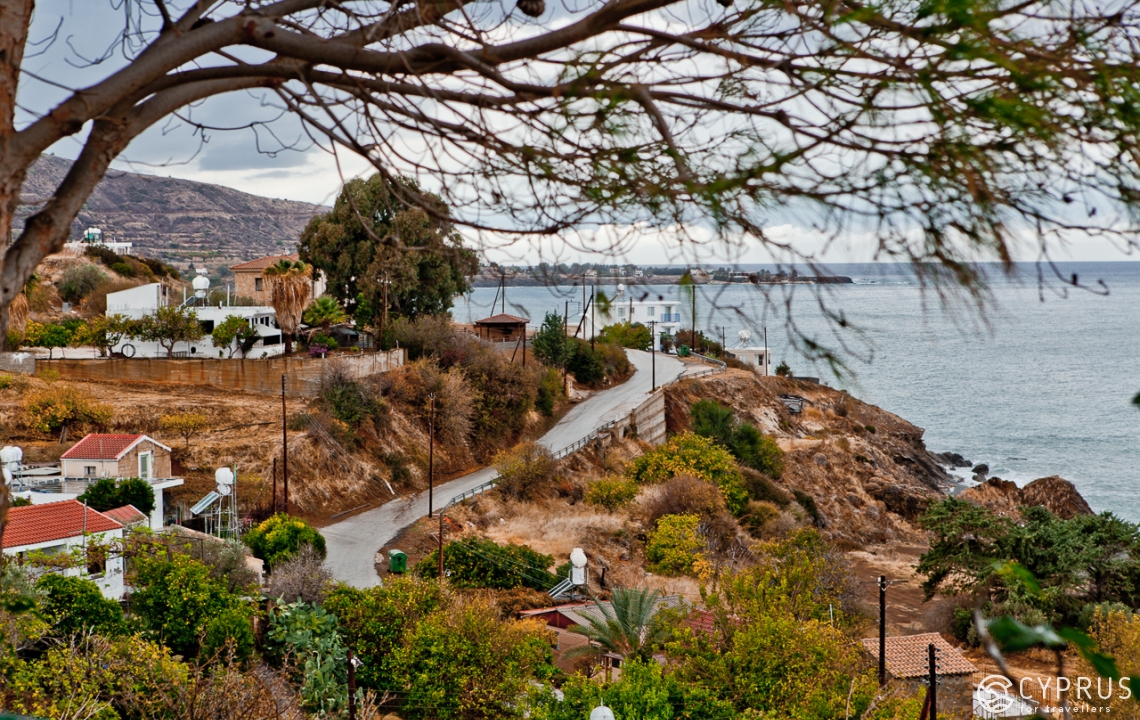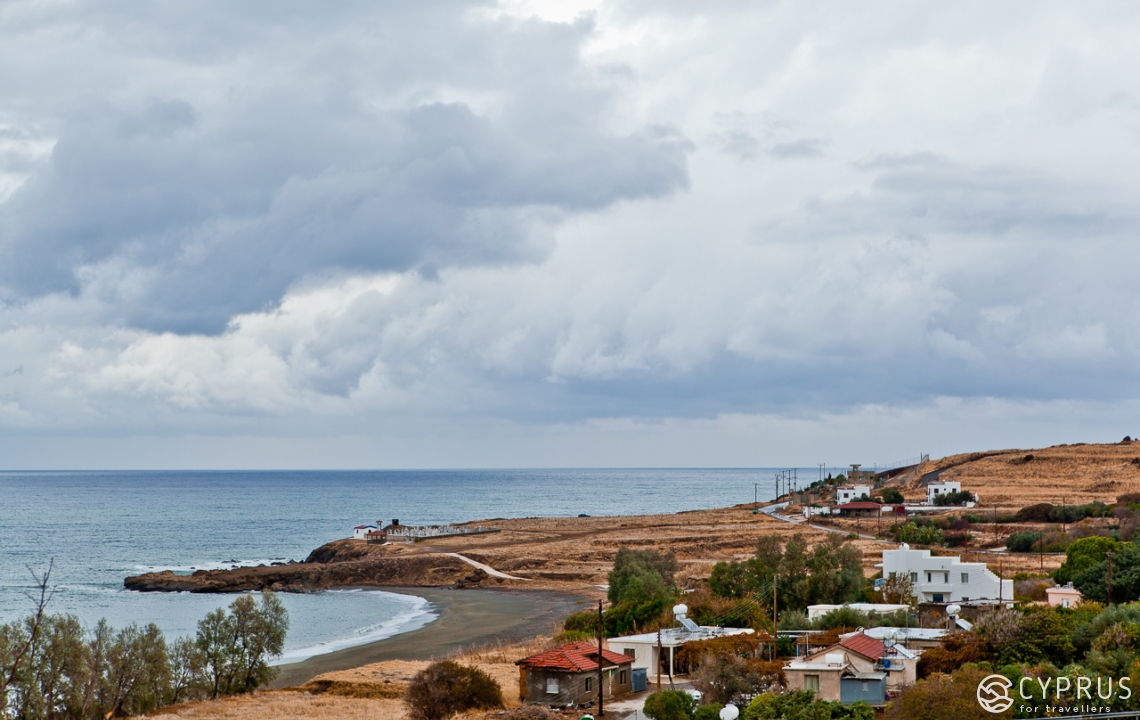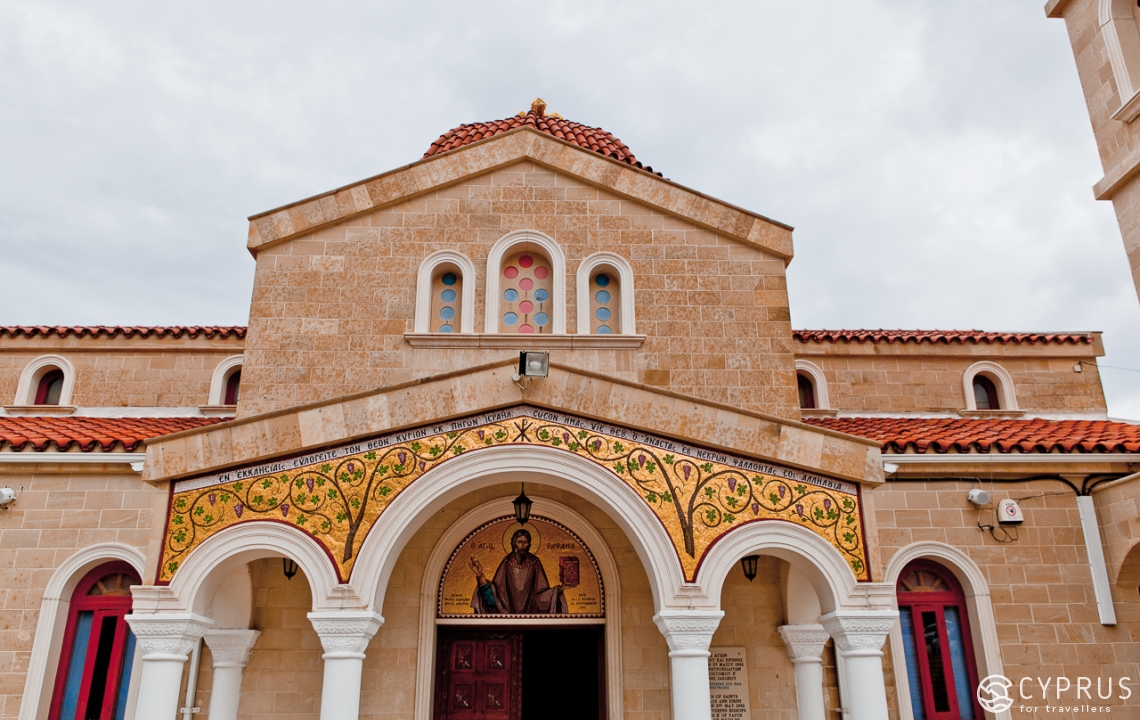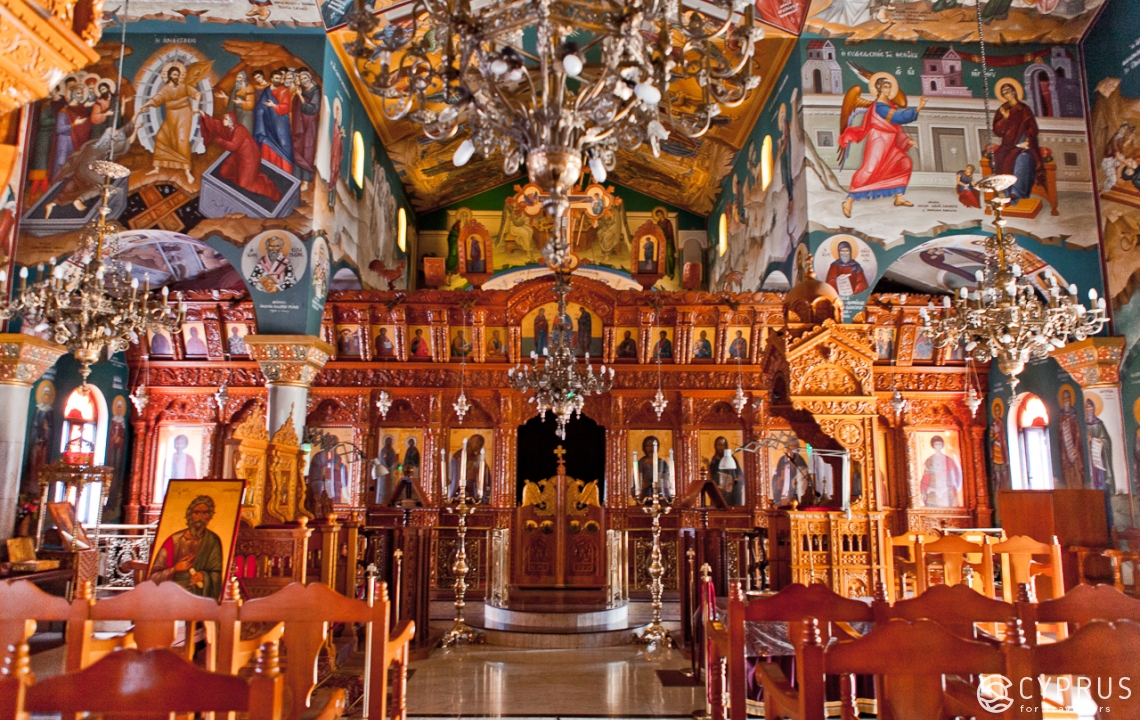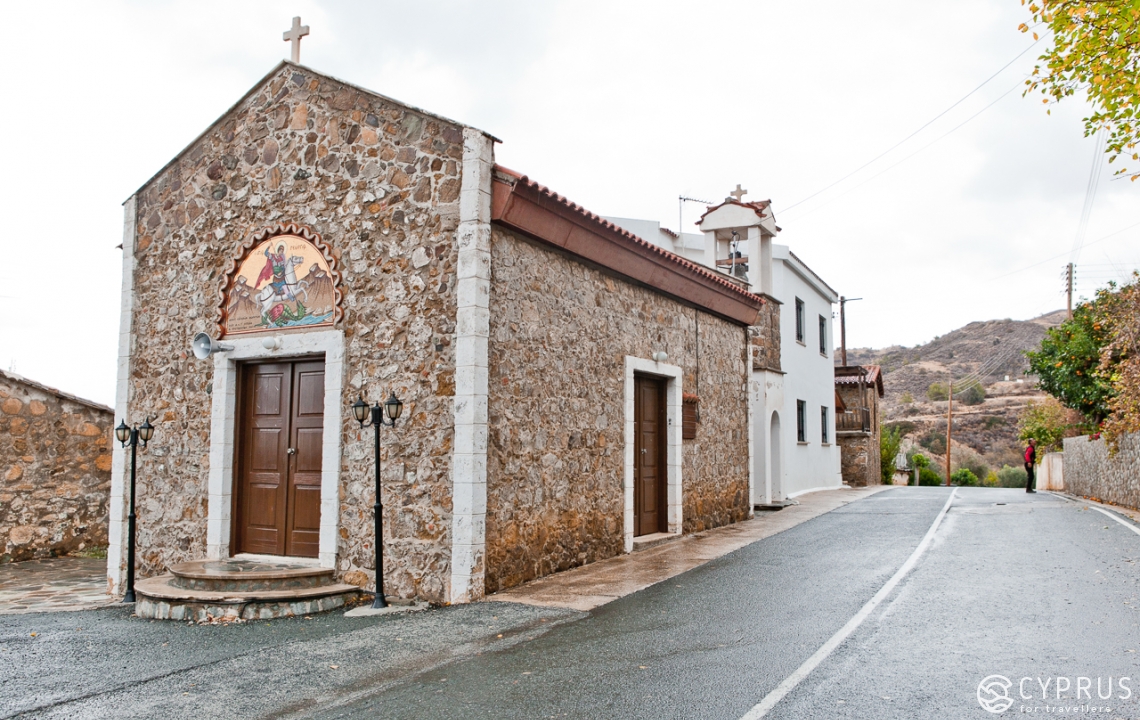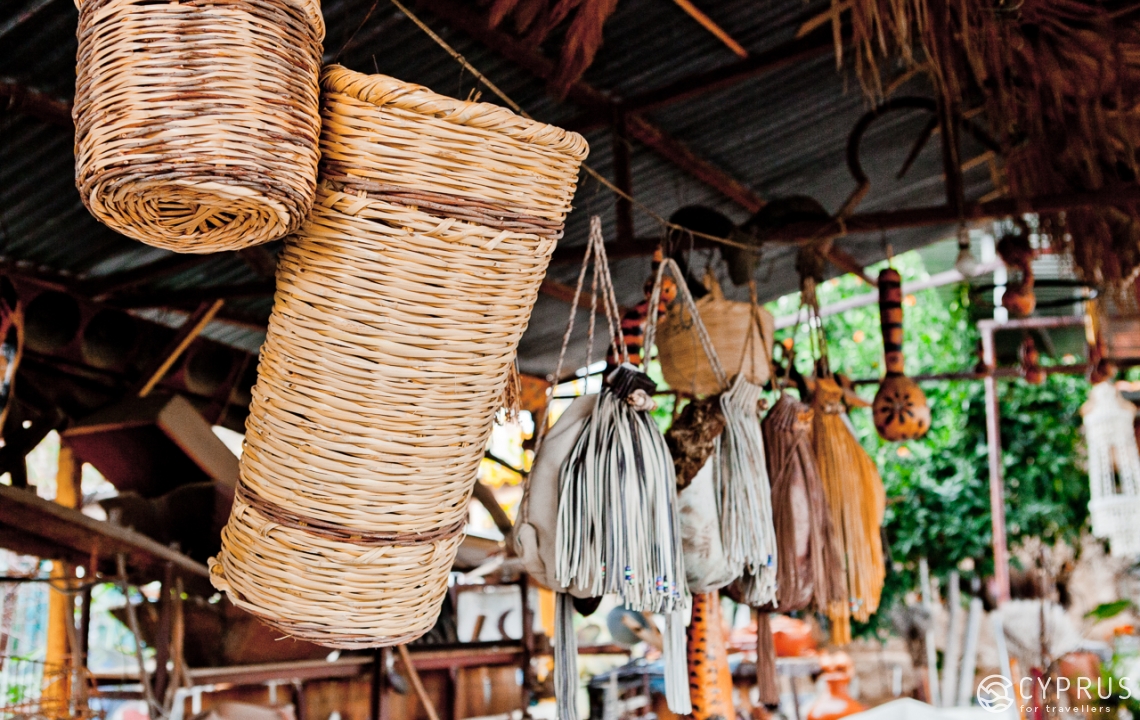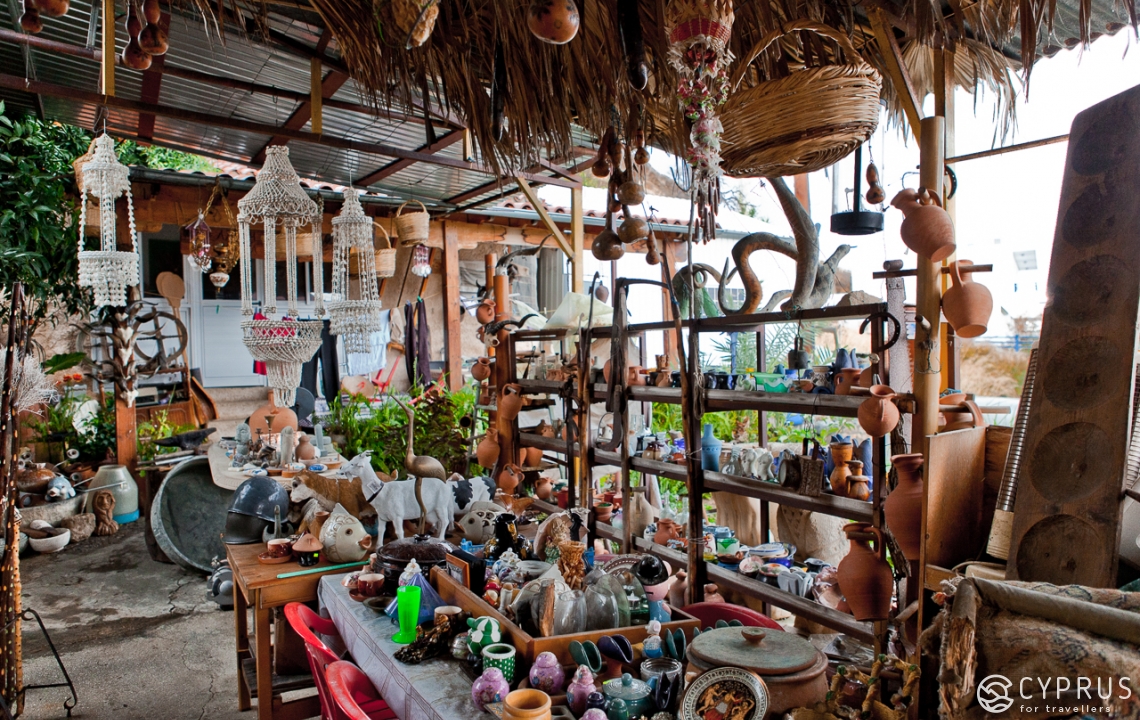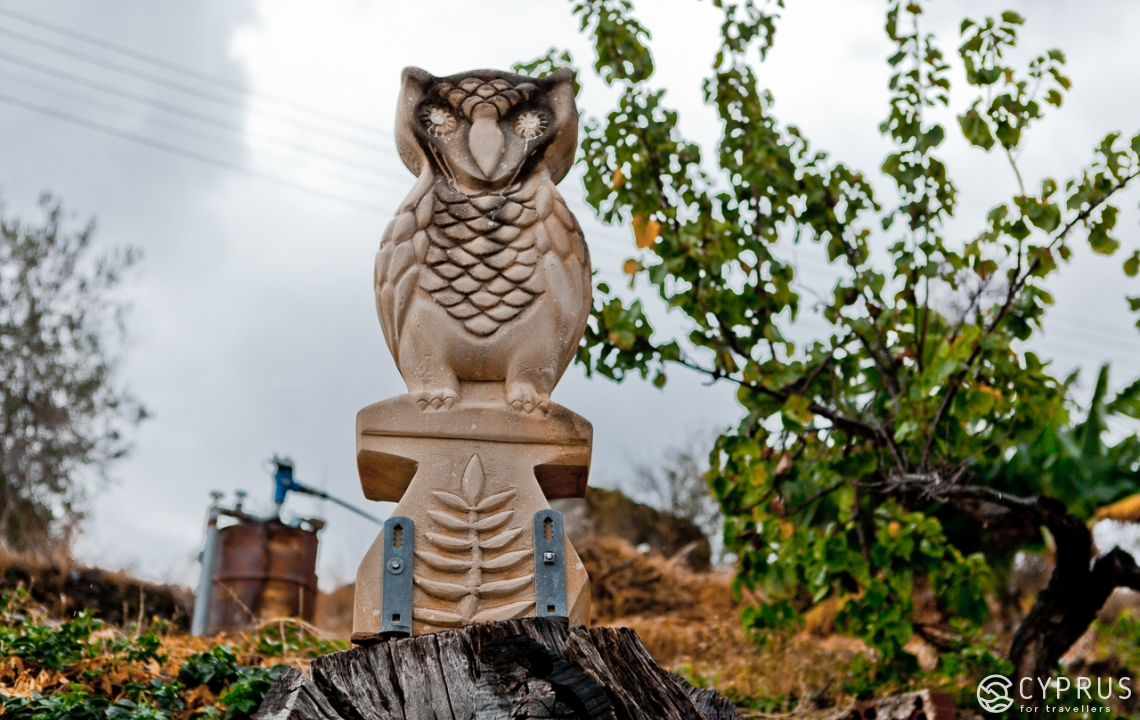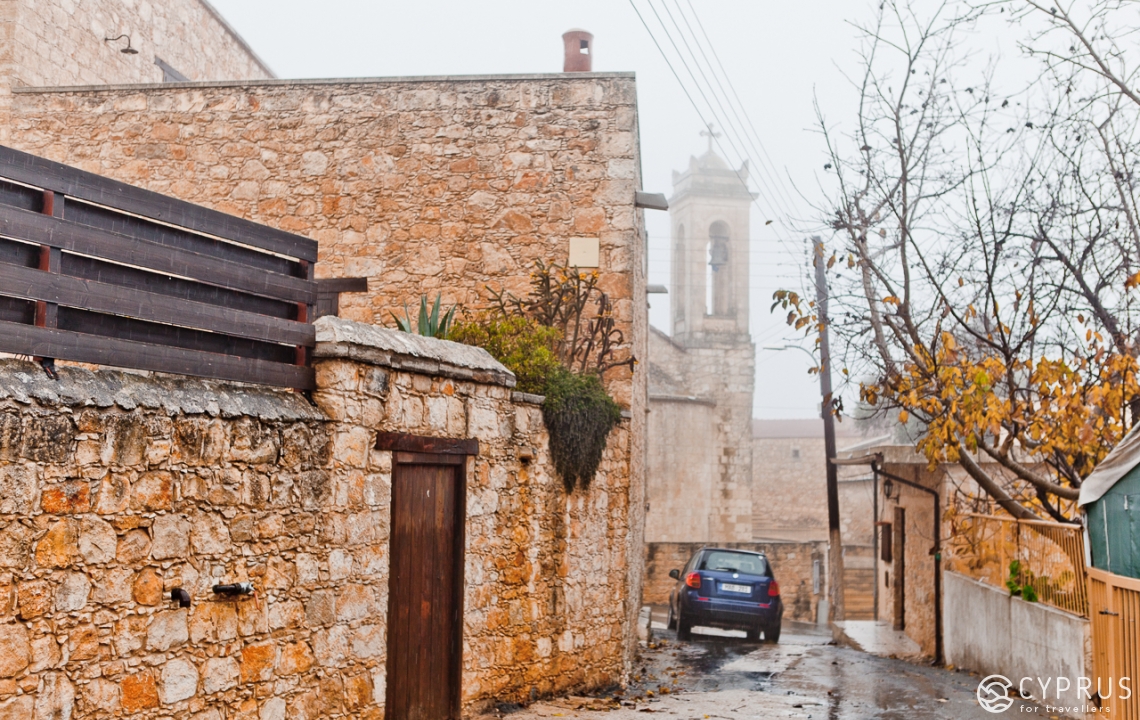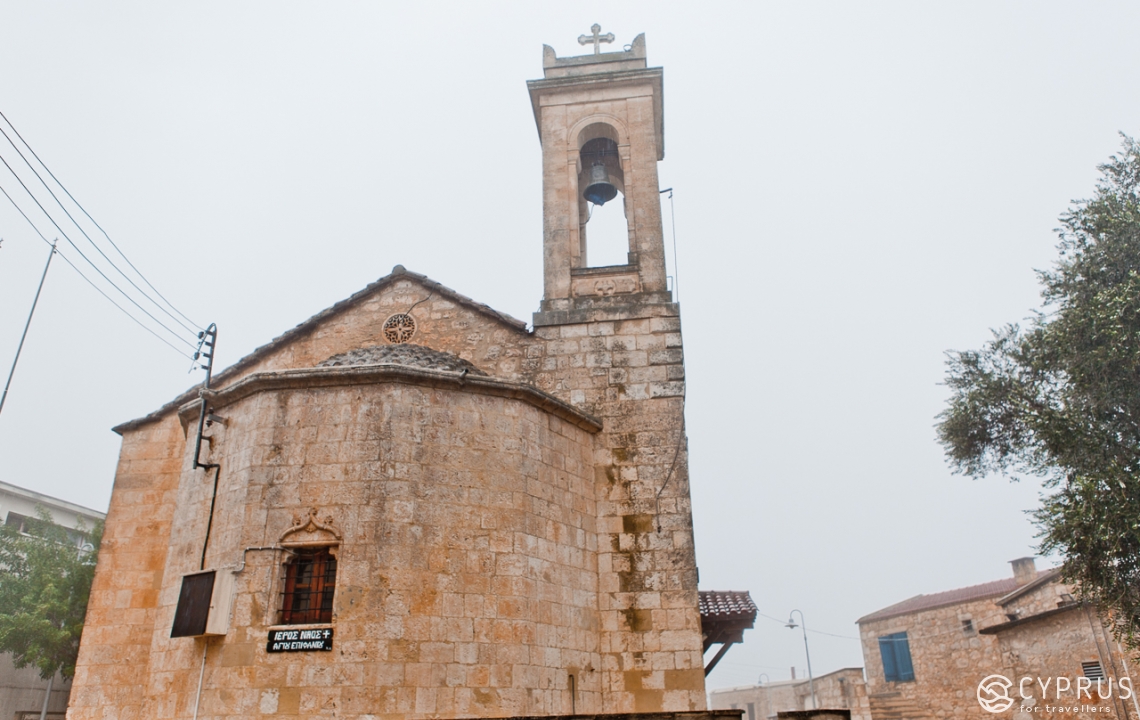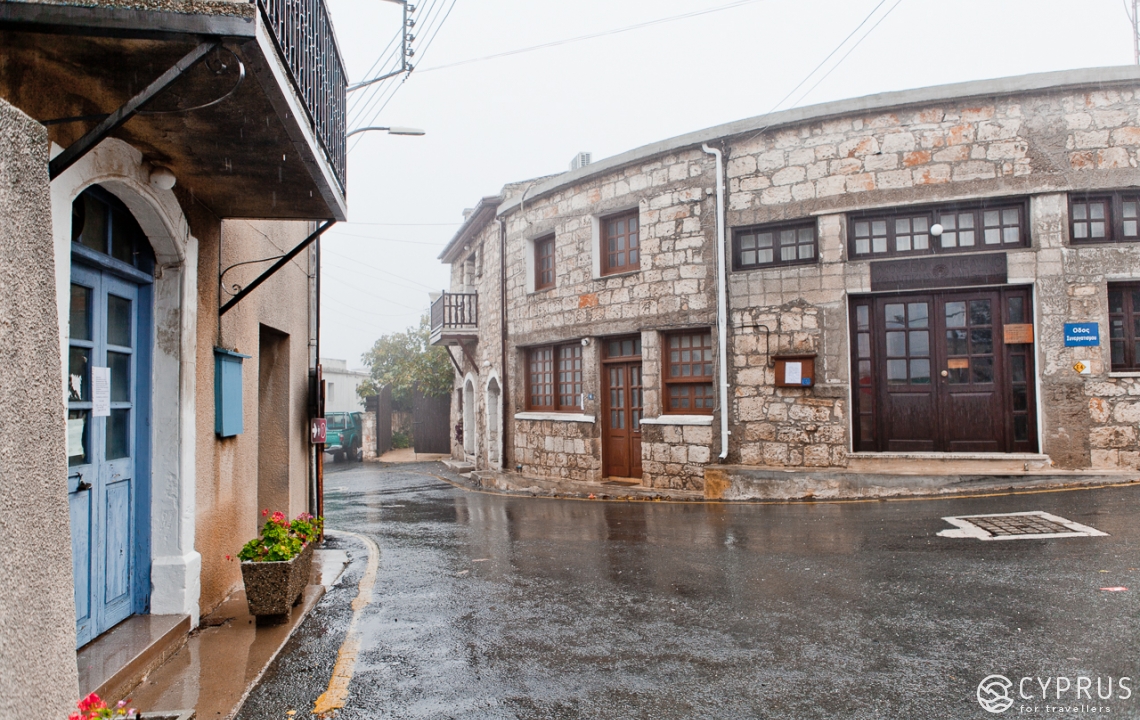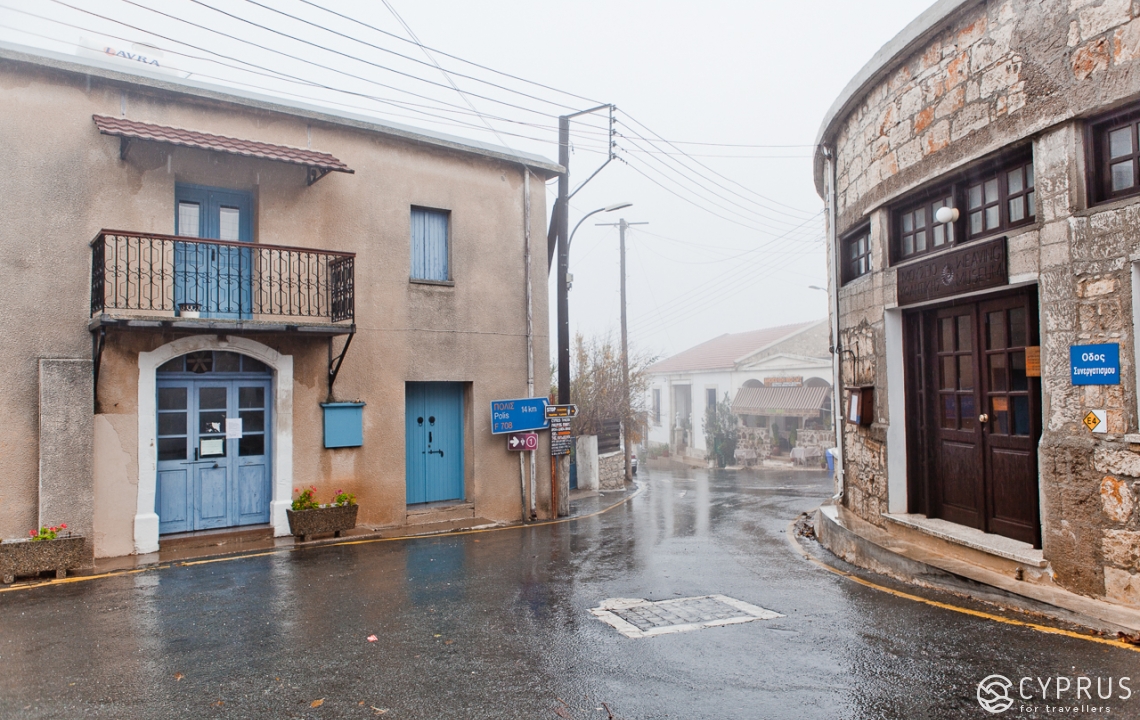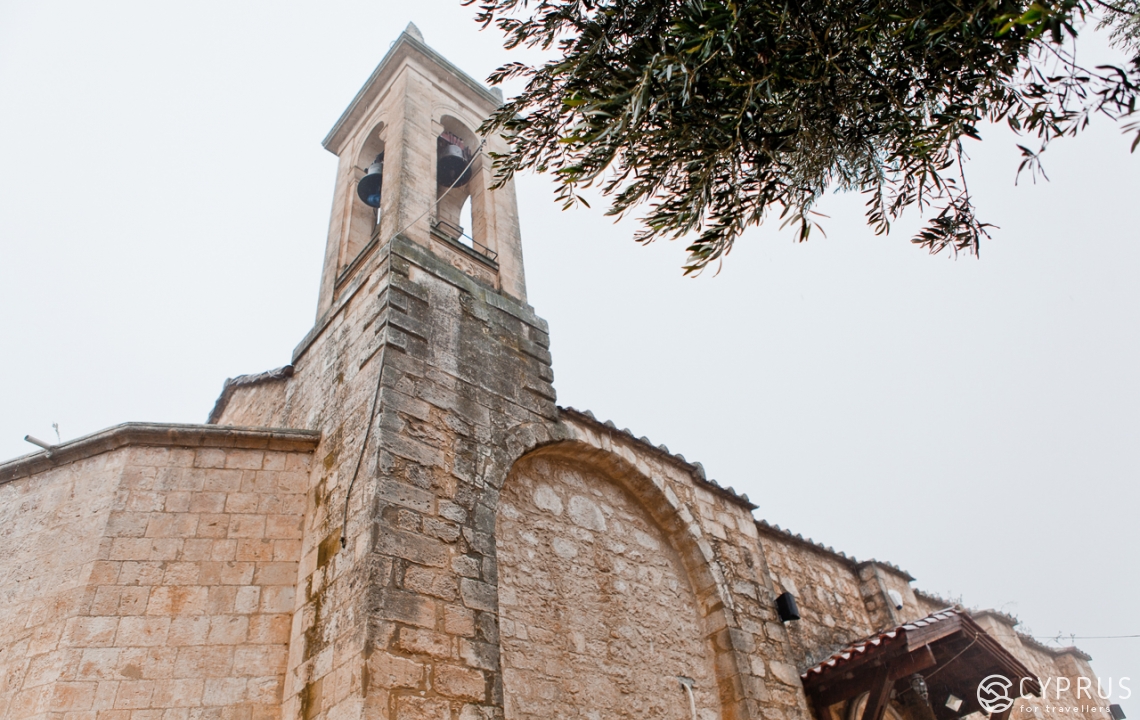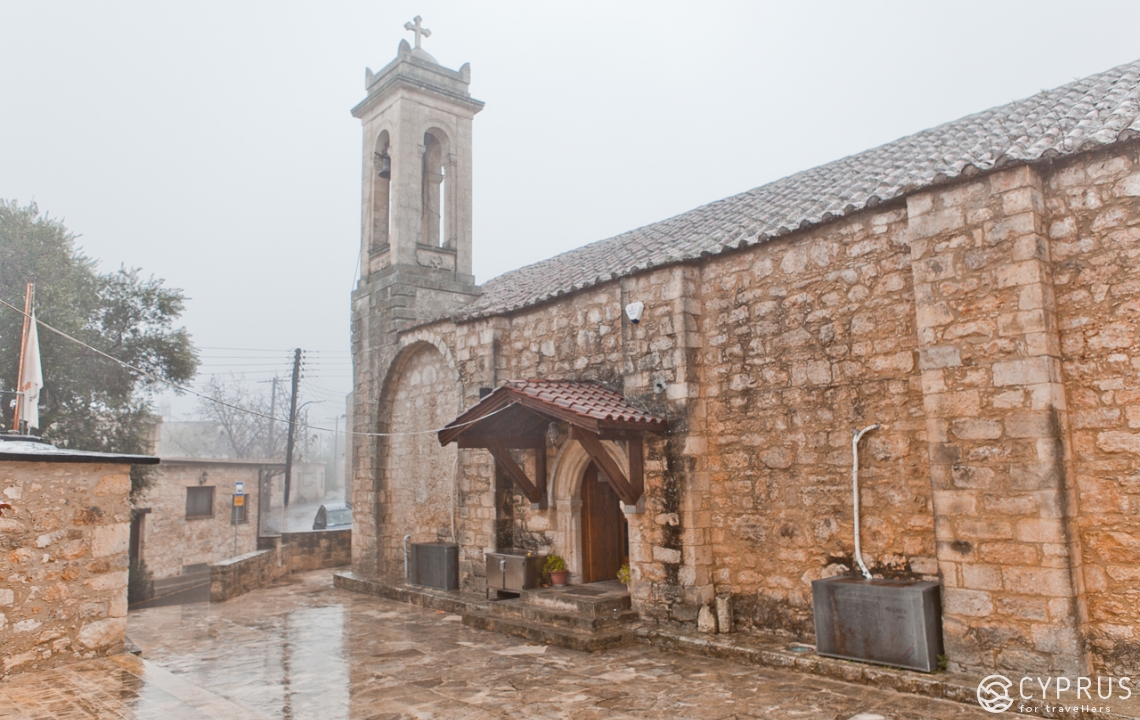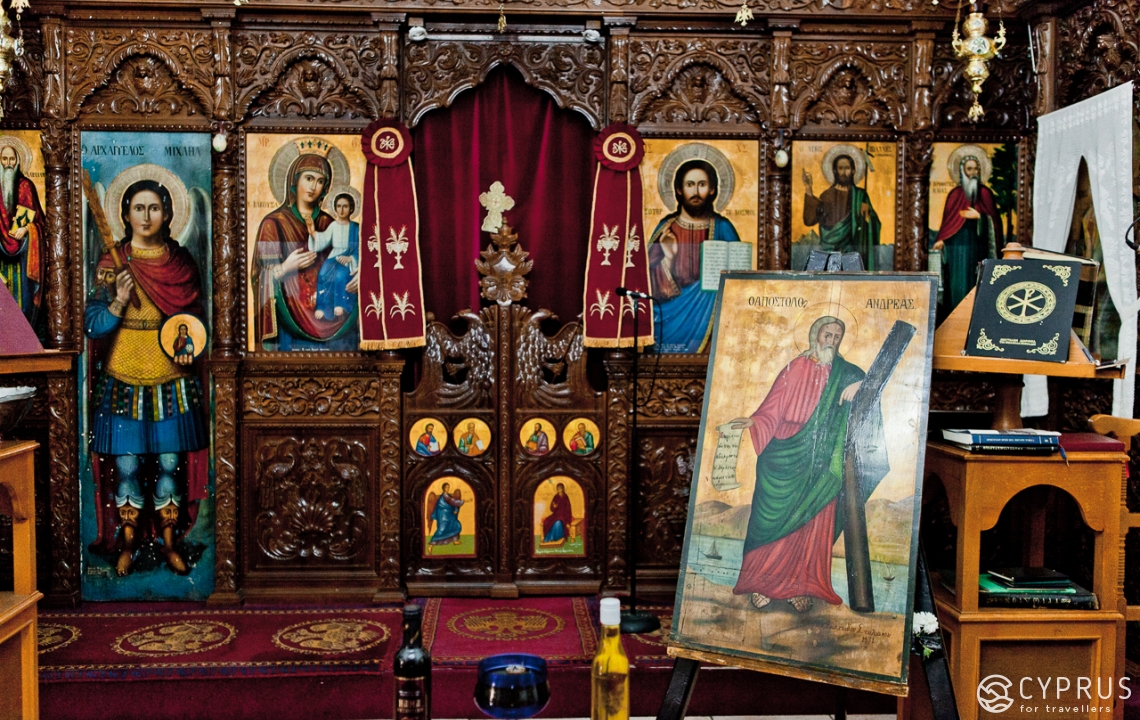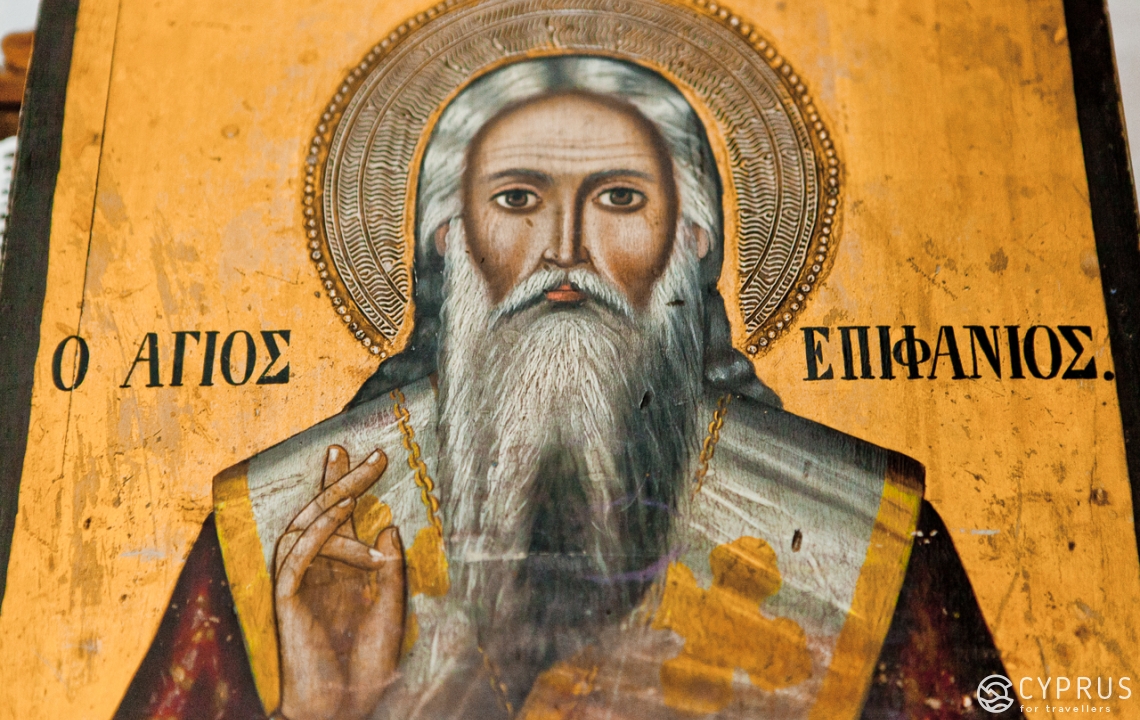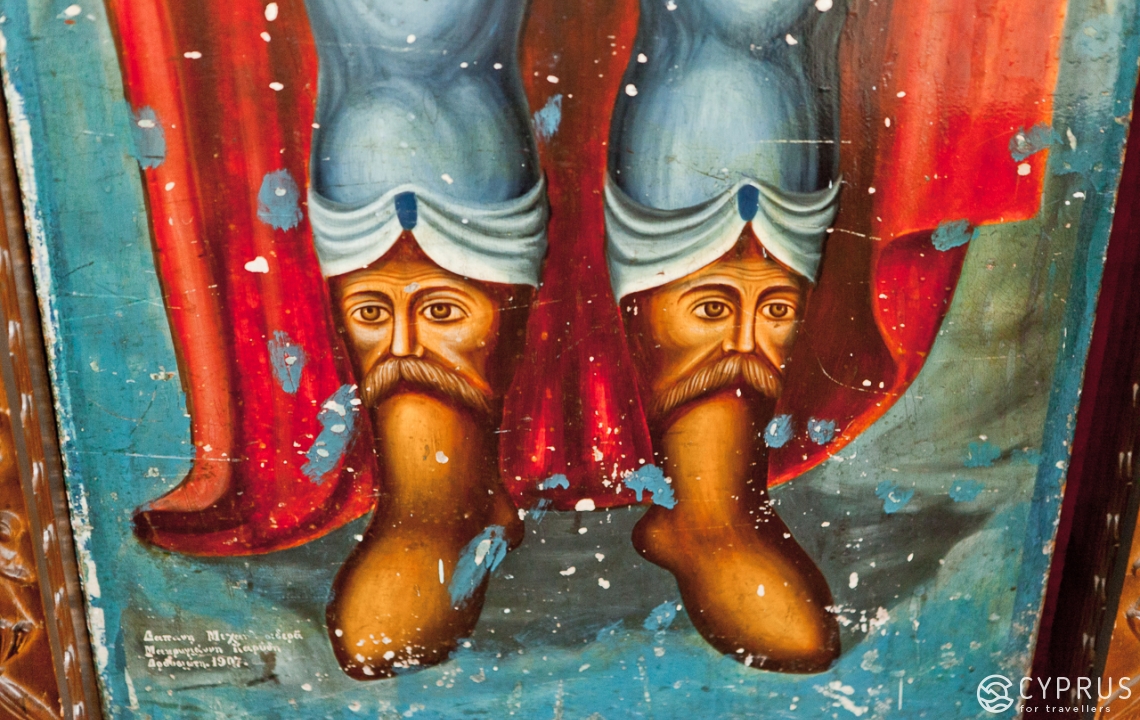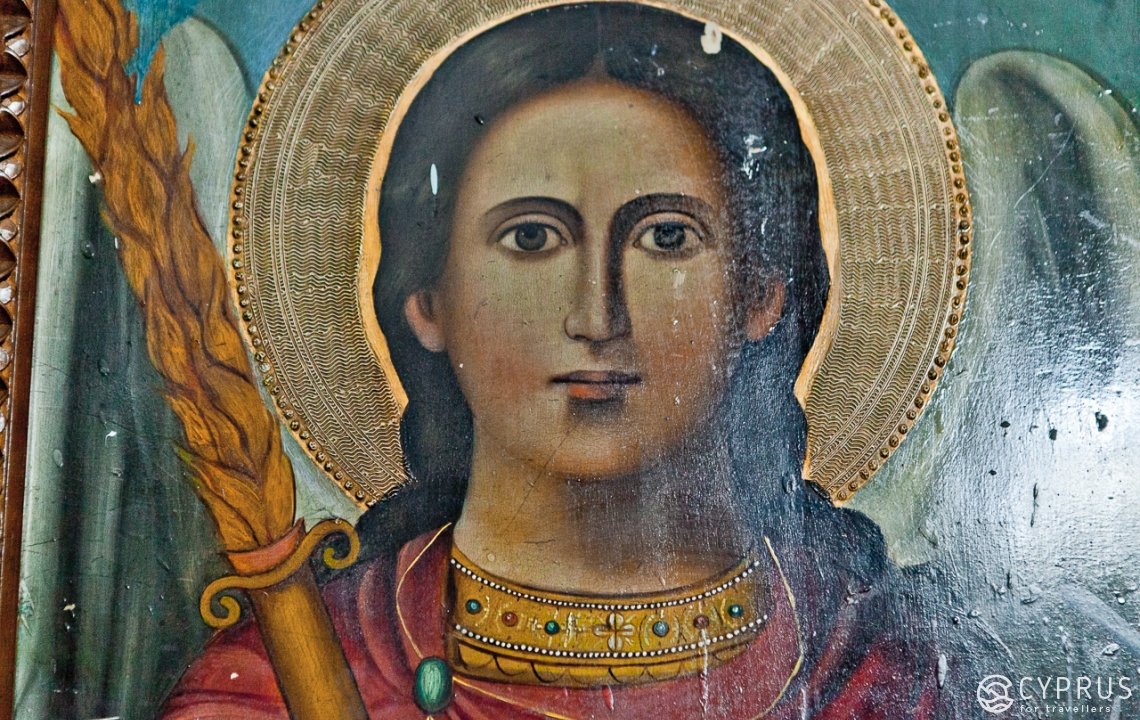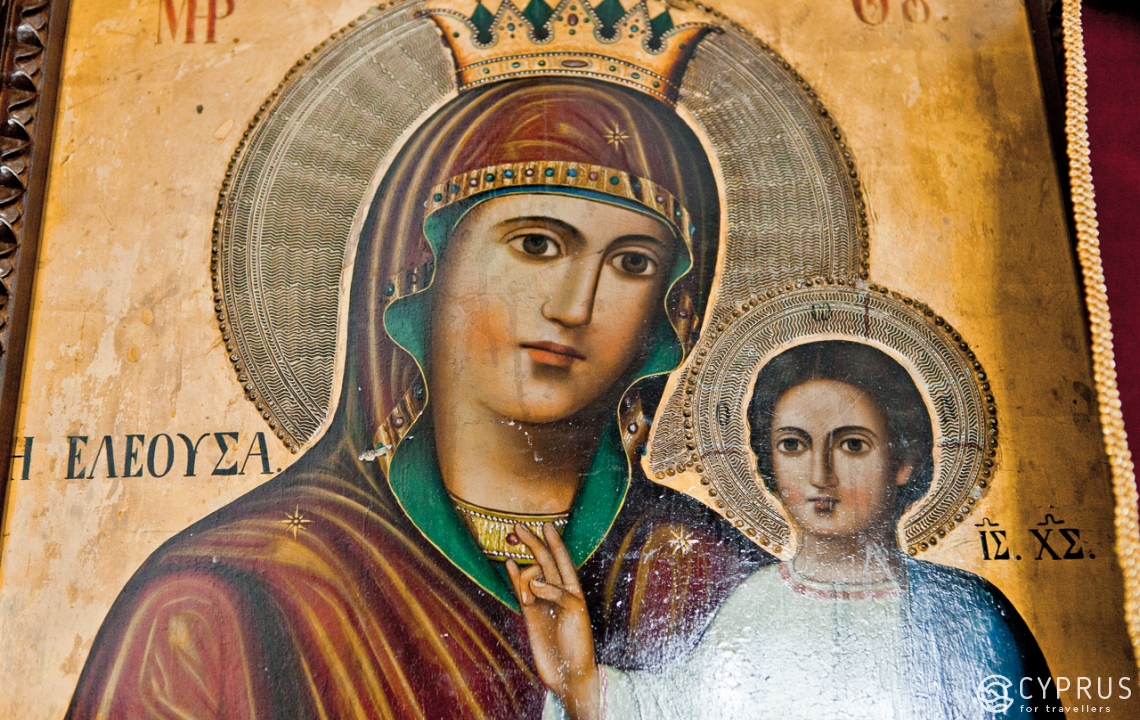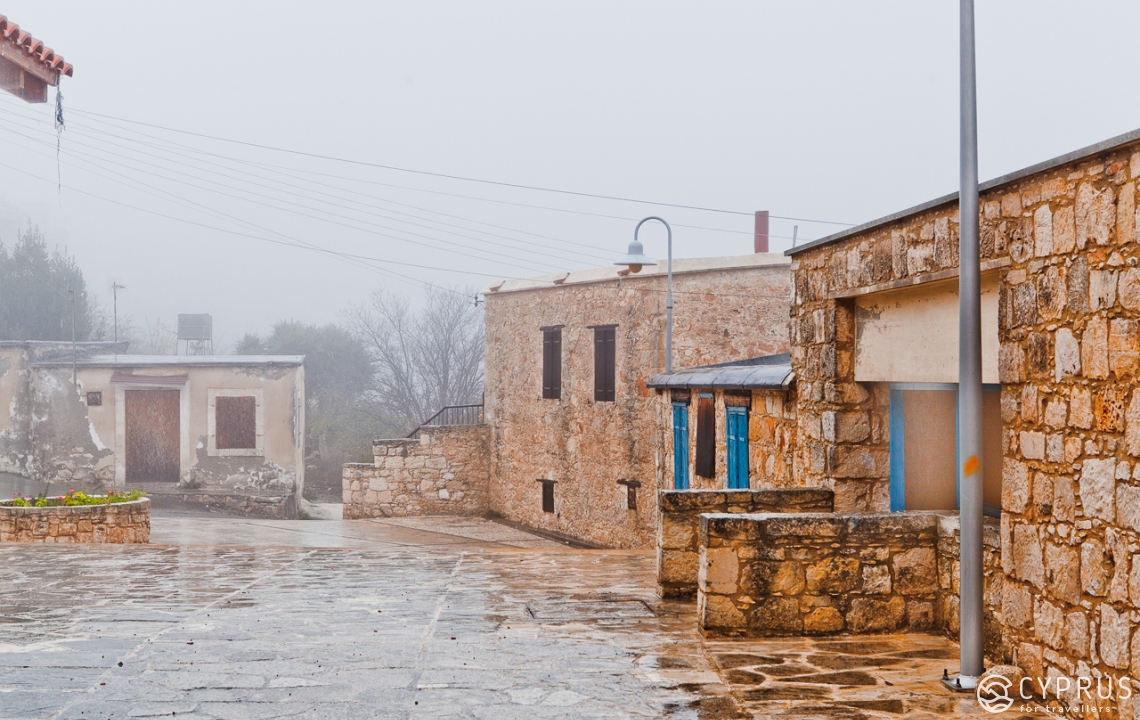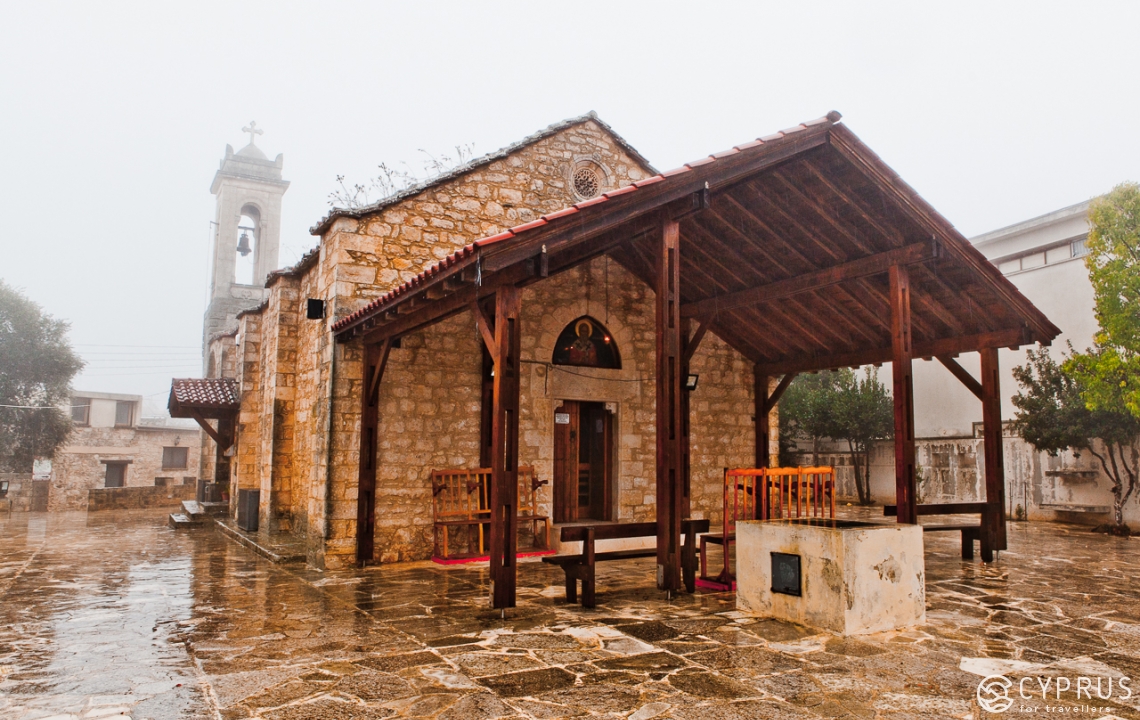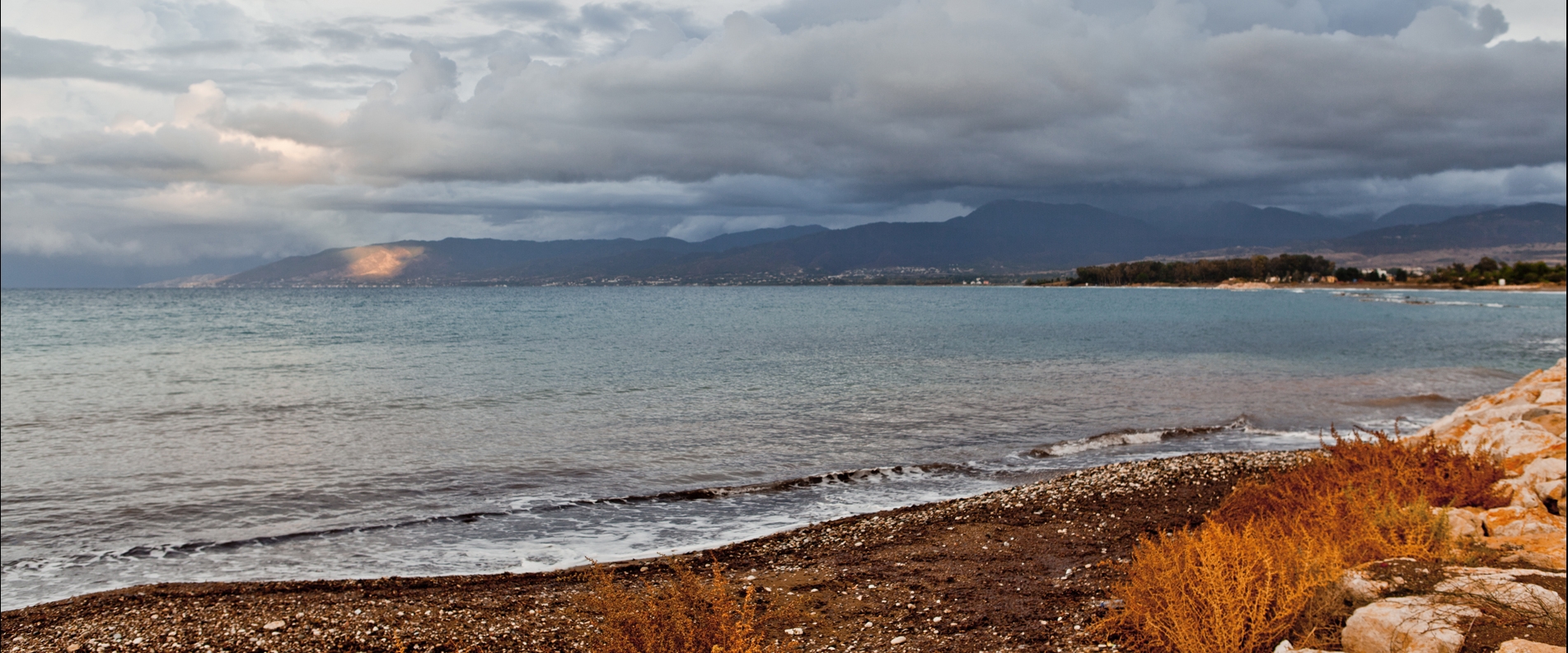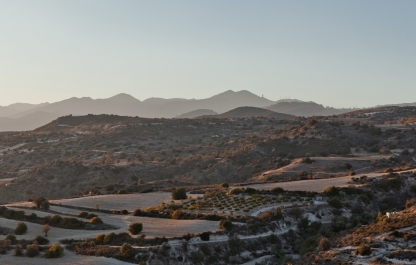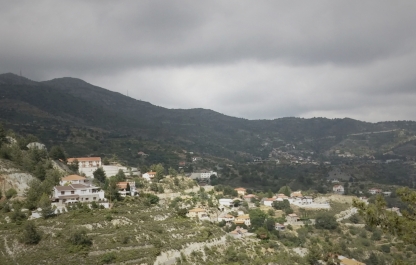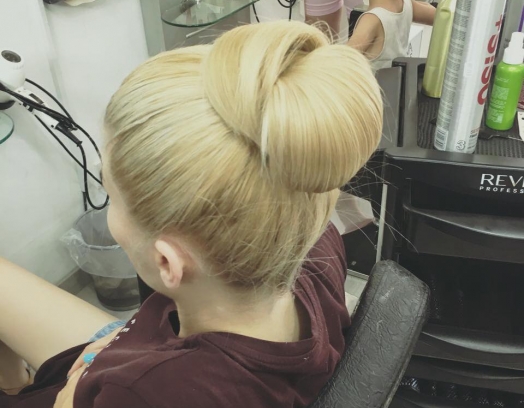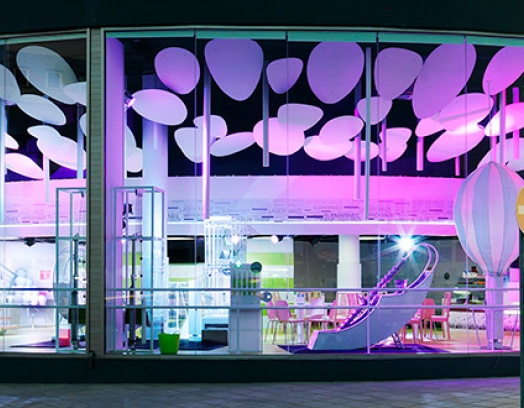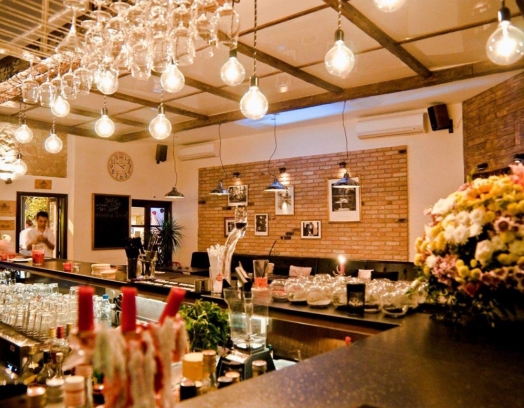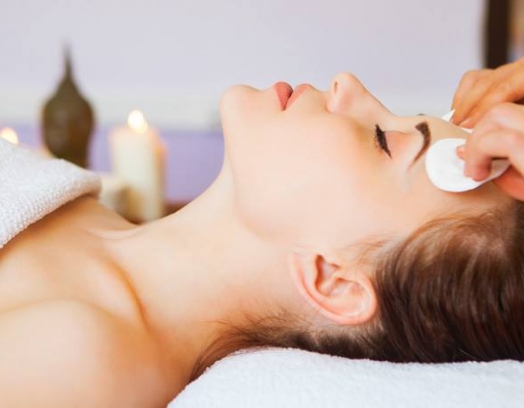We’ve long known that Cyprus is an island that delights in all seasons. Therefore, the idea of conquering the Akamas Peninsula (or rather, surrendering to its beauty!) on the last day of autumn, setting off to face the unknown roused our spirits. I have to admit that on the days we chose, the weather had suddenly decided to test our resolve. The cool, albeit sunny Cypriot days abated and our explorations were fated to be accompanied by a howling wind, thunderstorms playing out at sea, and persistent rainfall only giving us respite for a couple of hours at a time. However, the road ahead lured us on with new encounters and wonders, the wildlife had been nourished by the showers and its colours seemed to appear brighter. It was the perfect time to go!
Our main stops were Paphos – Skoulli – Steni – Polis Chrysochous and Latchi – Neo Chorio and Aphrodite Beach – the Baths of Aphrodite and the nature trail – the coastal villages of Chrysochous Bay – Drousha (Laona District) – Pegeia – Paphos.
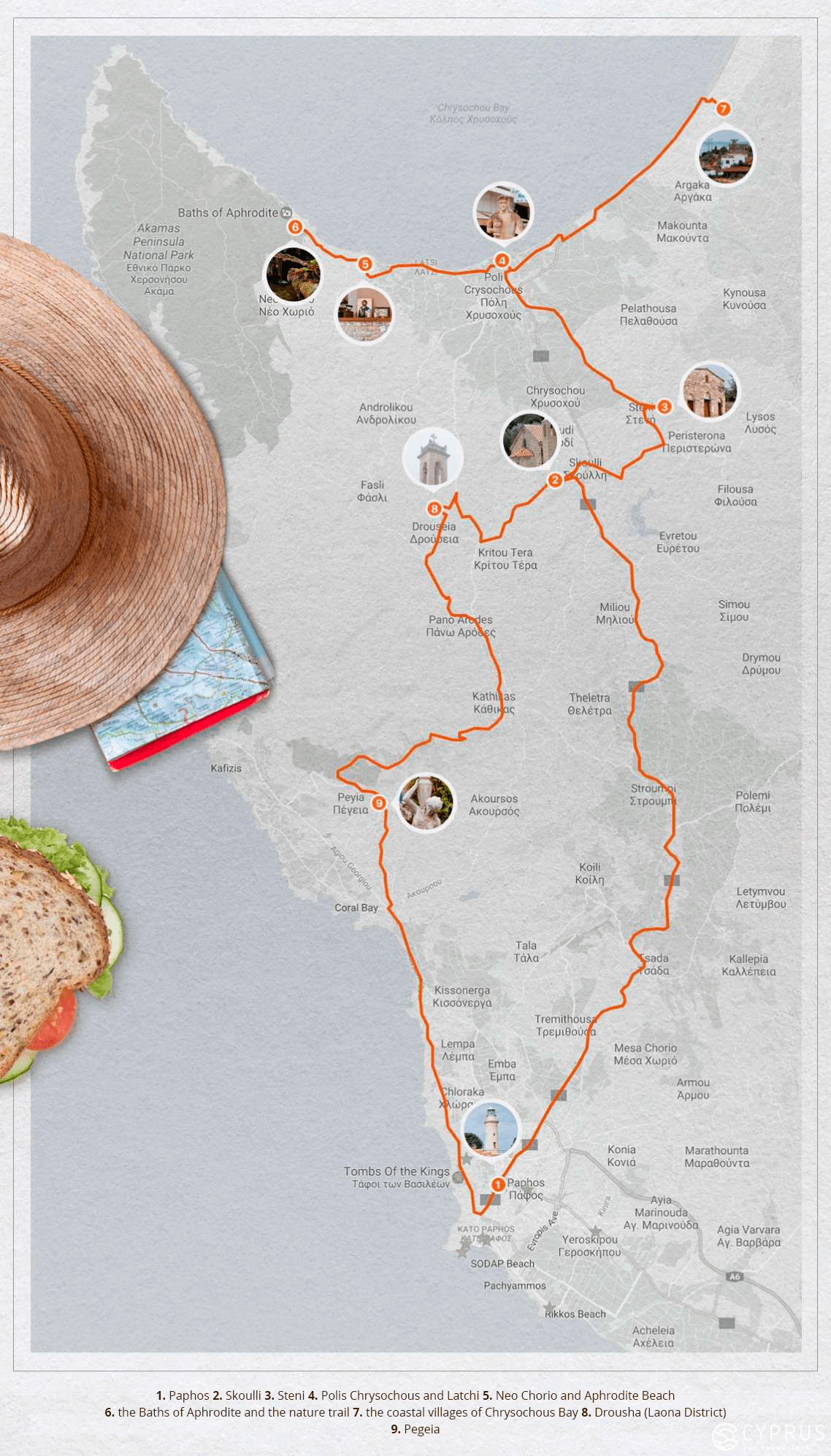
Leaving Paphos in the morning, we headed straight for Polis Chrysochous passing a few villages as we made our way along the meandering road through the breath-taking hilly landscape.
The first, Skoulli, will fire your imagination with its amazing decoration. You’ll see beautiful ceramic tile murals with incredibly intricate and diverse images on the stone and concrete walls along the roads. If you have time, stop and take a look at them. There are also wonderful views from the local church of the Archangel Michael. Here’s a little information about the one-nave church. It was built at the turn of the 15th-16th centuries in two stages. The partially preserved frescos inside depict scenes from the life of Jesus Christ. In the altar, there are images of hierarchs of the Apostolic Succession: Saint Spyridon, Saint Chrysostom, Saint Basil, Saint Gregory, Saint Epiphany and Saint Nicholas.
Citrus fruit, pomegranates, olives, tobacco, and vineyards are cultivated in this area.
The next village that is particularly worth stopping by and seeing is Steni. It is an old settlement (historians are still debating its origins: either the 16th or 12th century), which had new life breathed into it by the care and love of its Mayor, Mr. Lampidis, his team and, of course, the local residents. Its modernity, amenity, and interesting architectural designs are impressive and have made it appealing for both the villagers and tourists. You can find more detailed information on Steni in our article entitled Villages of Cyprus. For now, we're just pointing out the must-sees on the way to the «main goal». We’re still on the road to Akamas, after all!
Driving into Steni from Paphos, the first thing you’ll see along the main road is the main square to the left. It’s small but has been successfully modernised. To the right, you’ll find plenty of parking, and across the square there are cafes and restaurants. The square is the central point and the focus of community life in the village and resembles something of an open-air stage during national holidays and festivals. The modern building that is part of this ensemble is also multifunctional, modern and convenient. It houses the local history museum on the first floor (there are public toilets next door), as well as the mayor's office and the doctor's surgery, both of which are on the second floor overlooking the main road.
Even if you’re short on time, there are two places in Steni that are definitely worth a look: the Steni Museum of Village Life and the St. Trifon Church. If you’re in town with plenty of time on your hands, you can read more about the extraordinary history of these places here. You’ll probably even want to spend more time here.
The Museum of Village Life
Admission is free and the museum welcomes you with their sign in three languages. If you wish, you can always make a donation for the upkeep of the collection. The exhibition is structured uncharacteristically for Cyprus but it is easy to look around. There are several rows of displays containing items that are so diverse and numerous that it is good idea to do a few repeat trips round. The artefacts are either arranged on the floor or hang from the ceiling. You’ll see traditional homeware, dishes, works of applied art, crafts, the national dress of this area, fragments of home decor, old photos, farming tools and equipment, as well as samples of local rocks and mined minerals ... there is even a fragment of the stone wall of the house of one of the first priests in Steni, with a wooden front door (1844), a collection of coins from the period of British rule (1878-1960), and looms with samples of woven materials. We tried to figure out when some of the items were made ourselves and realised that «youngest» of them were no less than 70-85 years old.
The exhibition and collection might seem a little crowded, but it’s clear that they put it together with great care and love. Each item has its own place where it stands proudly among the others. A number of artefacts cast light on local crafts and manufacturing (such as the traditional moulding and drying of bricks from raw clay, straw and water). There are brief information points but if you wish you can borrow a guidebook at the entrance. That way you can wander around the museum, find the number of the exhibit, and read all about it… an interactive village experience!
There is also a map that shows where traces of ancient civilisations were found in the area.
Climb the inner staircase to the top floor where you can learn more about the typical details of wooden carved decor, look at fragments of shutters, baking tins for bread, and even combing mills — all of which originate in Steni.
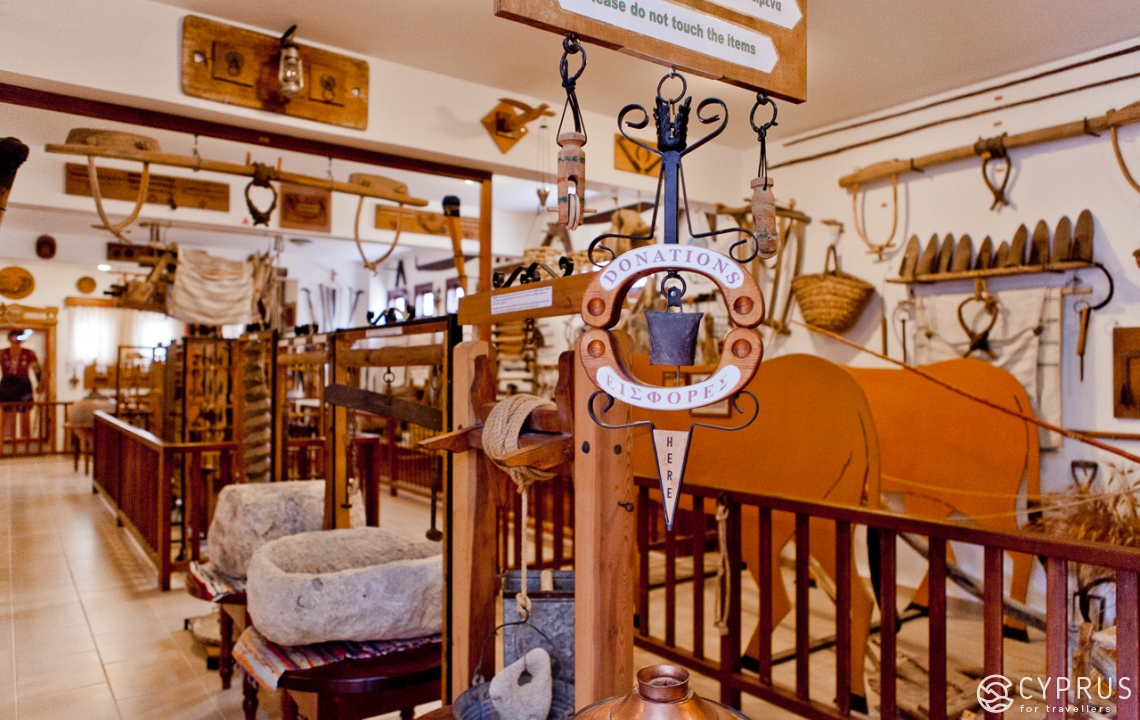
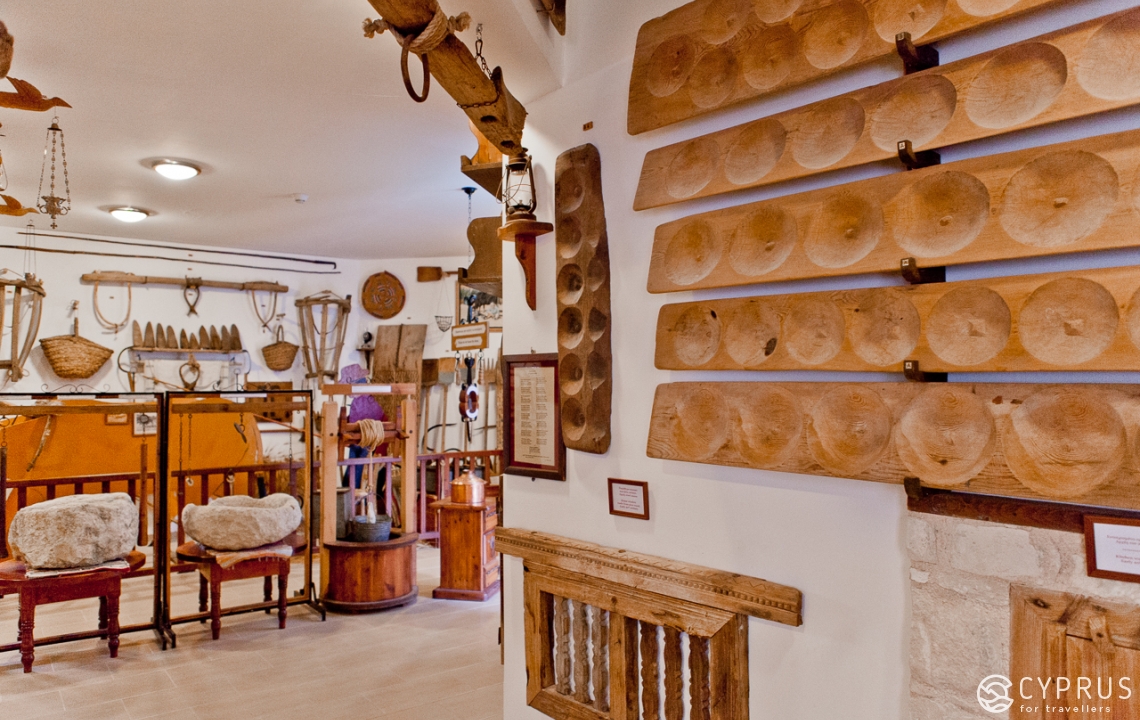
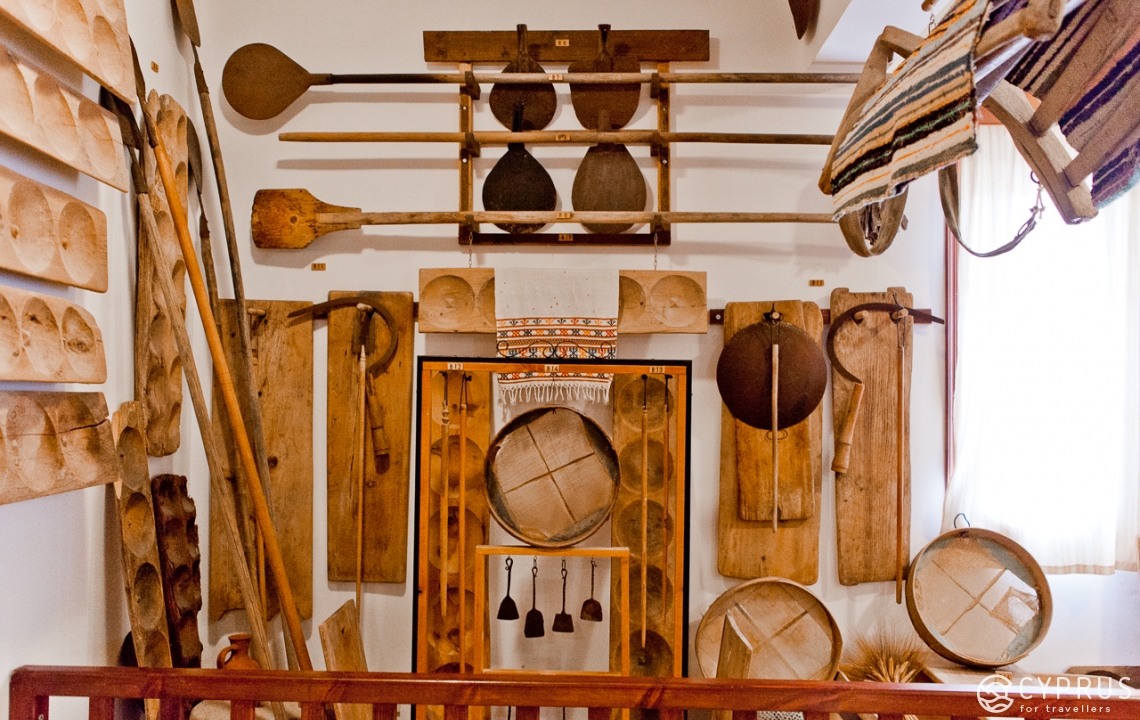
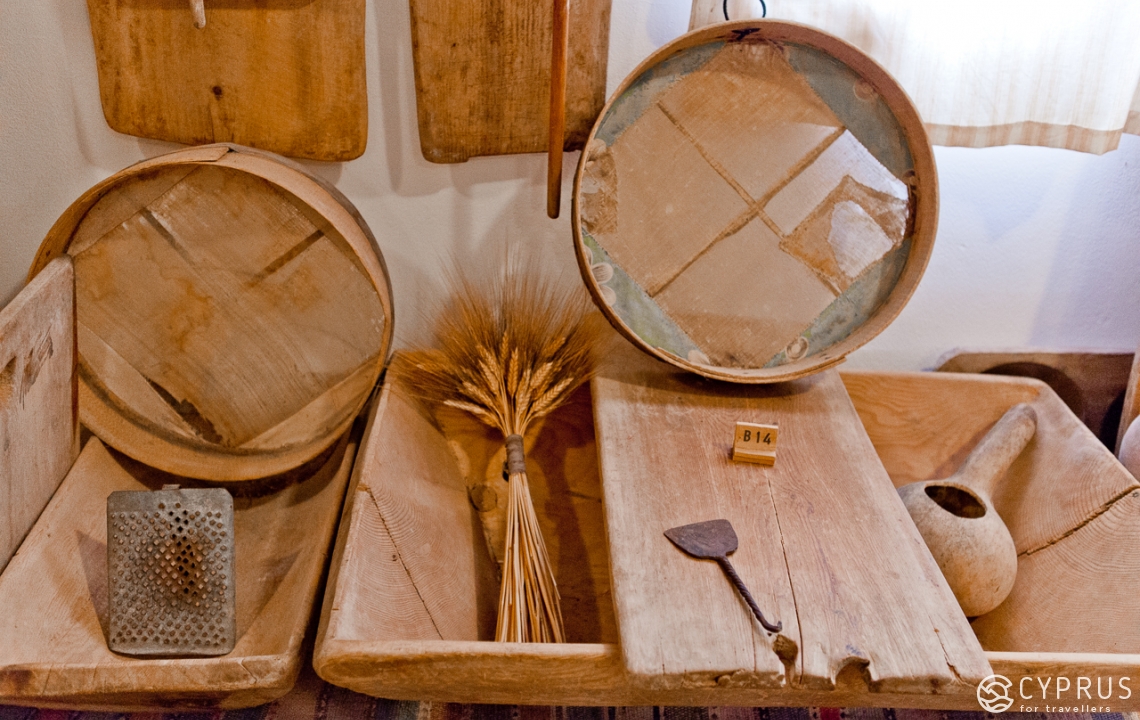
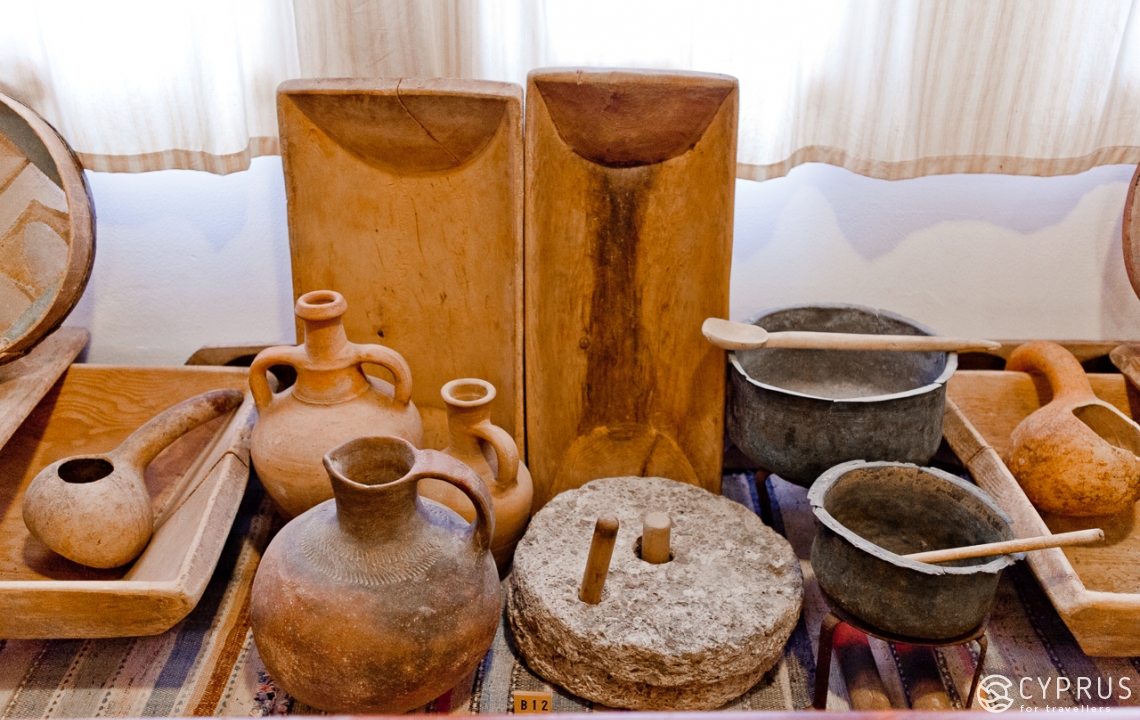
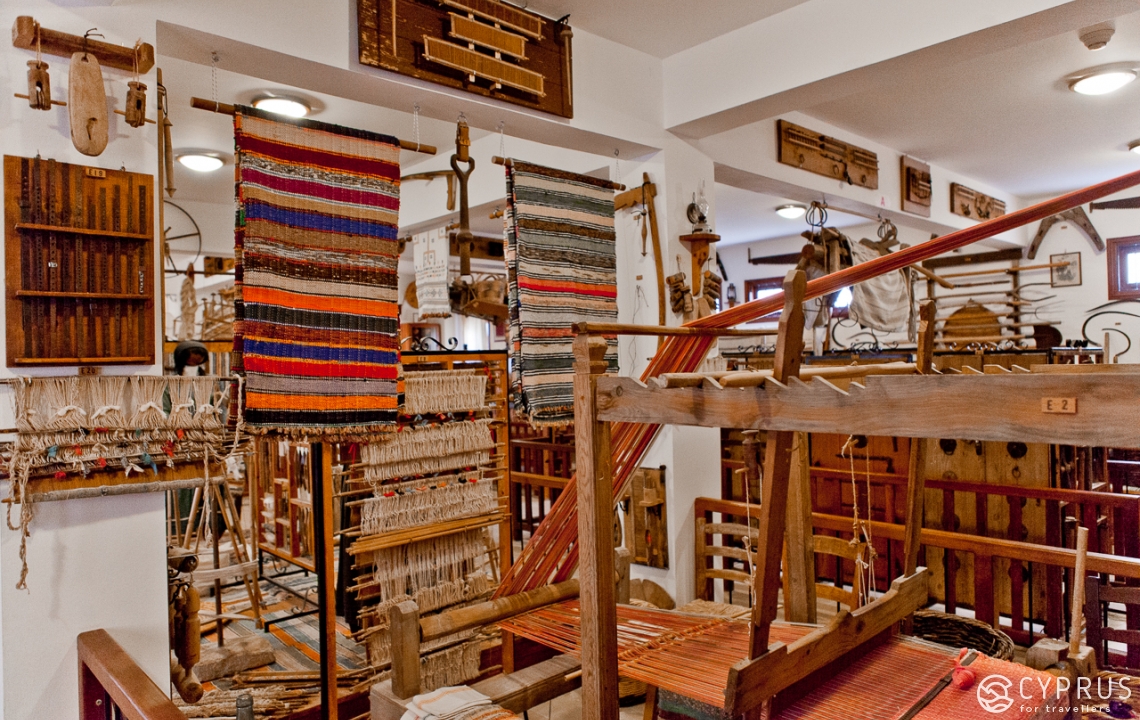
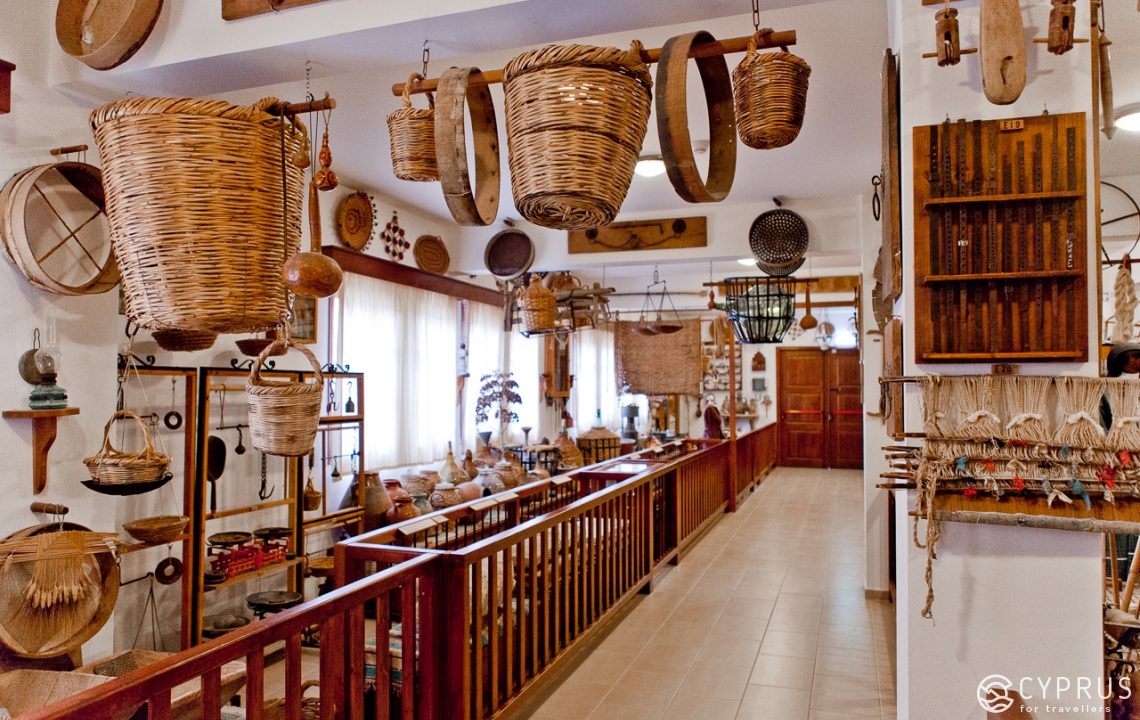
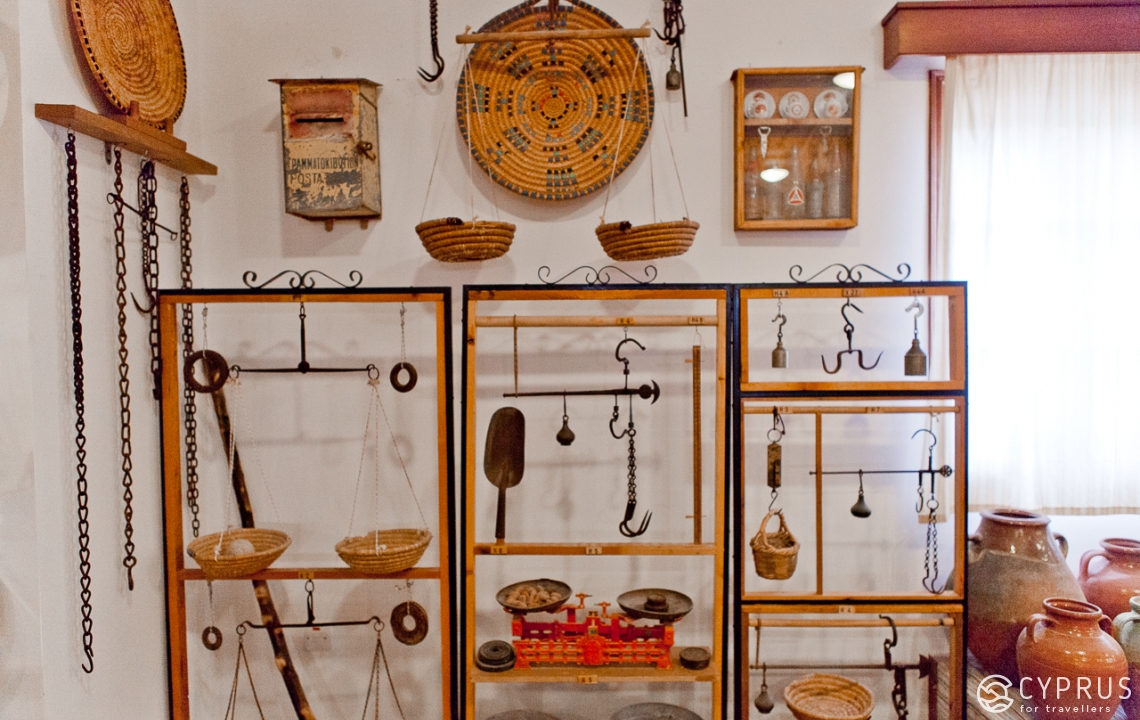
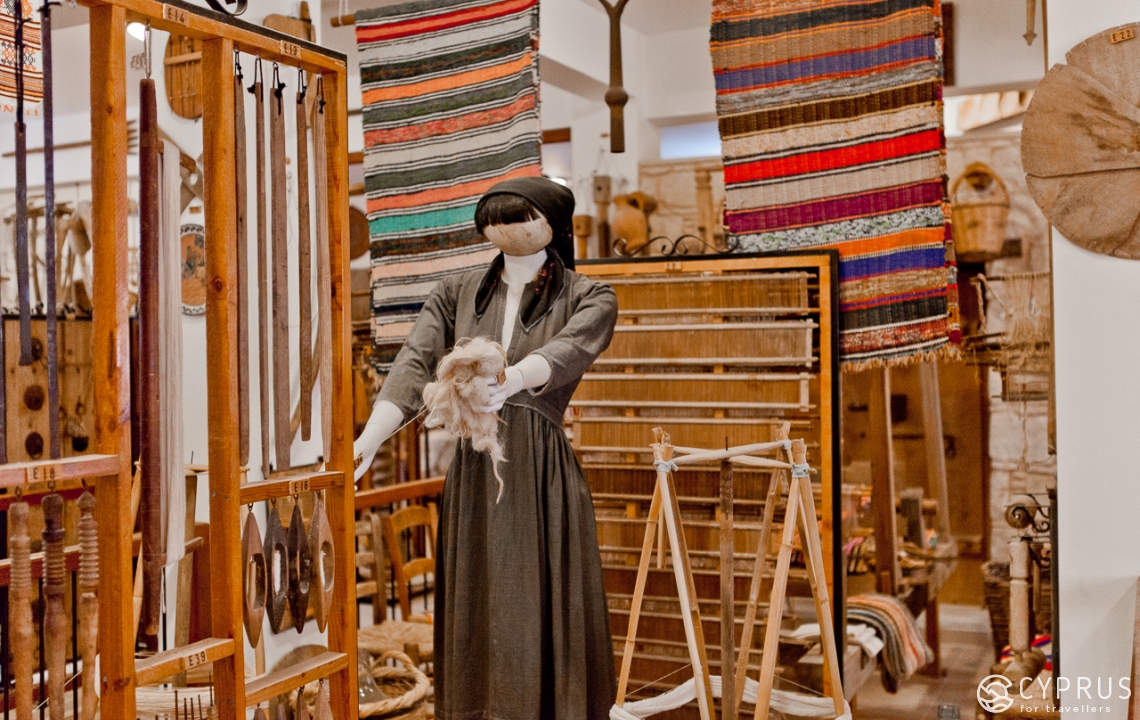
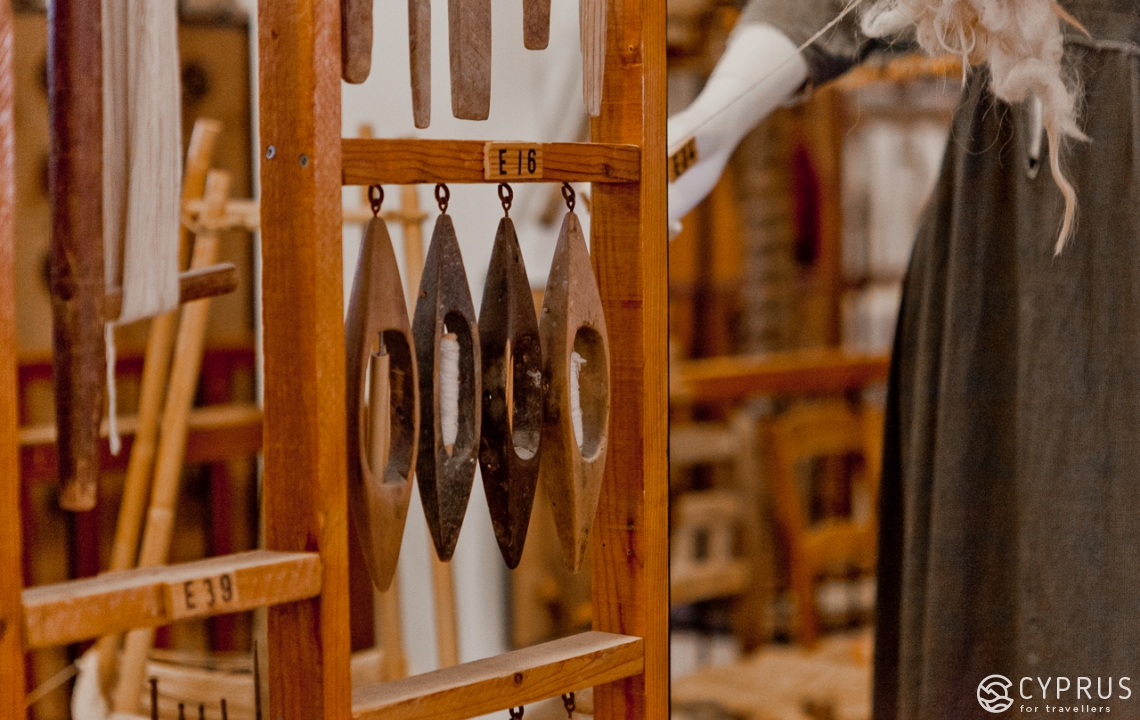
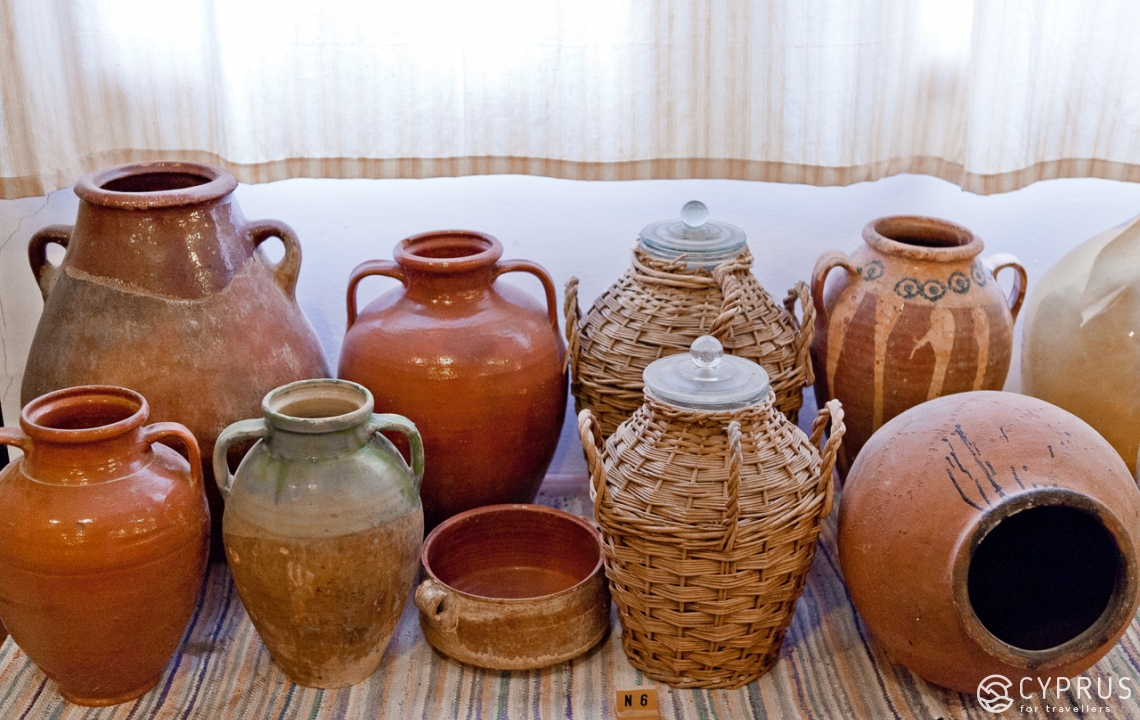
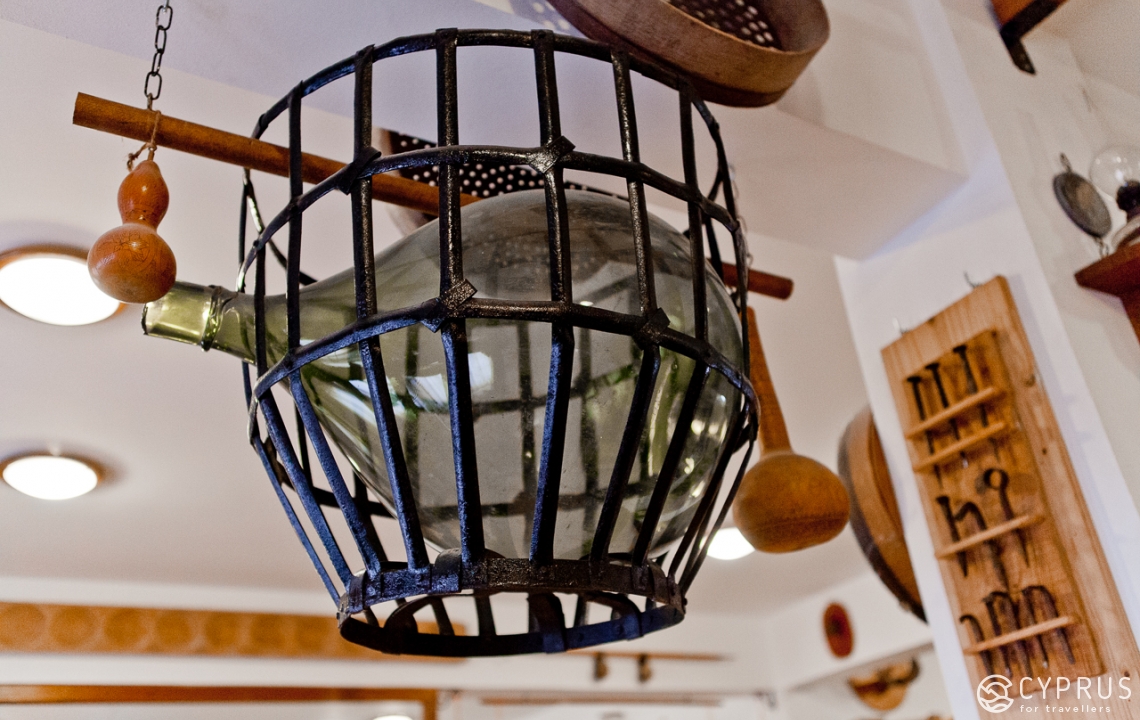
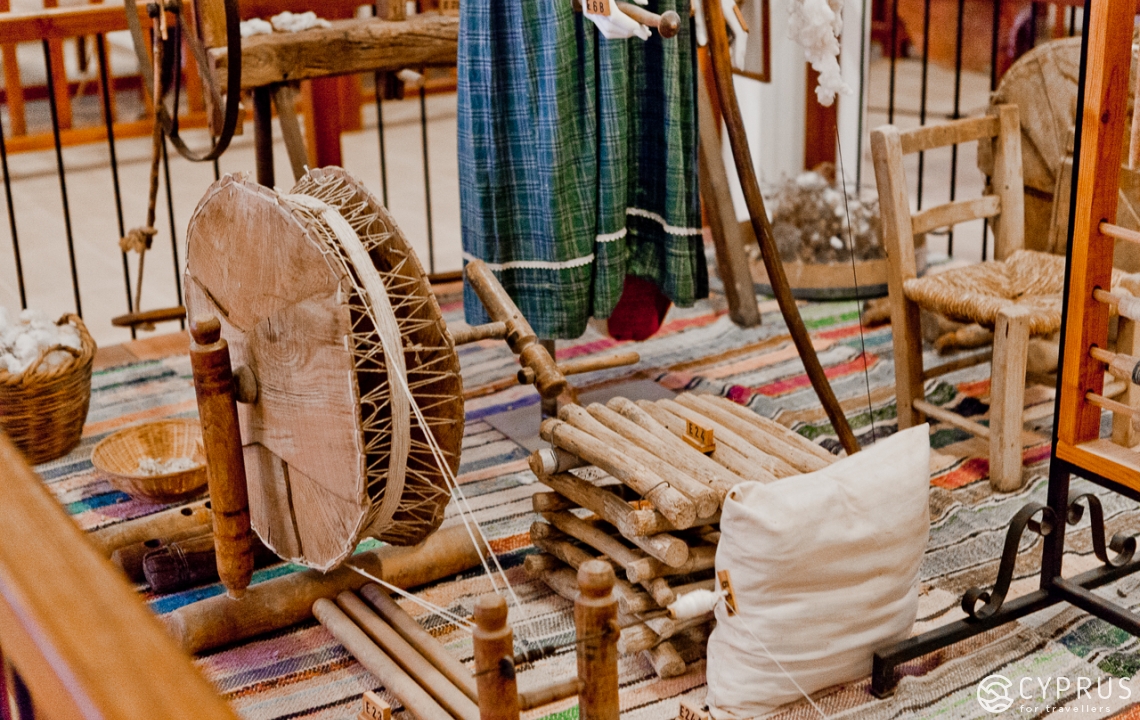
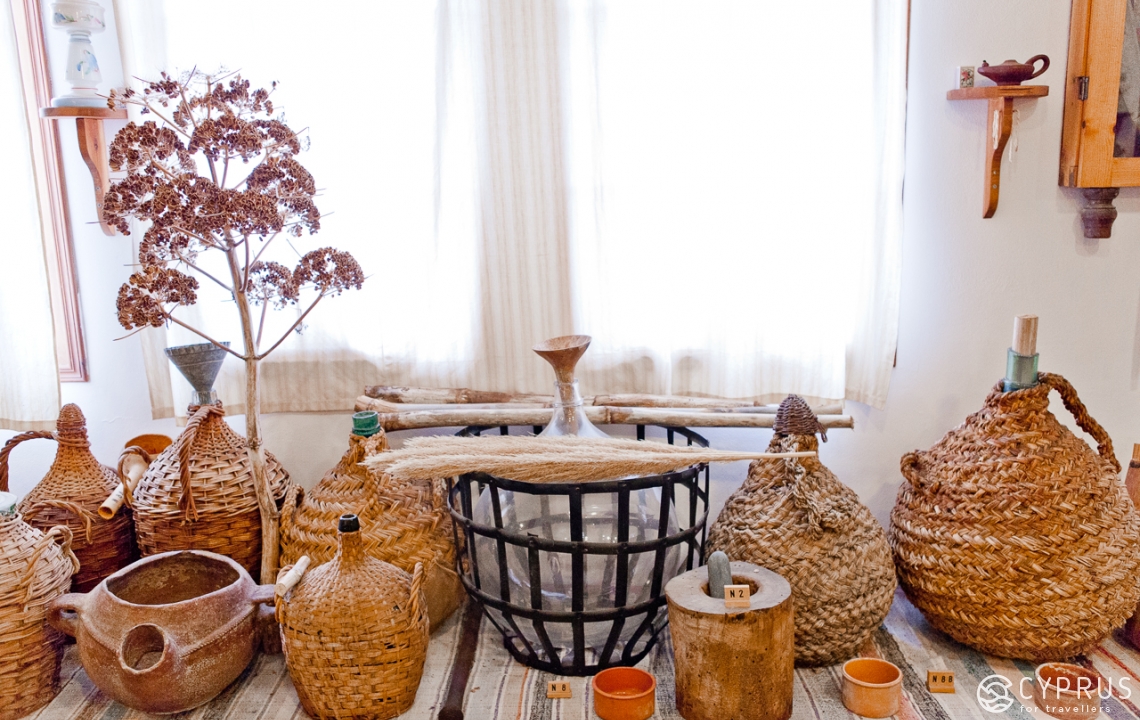
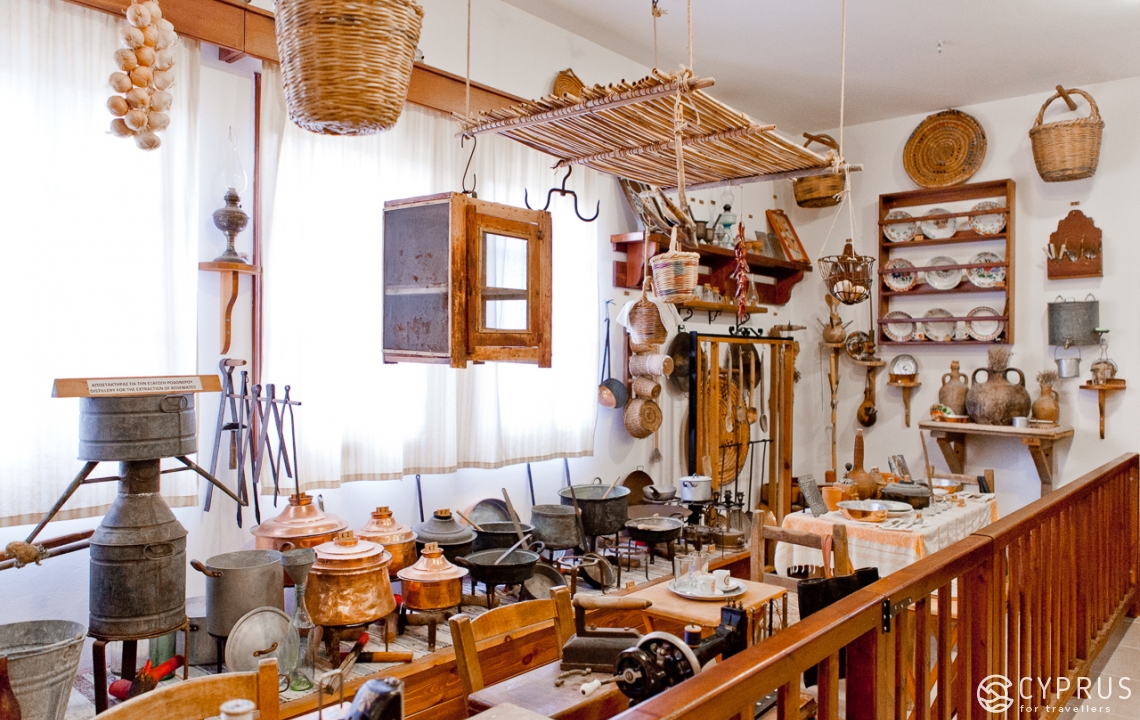
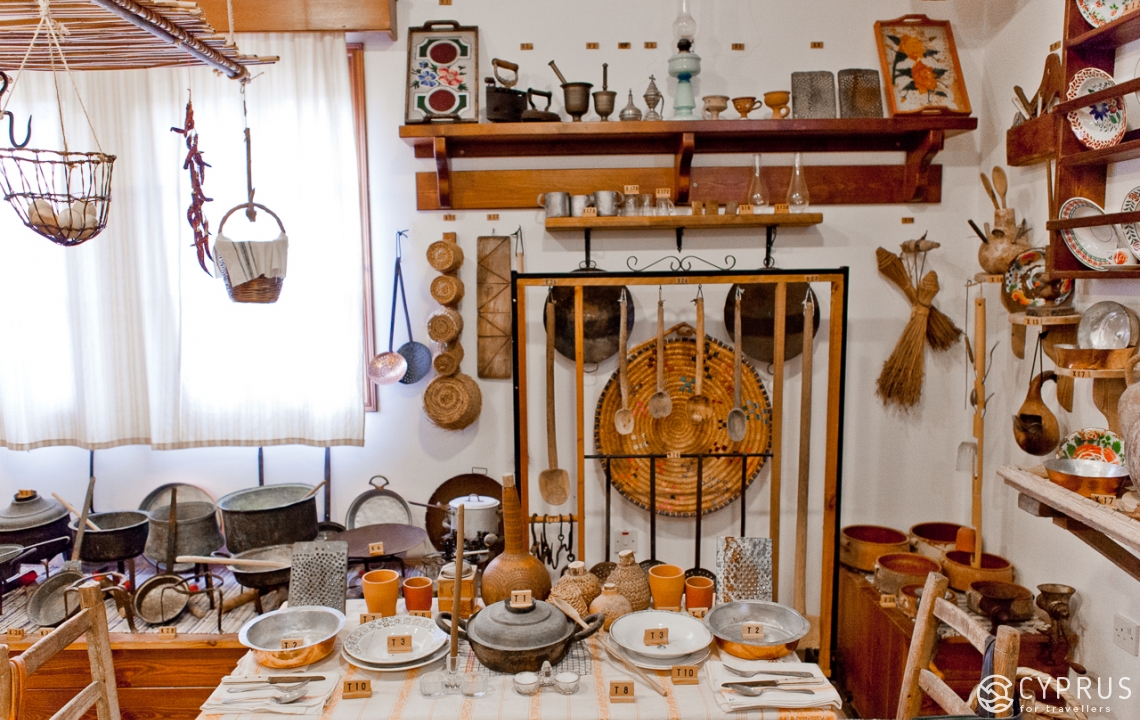
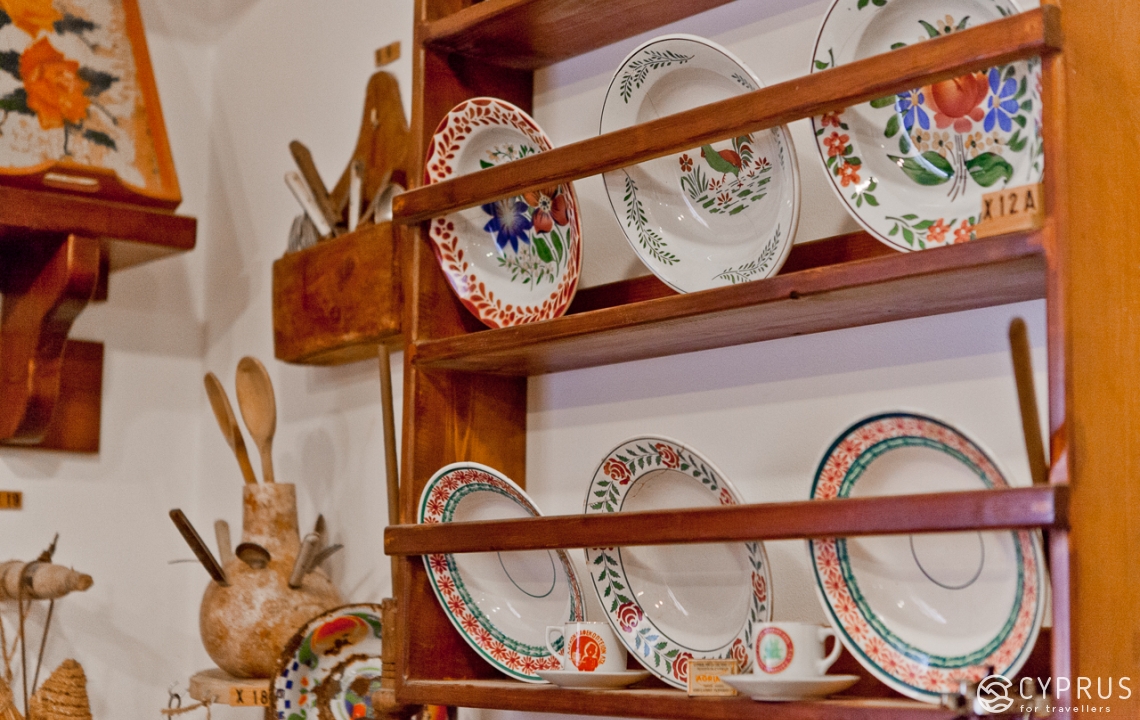
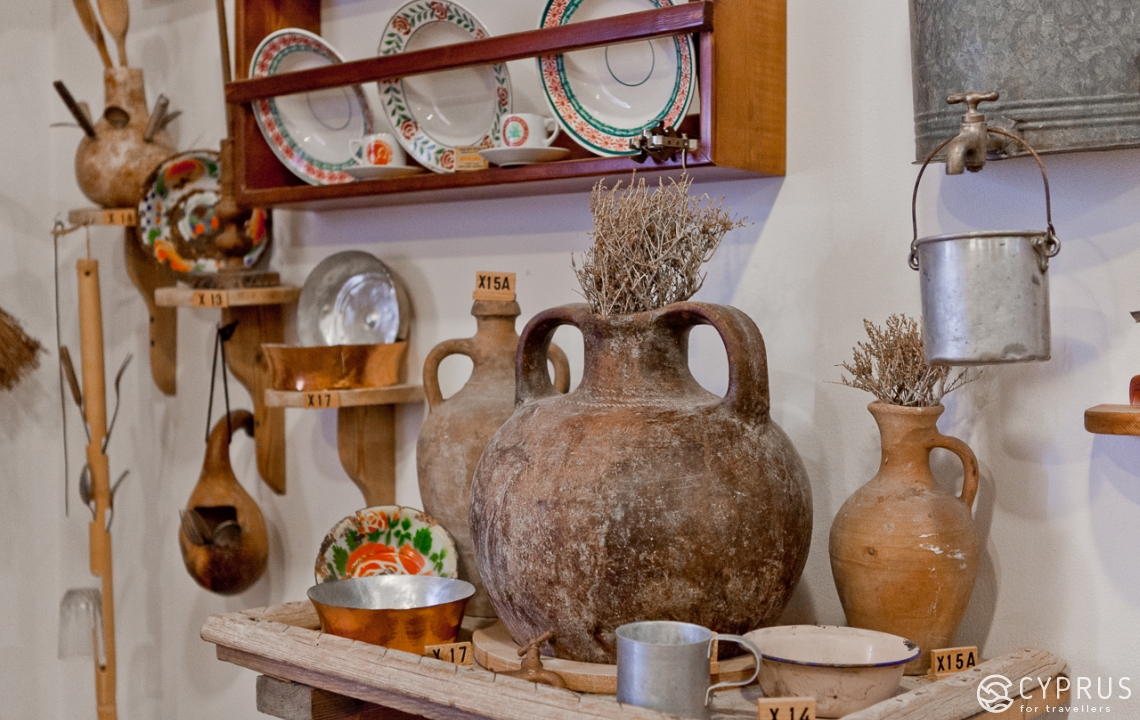
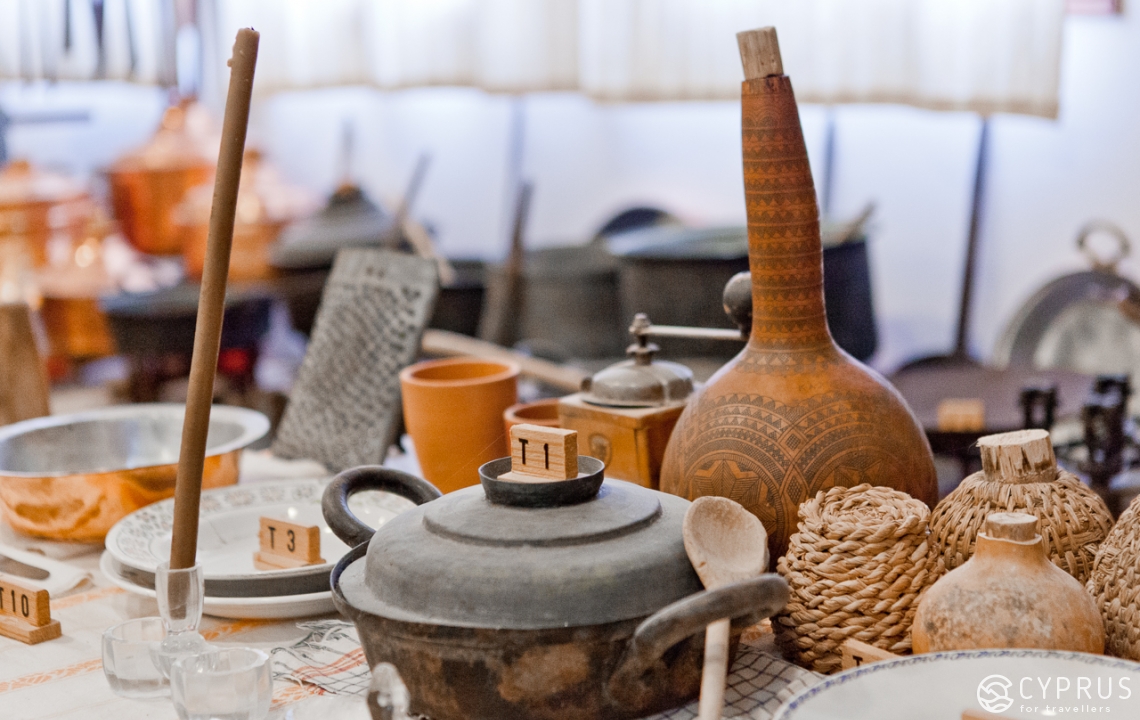
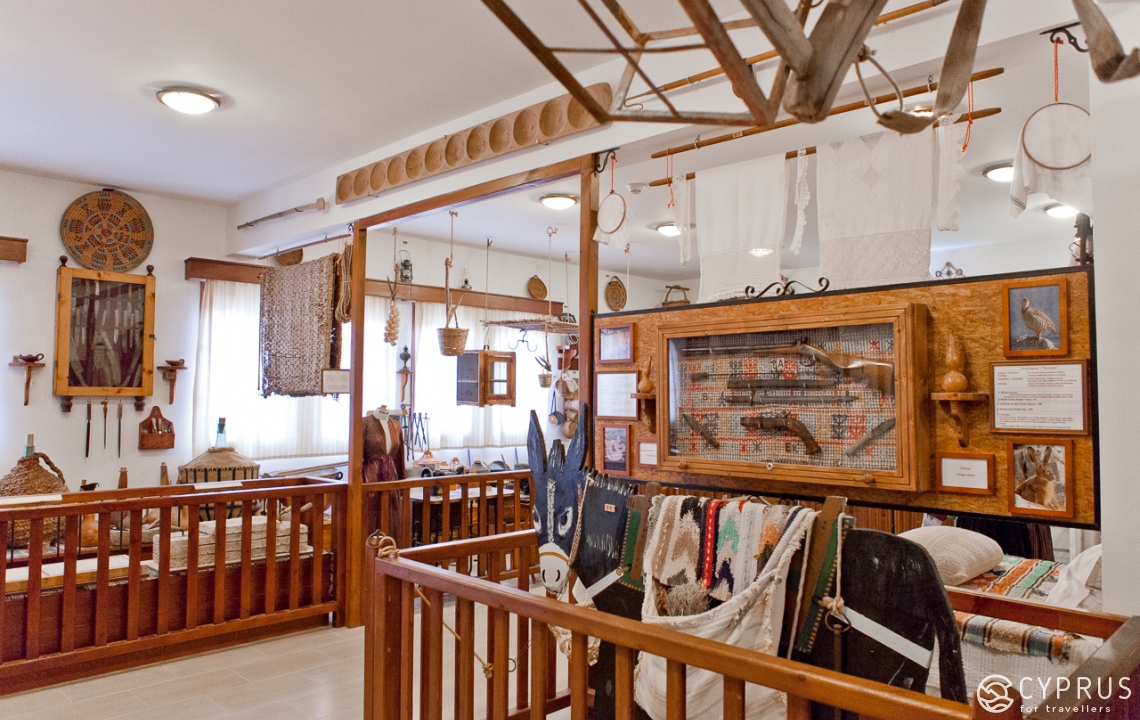
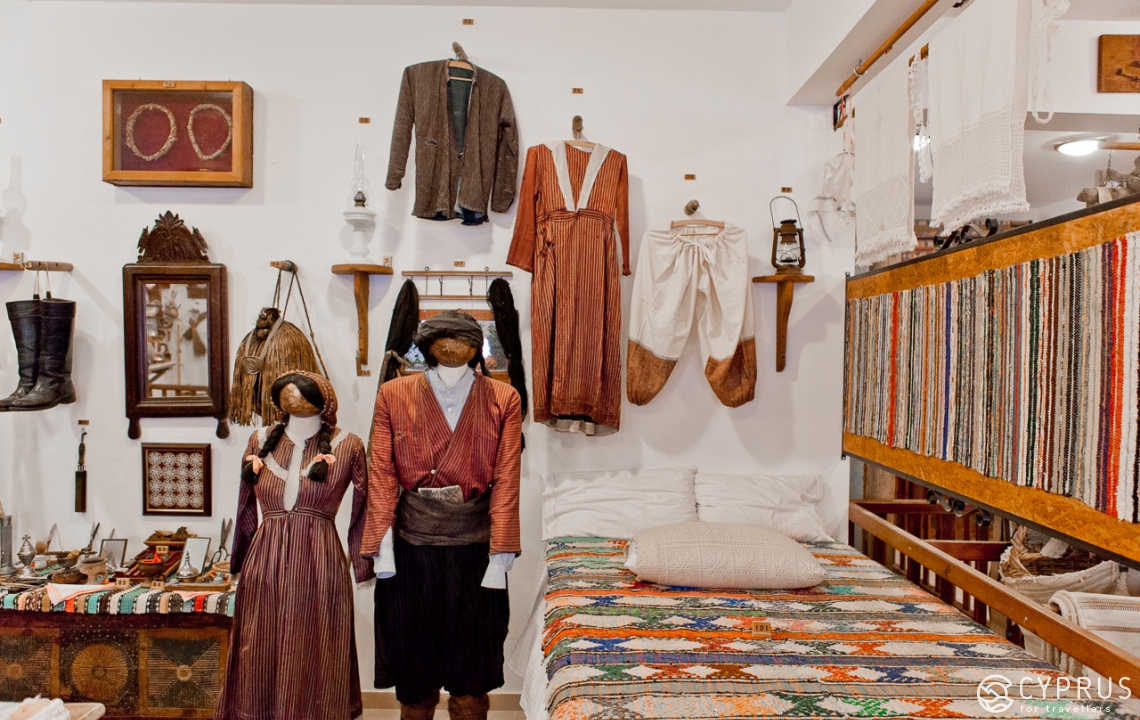
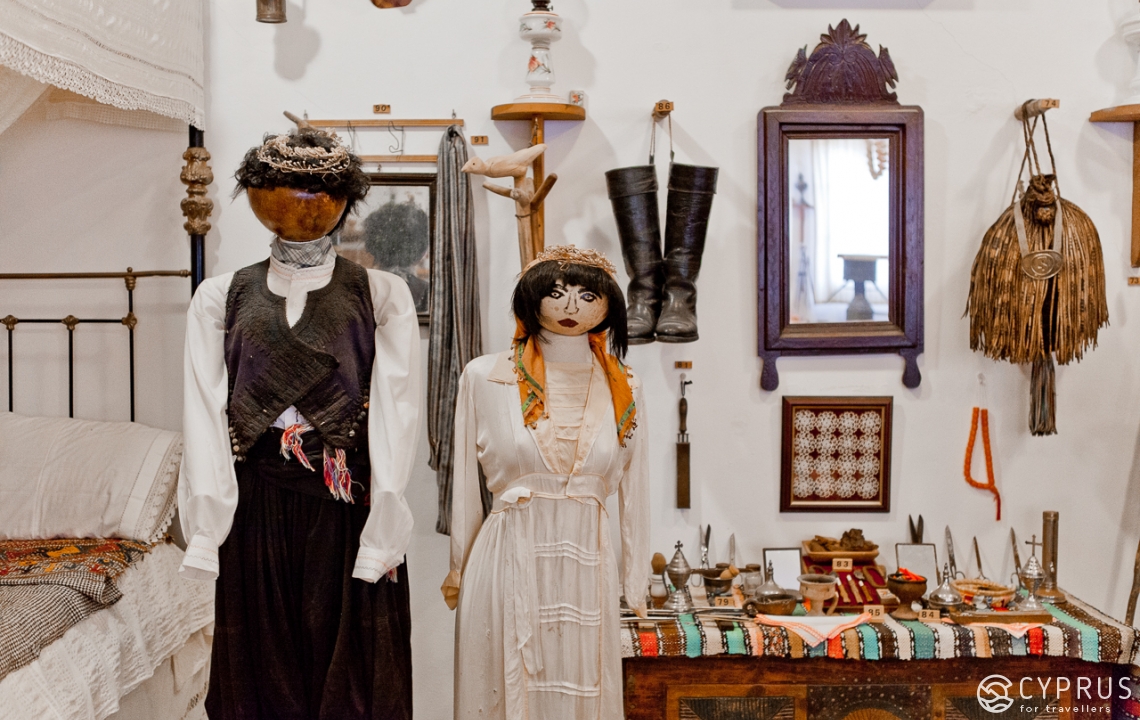
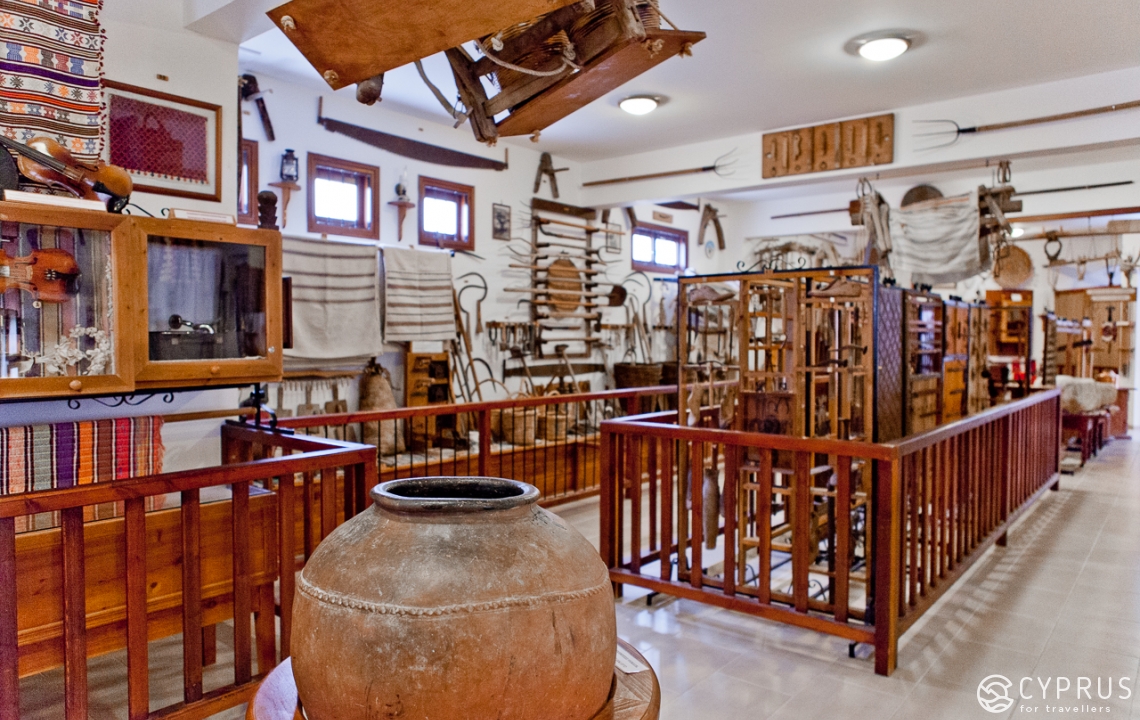
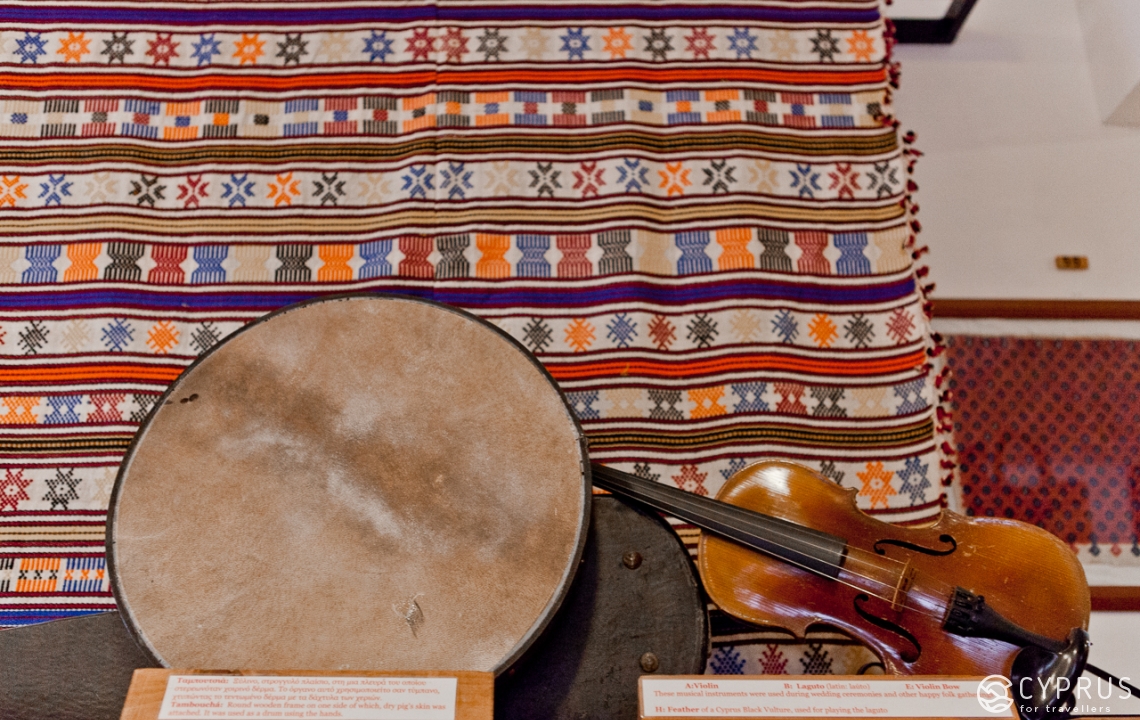
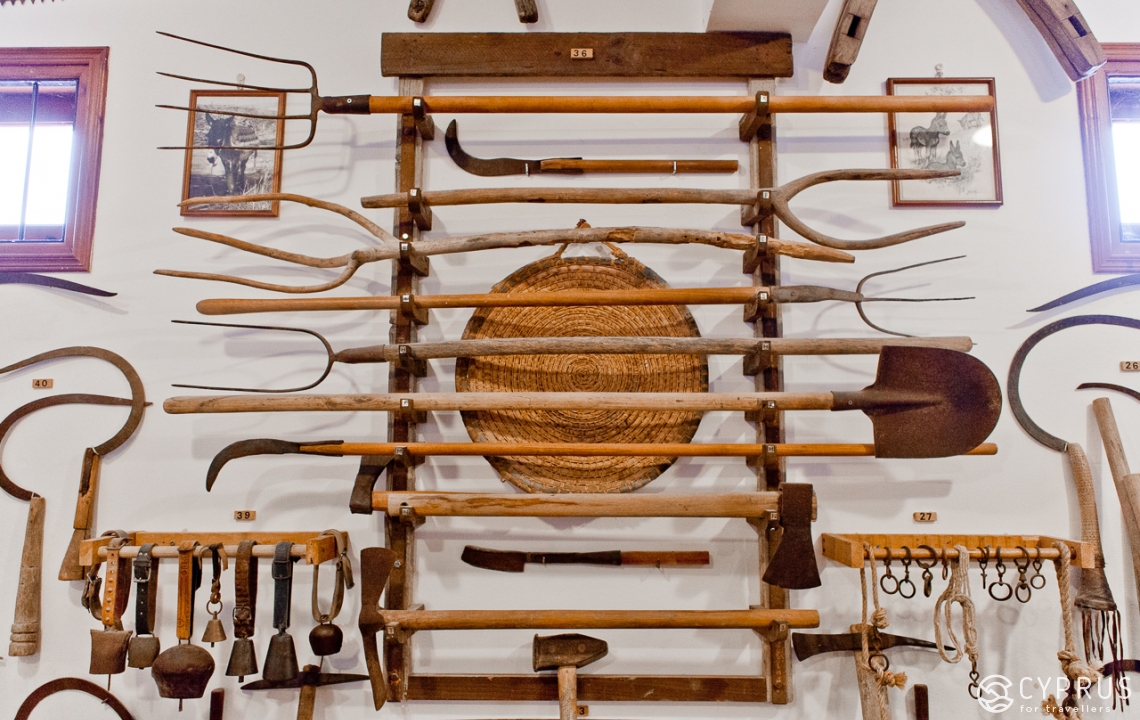
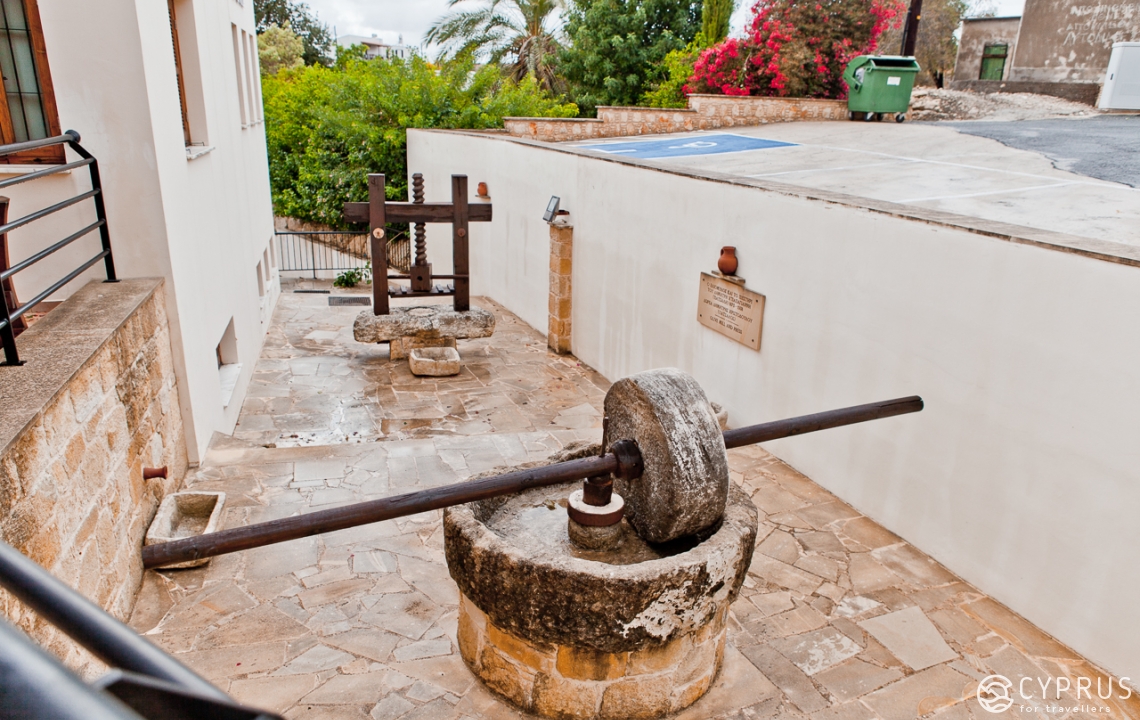
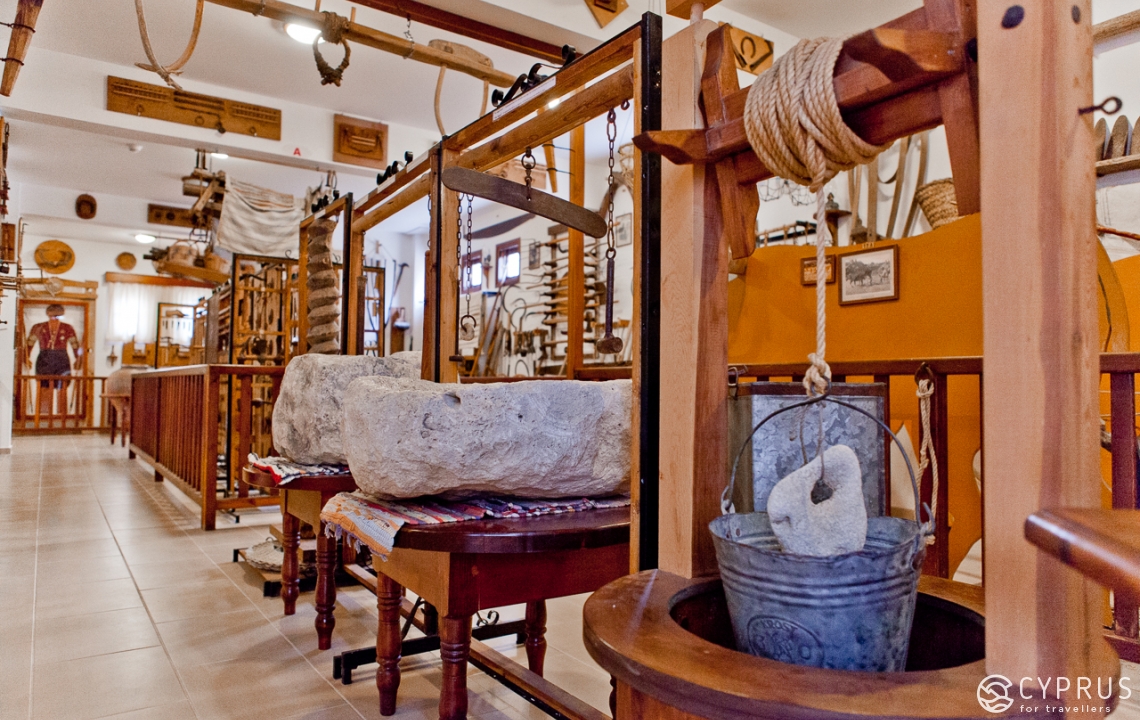
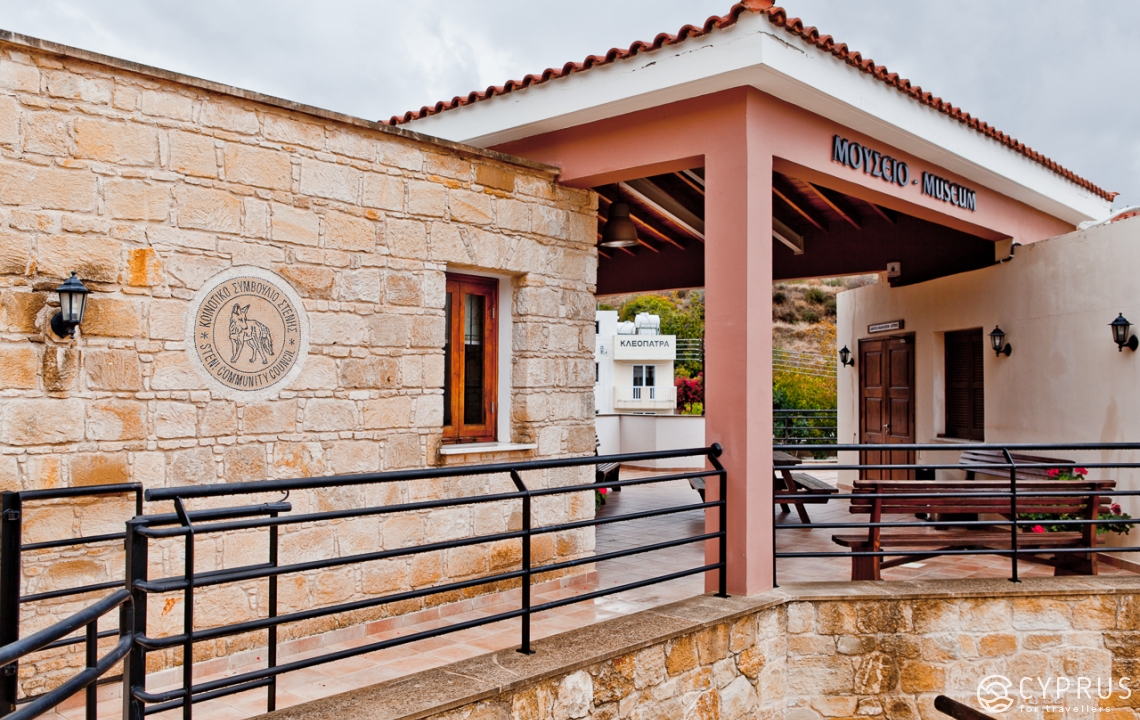
Opening hours: Monday – Sunday 10:00 – 16:00
Telephone: +357 26352143
Email: info@steni.org.cy
More info is available here: www.steni.org.cy
The small, picturesque village beckons us onwards and it is worth it. Our next stop is St. Trifon church named after the holy protector of animals and the patron saint of farmers.
The church was built in 1913 on the site where Steni’s first village church once stood. It was destroyed in a fire from burning candles left inside.
The church’s grounds are ramshackle but there are flower beds and benches with a map of the area where you can sit and enjoy the incredible views of the landscape that stretch out before you.
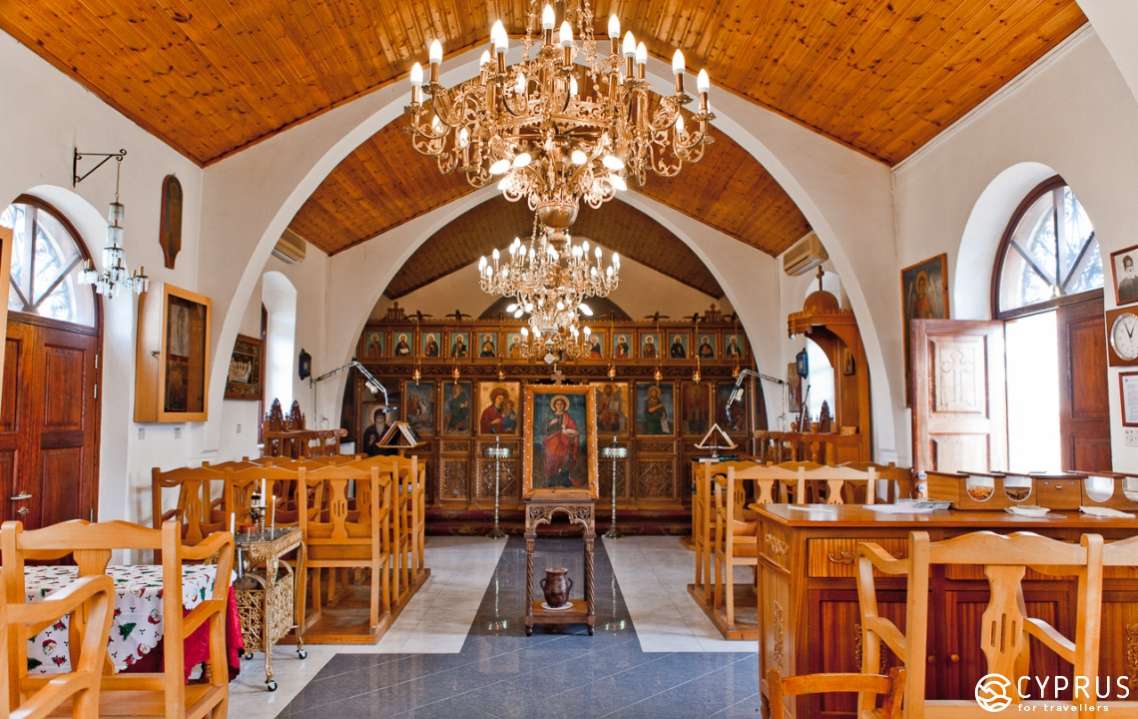
Where to stay:
Savvas Villas, Contact Details: +357 26352322, +357 99675041 (Savvas Charalampous); savvasvillas@cytanet.com.cy
Where to eat:
Neromylos Café (or the «Water Mill» Tel.: +357 26352059, www.neromyloscafe.com) Of course, this place is also steeped in history: this cosy, popular place was named after its 700-year old mill whose ruins are nearby.
How to get there:
From Paphos by car (42 minutes) on the В7 road, via Mesogi – Tsada – Strоumpi – Yolu – Miliou – Arkoudalia – Skoulli – Steni.
The 640 bus also departs from Paphos.
Polis Chrysochous: the City of Gold
Polis is in north-western Cyprus, 35 km from Paphos (a 30 minute drive from the city, only 45 minutes from Paphos airport, and 2 hours from Larnaca airport). In the Hellenistic period, the town was a key trading hub. Now it is an administrative town for the north-west, and a resort town that attracts tourists with its coastal atmosphere, for being off the beaten track and away from the busiest tourist routes and destinations, as well as the health benefits of its climate (many come here from all over the world to bolster their respiratory system and restore their nervous system). Its name in Greek translates as city (Πόλις) and golden (Χρυσοχούς). It is one of the most beautiful areas of Cyprus.
We got to Polis and parked in the old town near Agios Nikolaos church (built in 1905). A pedestrian zone runs along Griva Digeni street through the centre not far from the Museum of Archaeology. The streets here are narrow cobblestoned lanes. You’ll find taverns, shops and manicure salons dotted in amongst estate agents’ offices. If you’re looking for souvenirs, you’ll find them in the jewellery shops that sell handmade wares. There are also signposted public toilets. Basically, you can find everything here.
After wandering around the lanes and back streets, we decided to head straight to the Museum, which is in the neighbouring part of town, to spend more time exploring the historical and cultural aspects of the area.
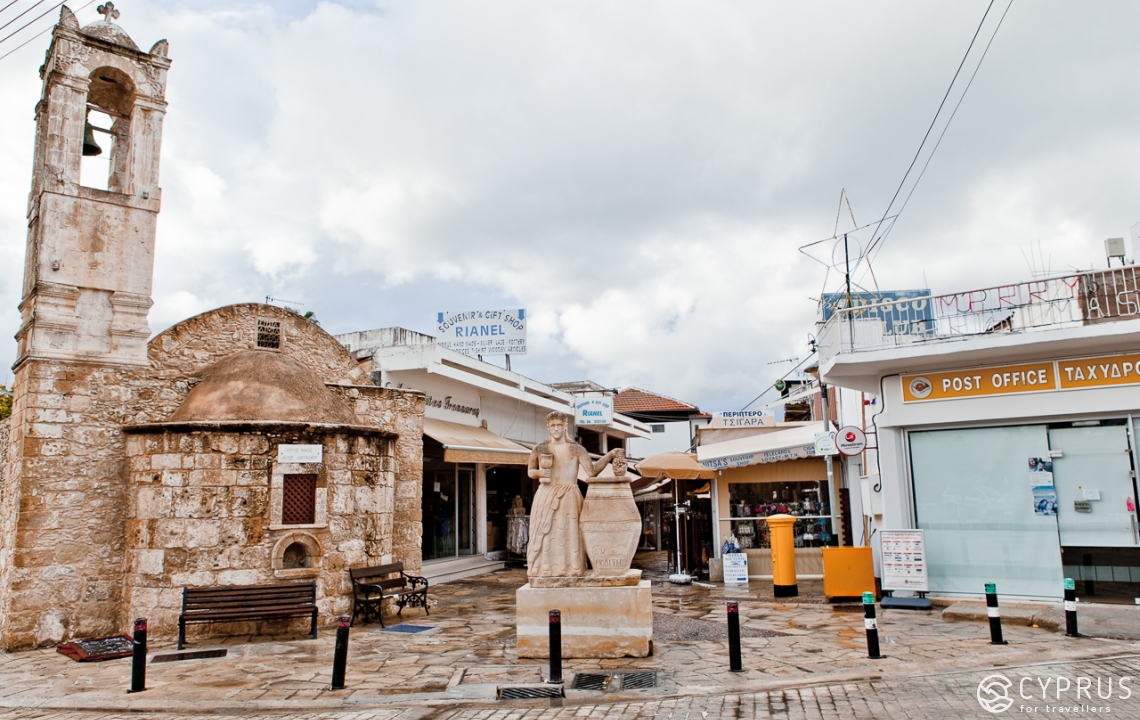
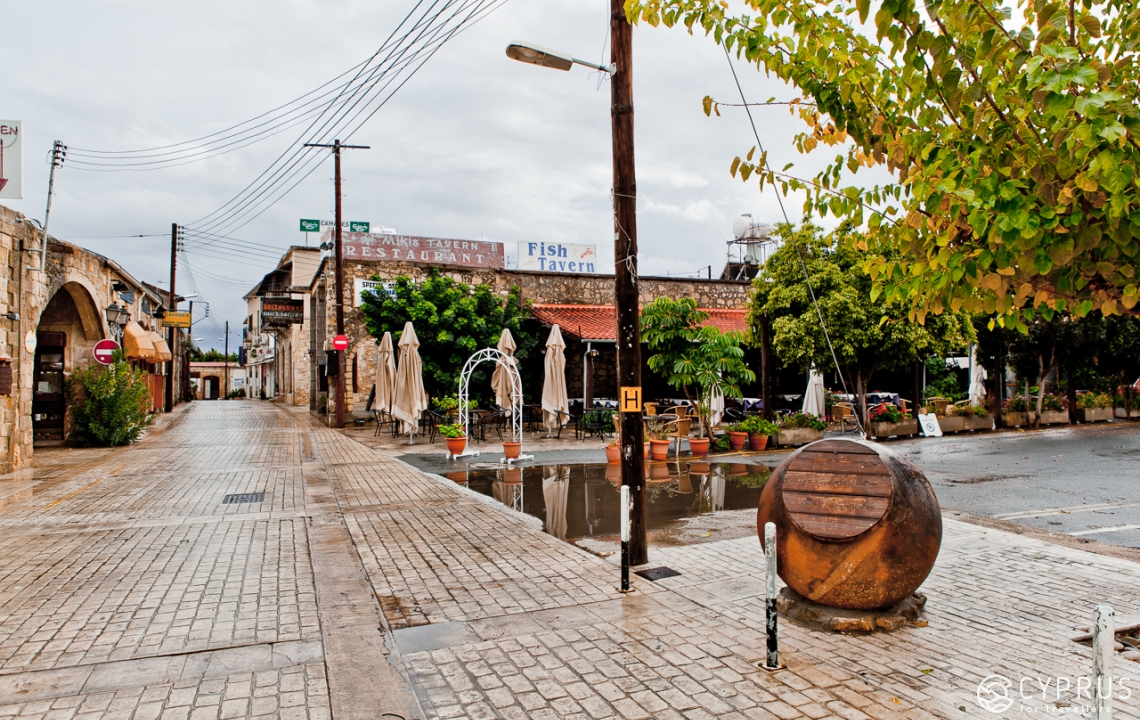
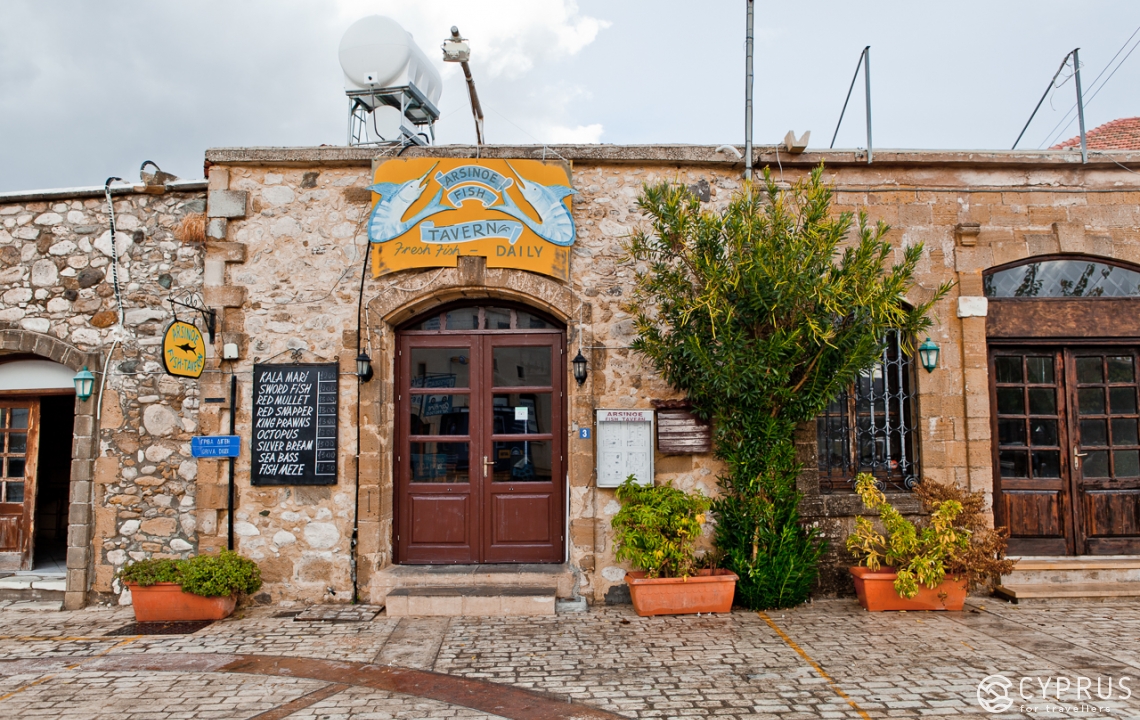
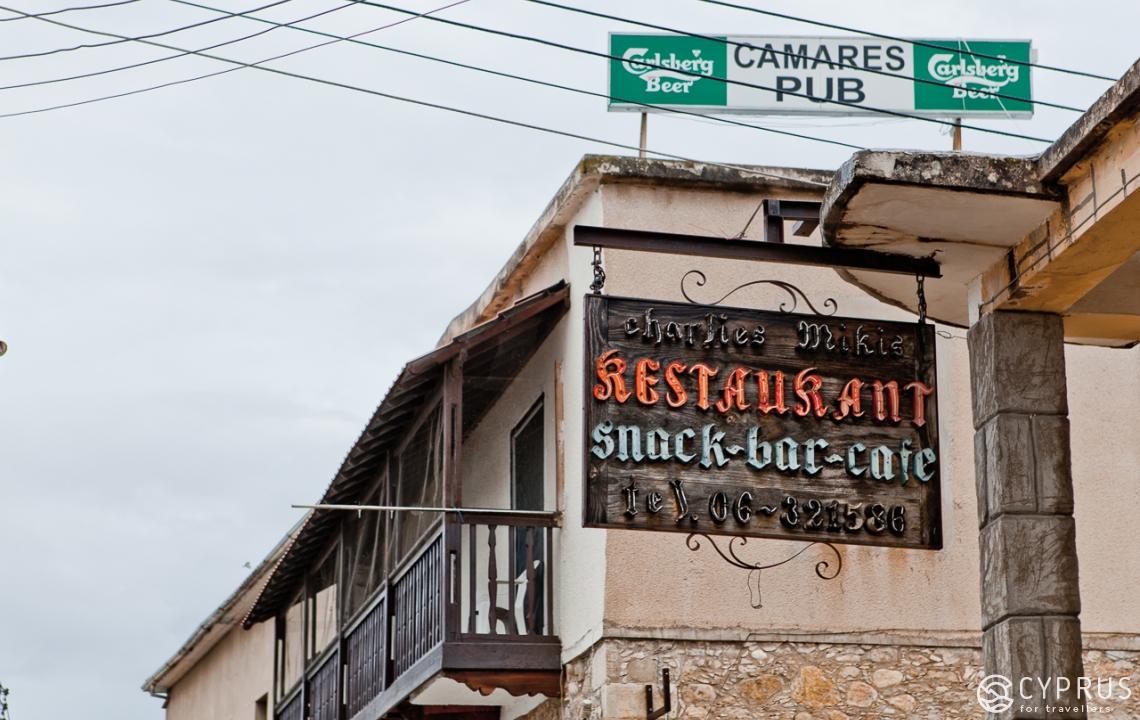
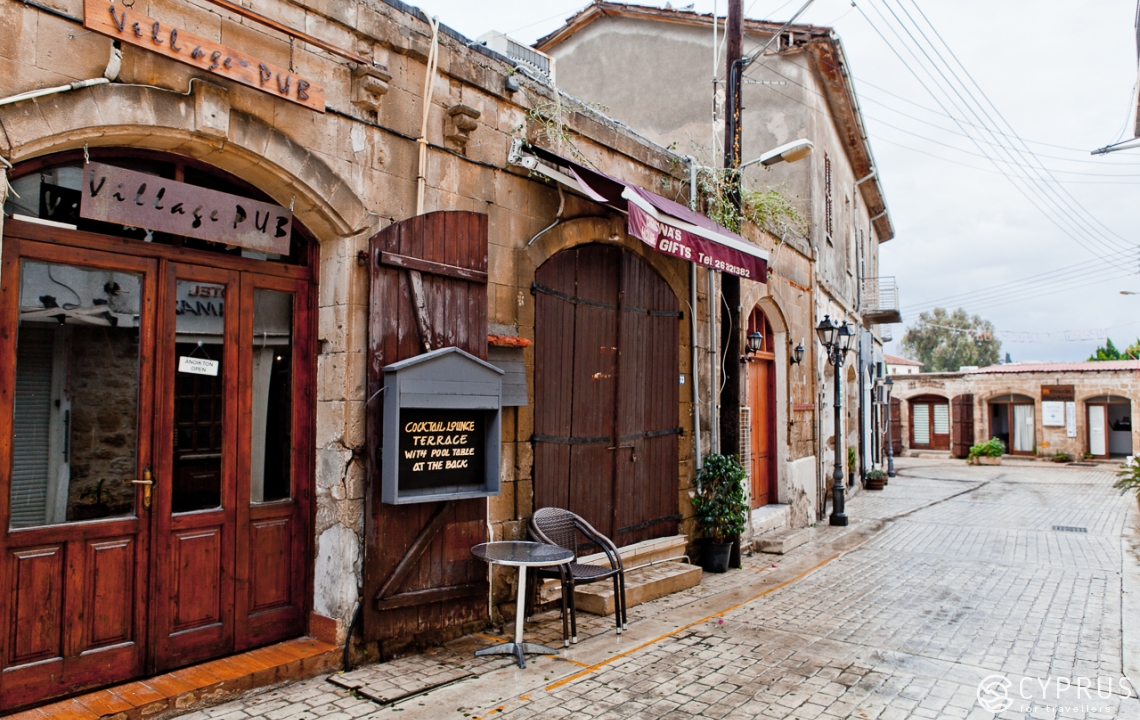
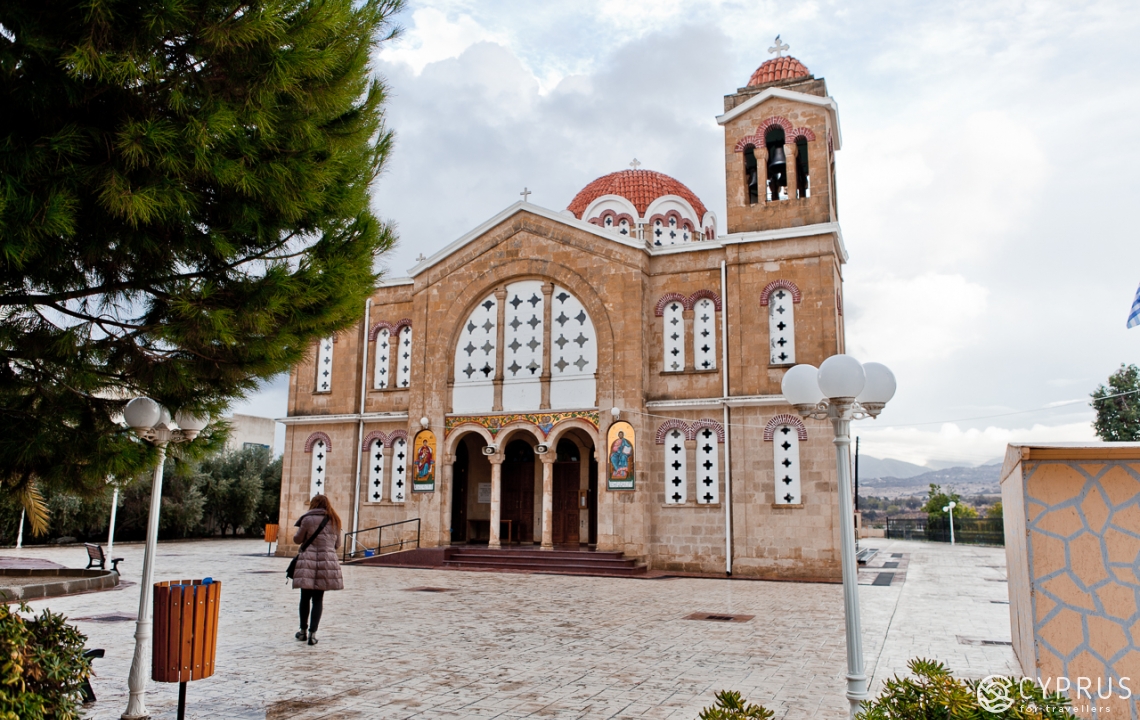
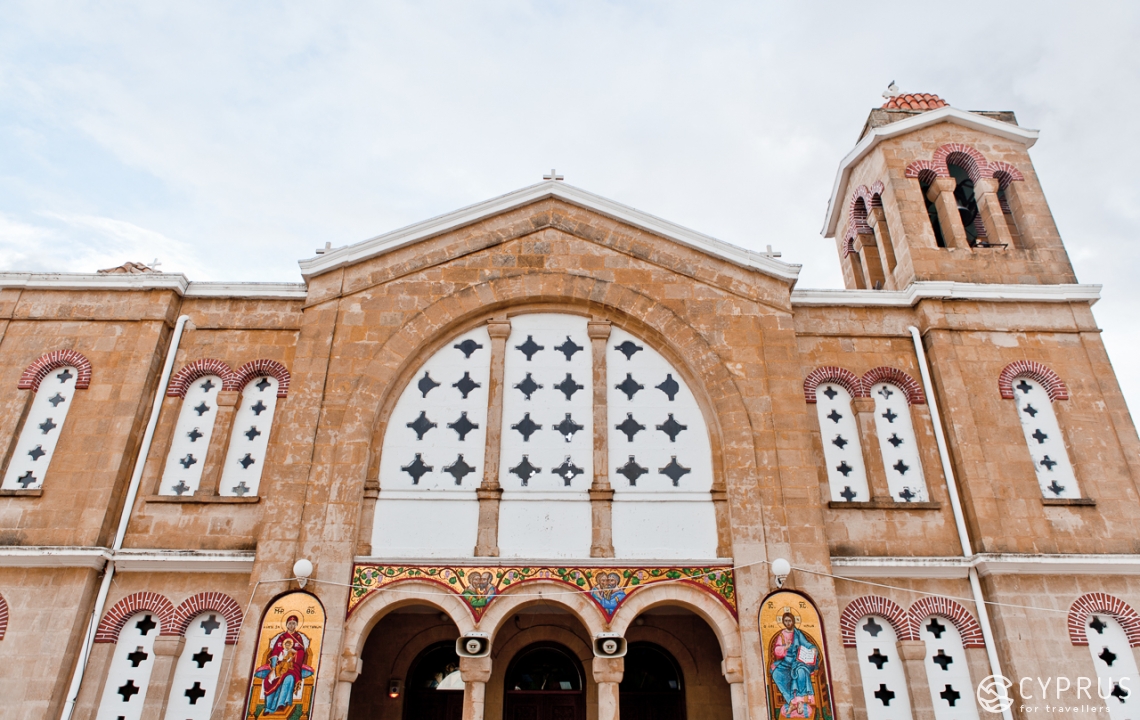
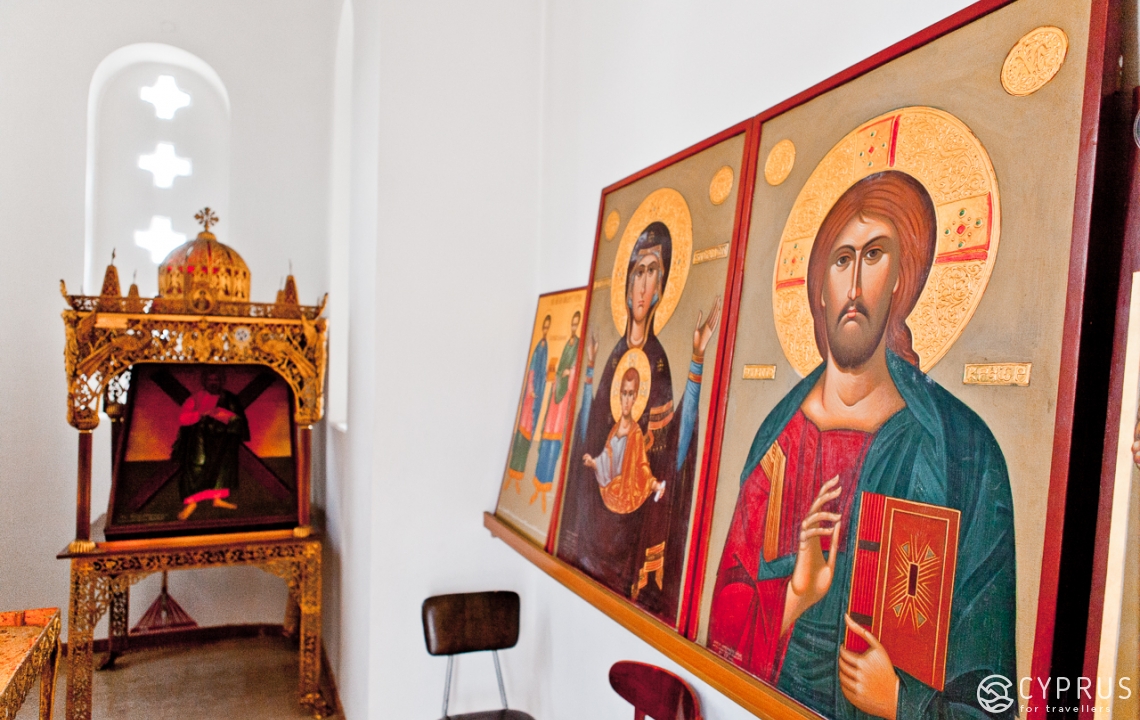
The Archaeological Museum of Marion-Arsinoe
According to ancient literary sources compiled by Stephanos Vyzantios (527-565), a Neoplatonist philosopher and compiler of the «Descriptions of Nations», the city of Marion was founded by the legendary King Marieas. It is now known that Marion was inhabited at the end of the Neolithic and throughout the entire Chalcolithic period. It started to thrive in the Cypro-Archaic period and became one of the most important ancient Cypriot city states in the Cypriot classical era, establishing important commercial ties with the Eastern Aegean islands, Attica and Corinth.
In 312 BC, Marion was captured by Ptolemy I and the kingdom was dissolved. Ptolemy II Philadelphus later rebuilt the city and renamed it after his sister and also wife, Arsinoe II. The new city was smaller than Marion but it prospered thanks to its proximity to copper mines. Arsinoe continued to exist into the early Byzantine period (4th – early 7th century). Later, it is believed the city state was heavily damaged in the Arab invasions in the 7th century AD.
Archaeological evidence indicates that the city was also inhabited during the Medieval period (12-14th century).
The local Museum of Marion-Arsinoe, which opened its doors to the public in 1998, was built by the Government of Cyprus with financial support from Mr. Nikos Shacolas, a renowned Cypriot entrepreneur and patron of the arts. The permanent exhibition is made up of three halls with displays and includes an atrium.
The layout and the presentation of the collection is similar to that in the Museum of Cyprus that we described in our article: the display cases are arranged around the edge of the hall with large cross-shaped displays with the following artefacts: from the Chalcolithic and Neolithic periods (ceramics, polished stone (flint) and other tools); the three stages of the bronze era are fully presented (numerous ceramics imitating metal wares, and bronze items); and the era of Cypriot geometry period (a specific way of decorating ceramics).
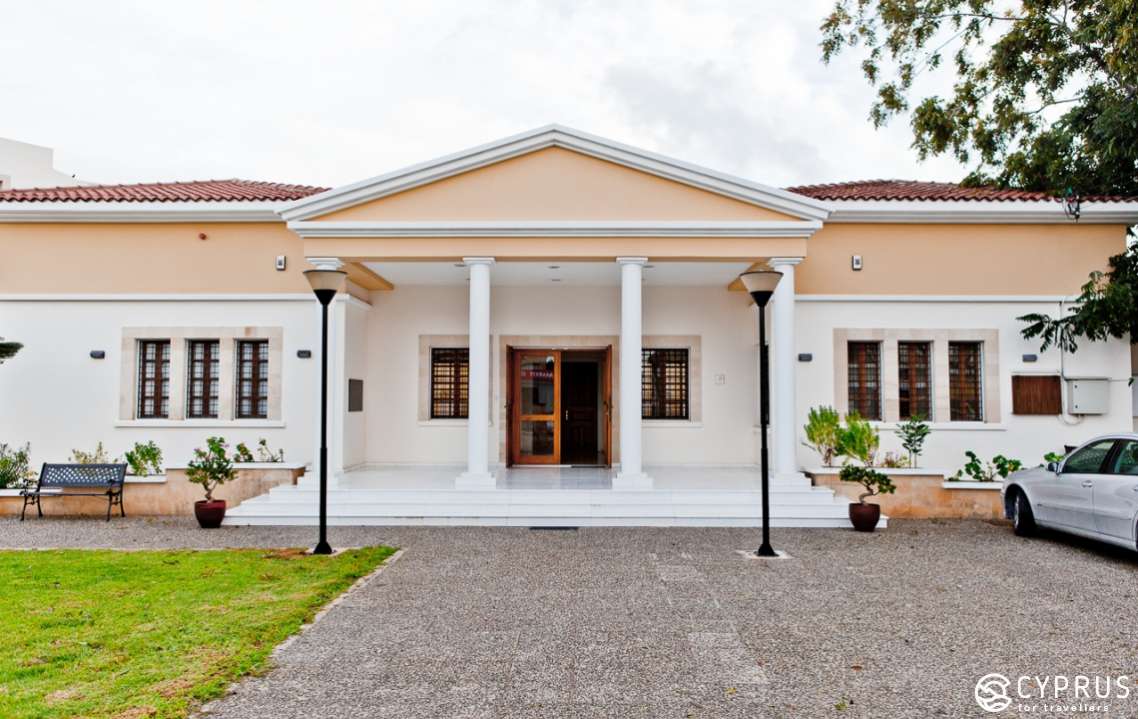
The two large central display cases contain a krater or an amphora-shaped pot (as described on its information label, decorated with images of fish and birds, Polis, 7th century BC) and a funerary sculpture with a niche on the bottom (according to Greek traditions, the deceased were first cremated). The wall-mounted display cases contained interesting ceramic portrait of actors assumed to be from the archaic era, which are hollow inside. They include both local items and imported terracotta (750-475 BC).
The artefacts in the first hall originate from the wider region around Polis and are arranged chronologically to reflect its historical development up until the medieval period.
The Cypriot classical area (475-320 BC) is illustrated by red ceramics with sculptural images of people and animals and fairly primitive painting on the main section. You’ll also see gold jewellery (snake earrings, signet rings, and hair adornments — in the shape of coiled snakes), as well as gem-stamps made of semiprecious stones. Next up you’ll come across a display case that houses both Cypriot pottery and samples of white ceramics (jugs and amphorae) from the Eastern Aegean region (Chios, Samos, and Rhodes). Other displays contain red and black-figure vases and kraters from Athens (VI-IV century BC) imported from Attica.
From 325-50 BC — ceramics, sculptures, images of animals, gold and silver ornaments.
There’s also artefacts from the Roman period (50 BC - 330 — the head of a column (in limestone, with 4 engraved cones at the corners and a decorative pattern); the early Byzantine era in Cyprus (mainly silver jewellery) and the Middle Ages: irrigation basins (made of glazed ceramics), coins (bronze and gold).
The artefacts in the second hall are from a wealthy necropolis (with information on where they were found) including sculptures, friezes, marble grave steles with inscriptions in Cypriot syllabary. One, for example, says: «in memory of Stasis, the son of Stasikos» (dating back to about 400 BC). There are also display cases with ceramics found on the site of the ancient city, Koilades and Euretes. Here you can see bronze and glass wares and other household items that they buried with the deceased ... There is also a separate stand with gold ornaments.
The main exhibit here is a gigantic vertically-installed hollow figure (larger than the average human) made of clay. It’s a statue from the second Cypriot archaic period between the 6th and 5th centuries BC. At 3m tall, it is one of the largest ever clay statues ever made. Fragments of it were discovered during excavations on the site of the tomb. According to historians, it was destroyed in the 3rd-2nd centuries BC, after the death of Alexander the Great, when his generals under Ptolemy tried to take control over Cyprus. This statue was an offering to the church of Zeus and Aphrodite but it was destroyed by the Ptolemy’s soldiers ... as they ransacked all that they could. The statue we see today has been restored from thousands of shards and fragments.
By the exit, there are marble sarcophagi with inverted lids from the Hellenistic period decorated with acroteria and antefixes from Pano Akourdaleia. There are book and souvenir shops selling books on art, Cyprus, etc. by the ticket office.
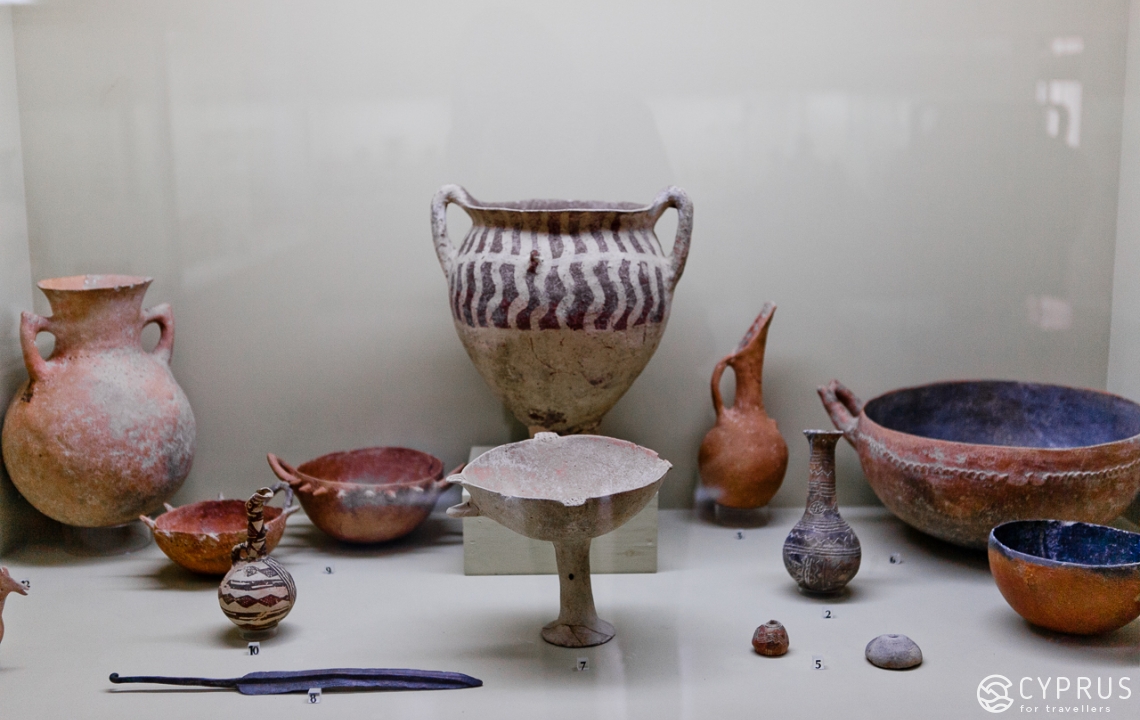
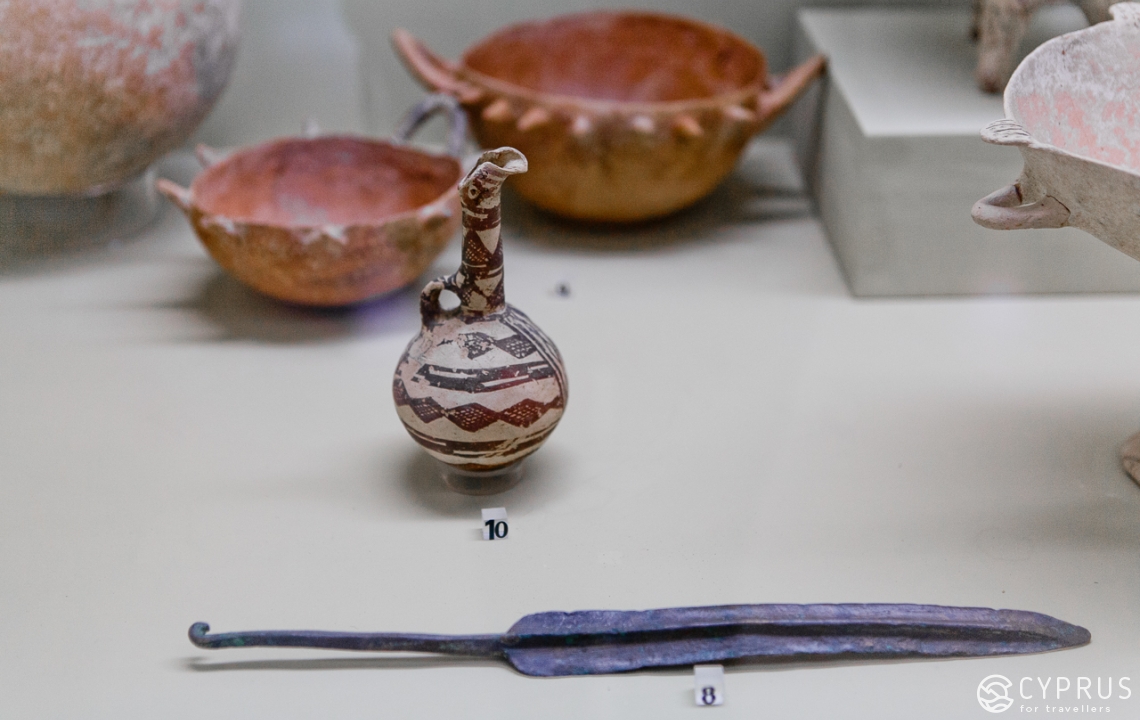
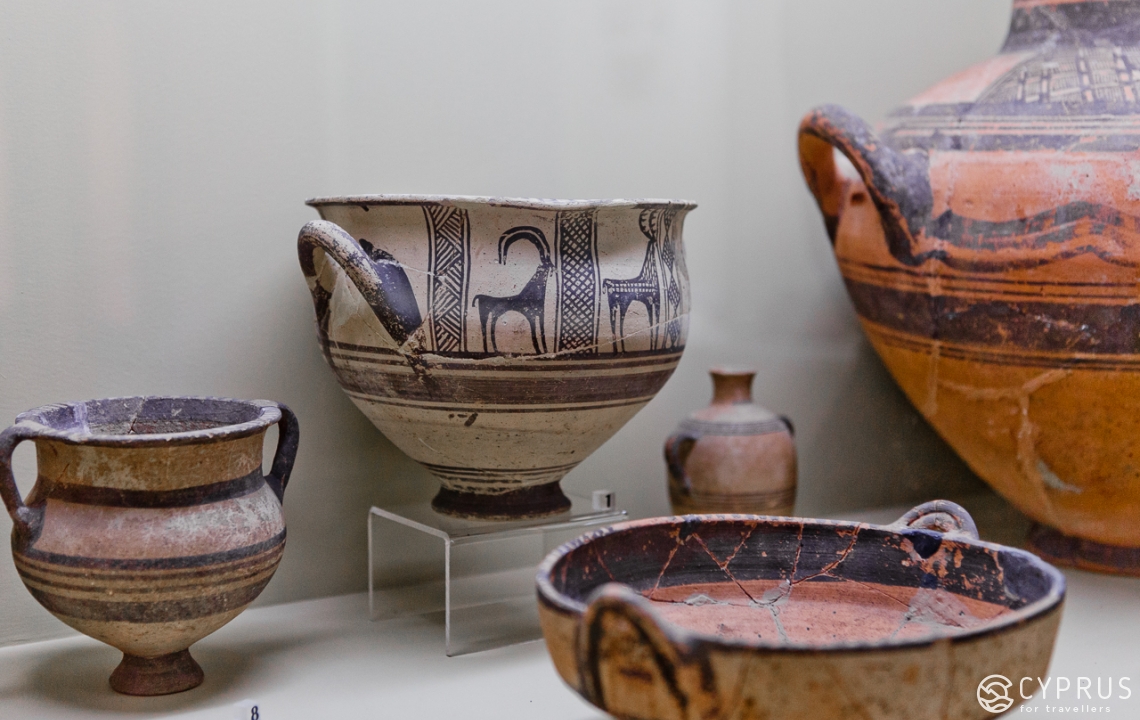
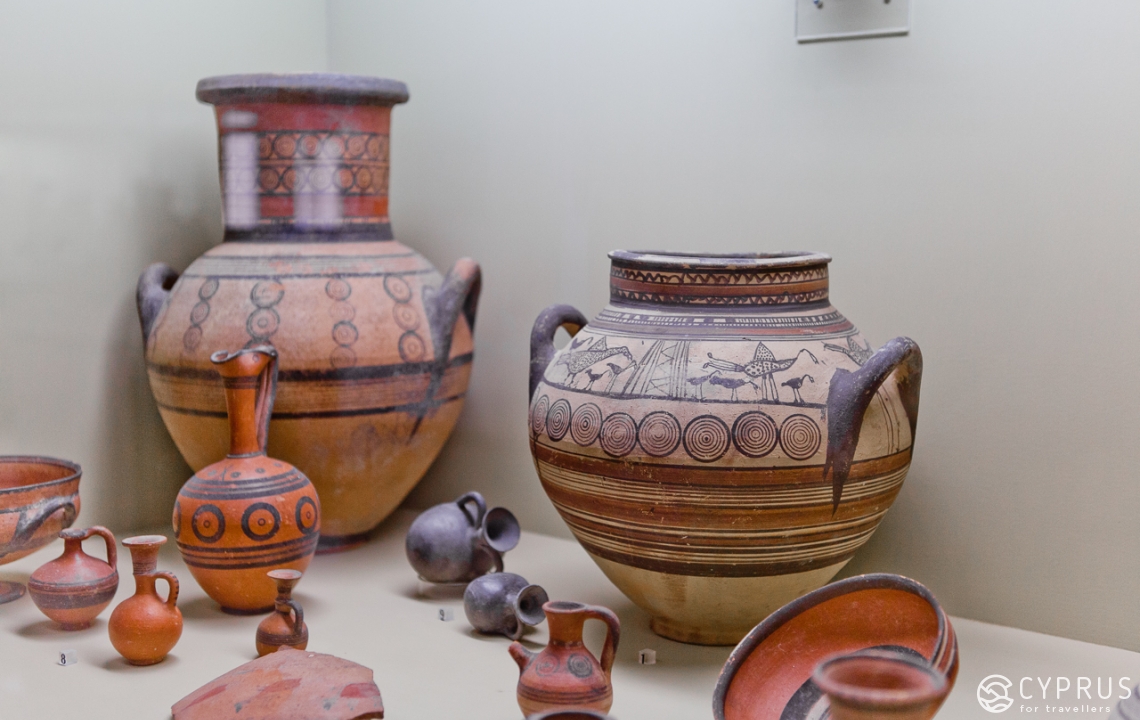
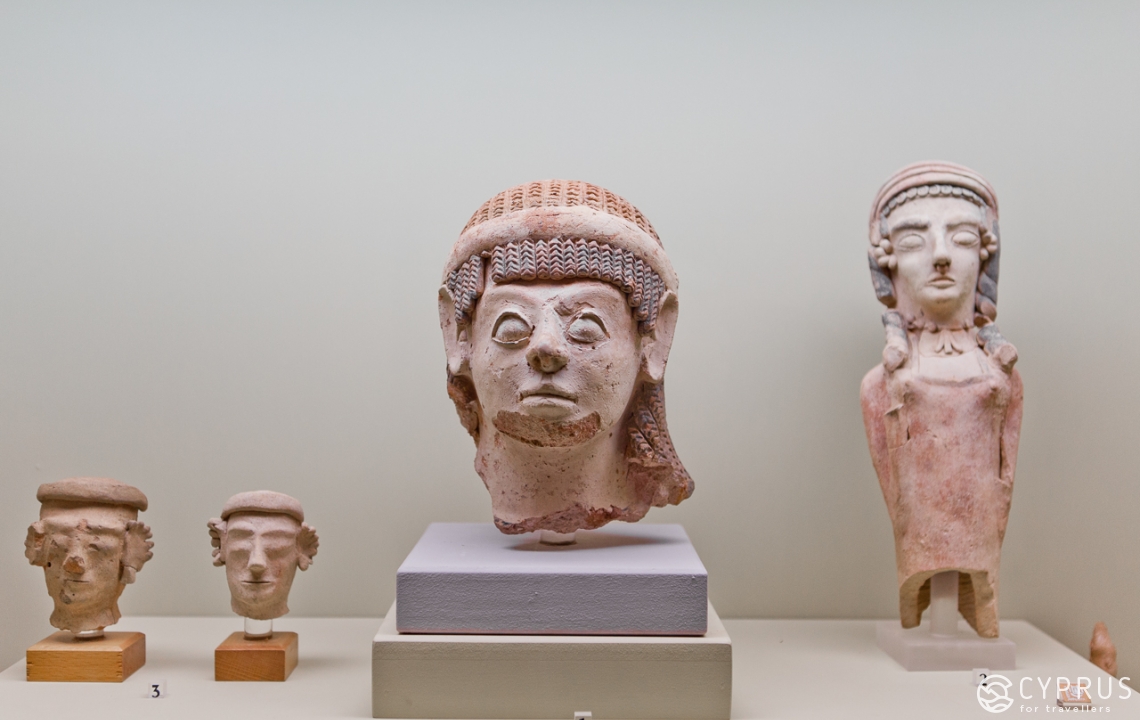
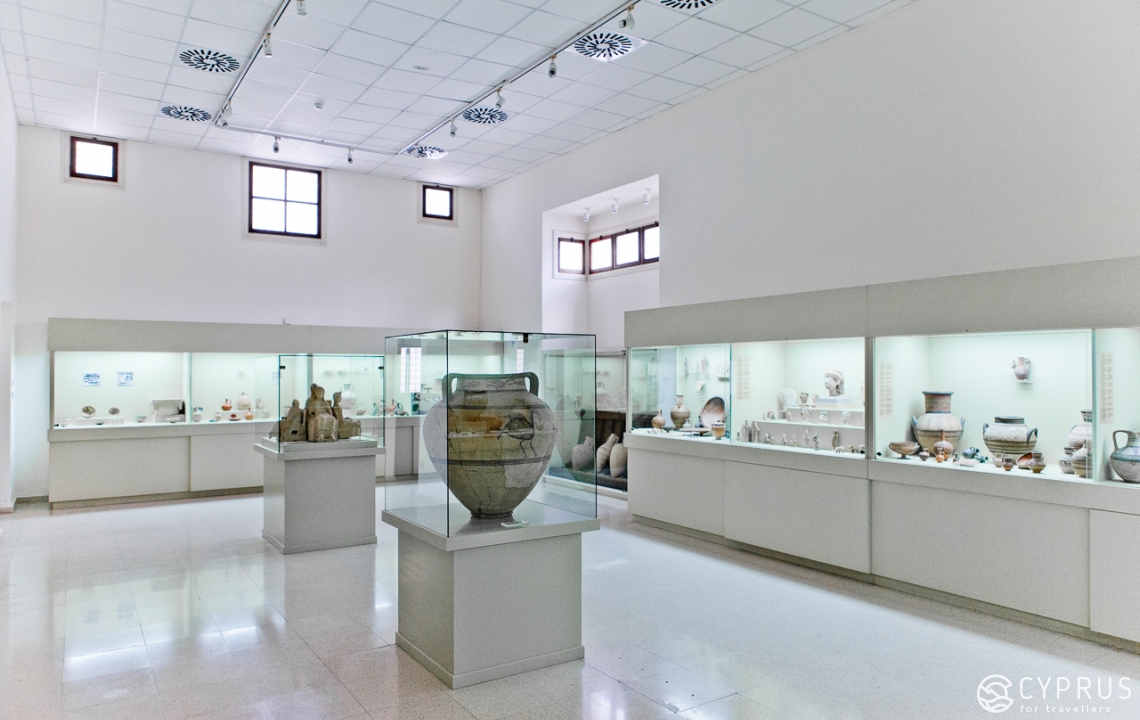
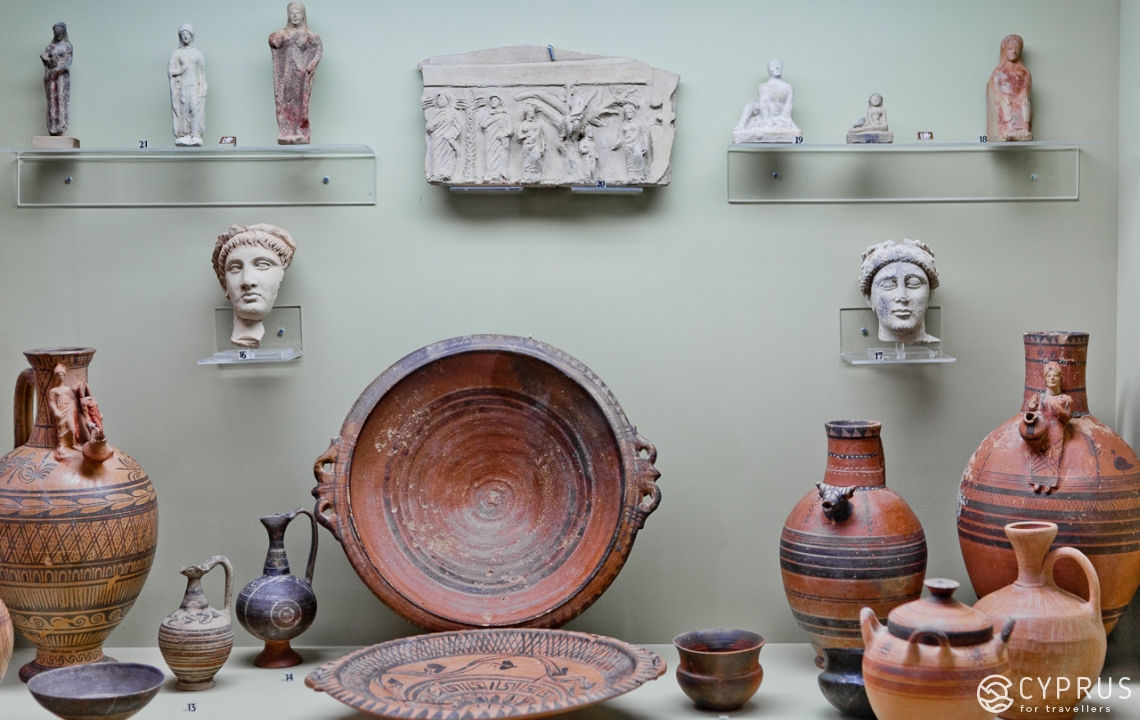
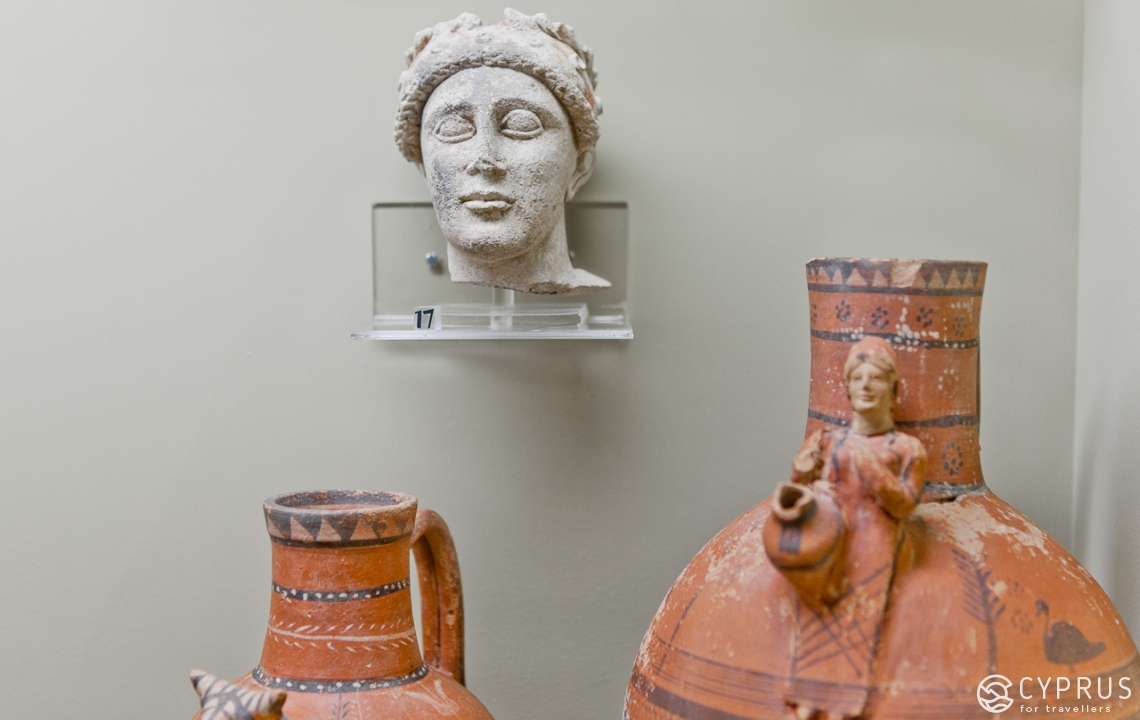
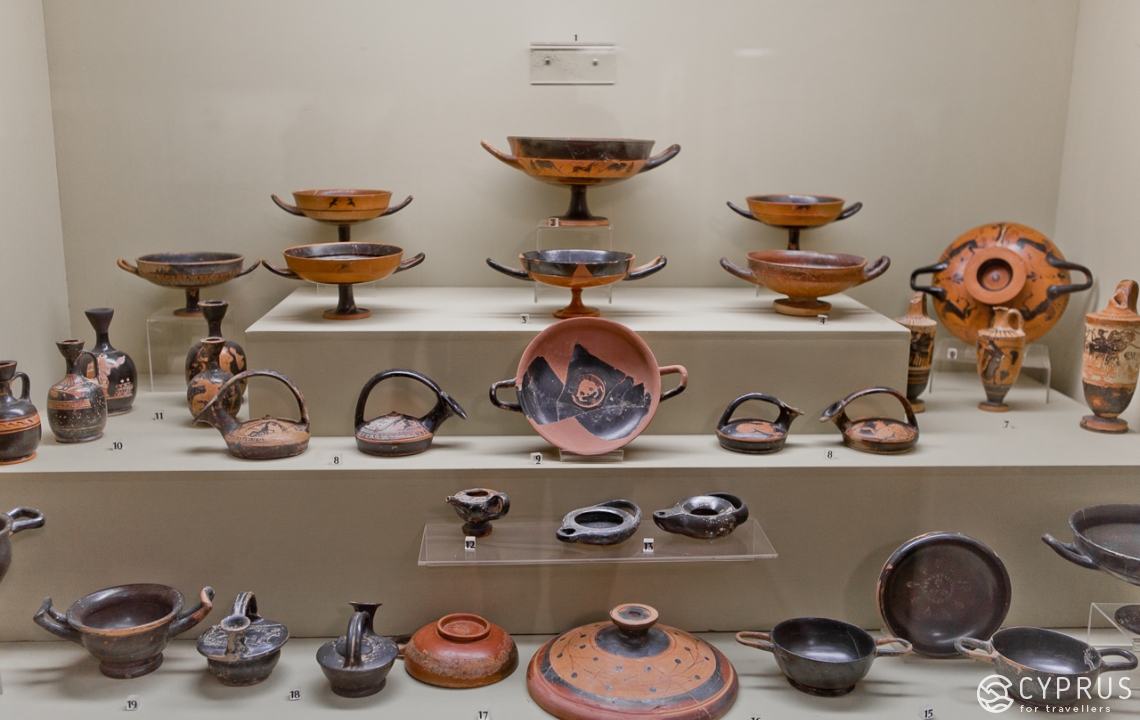
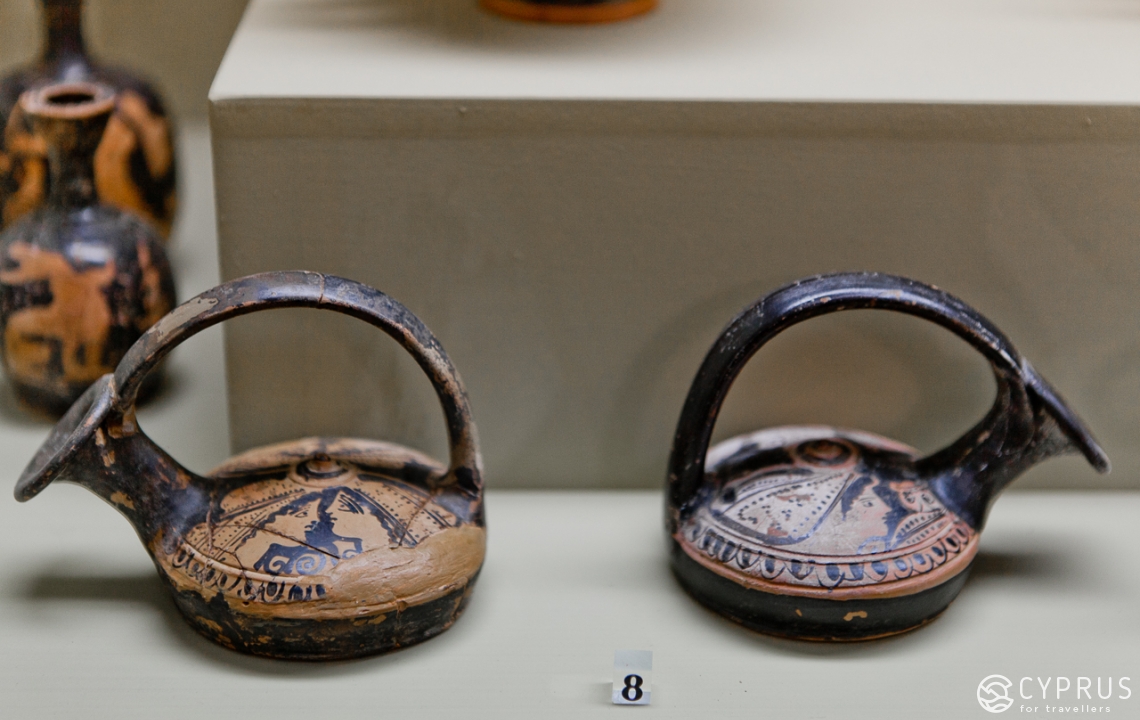
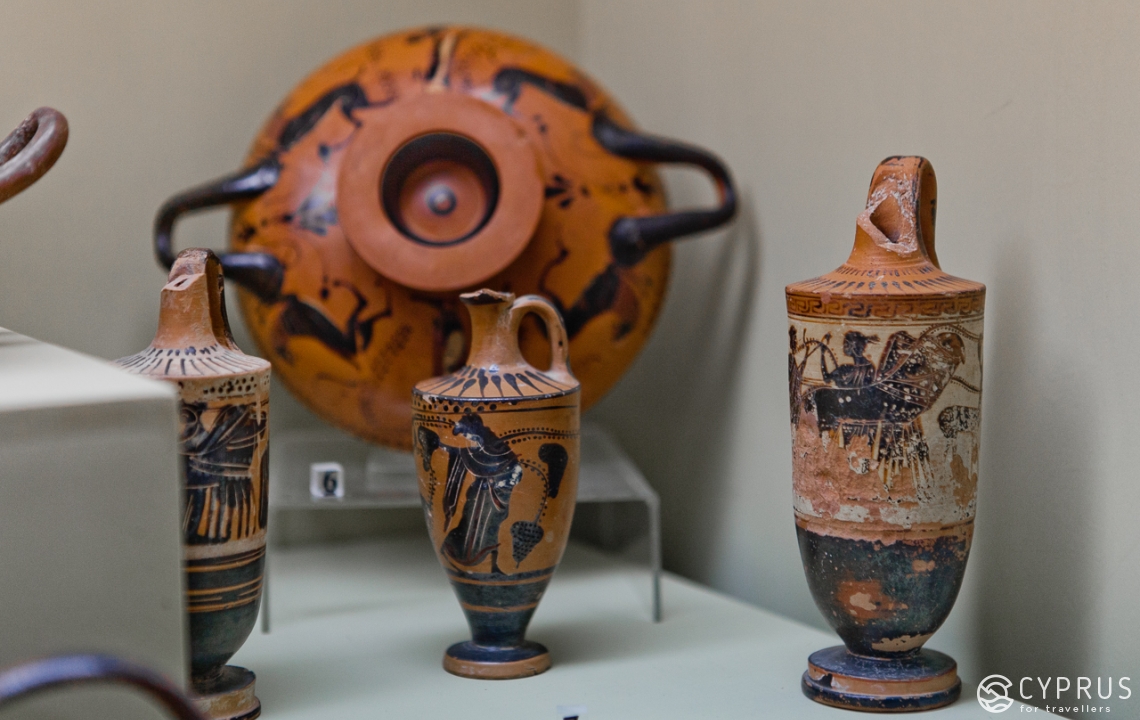
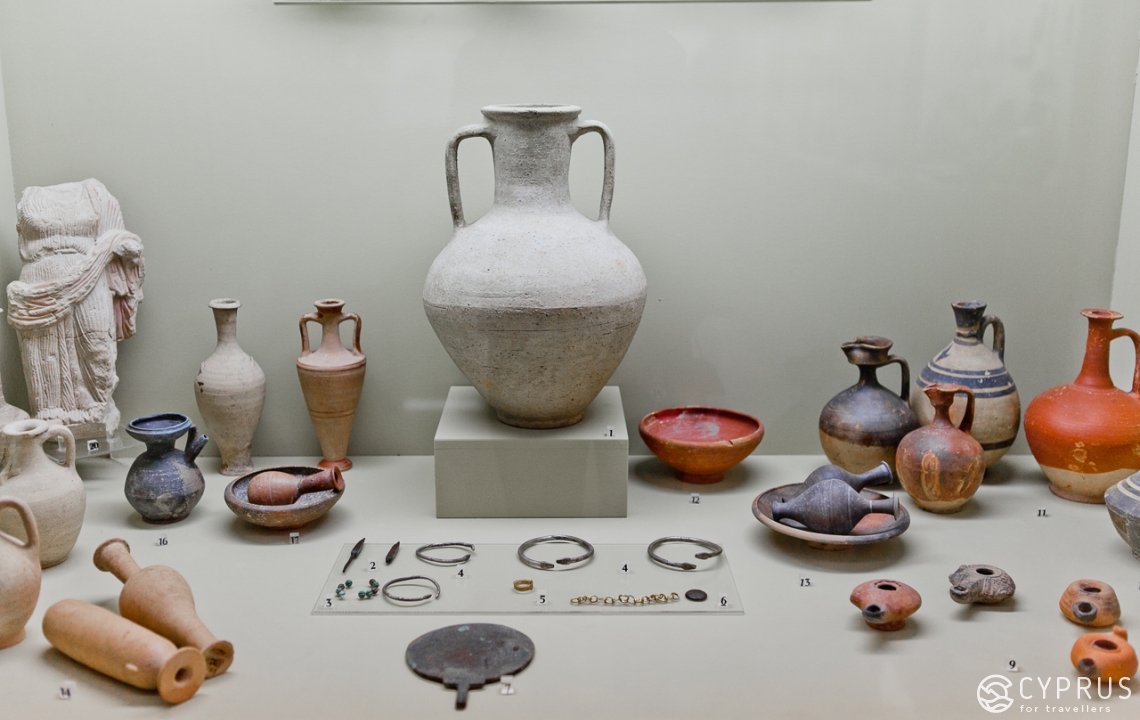
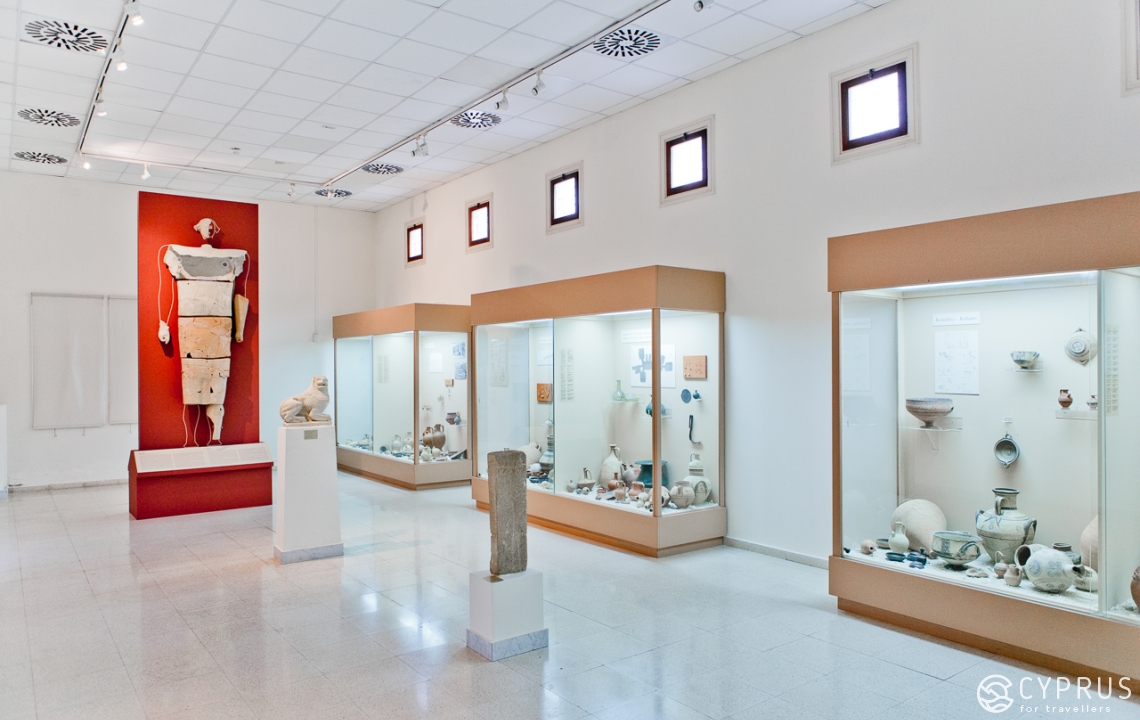
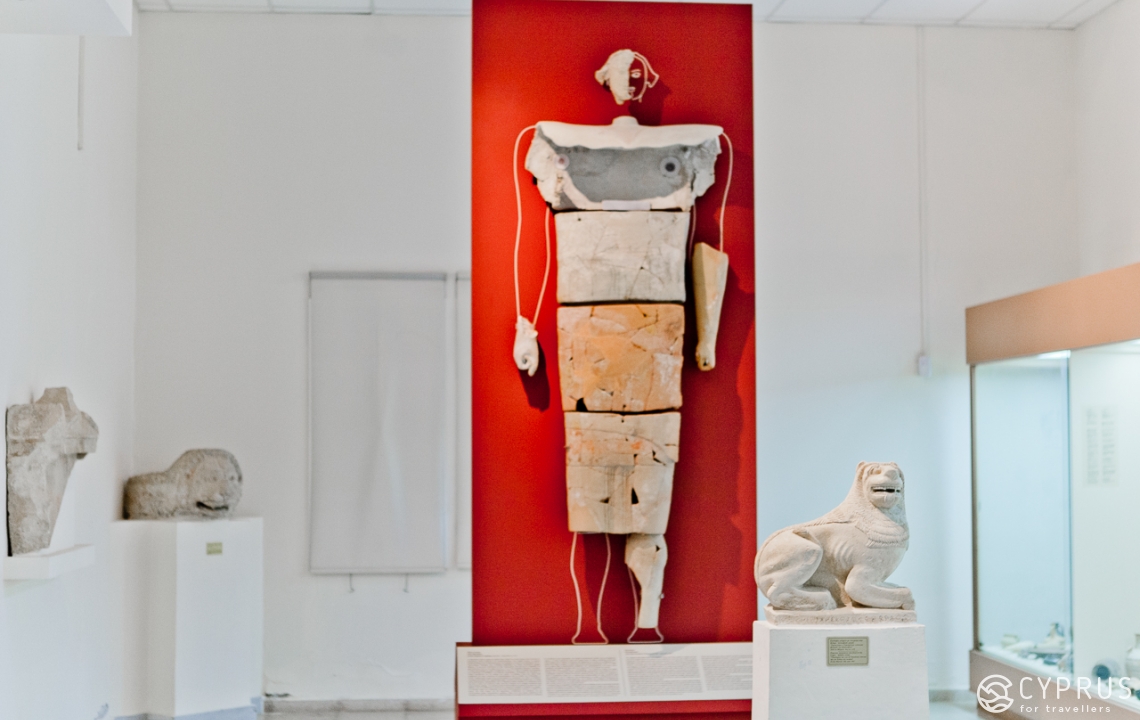
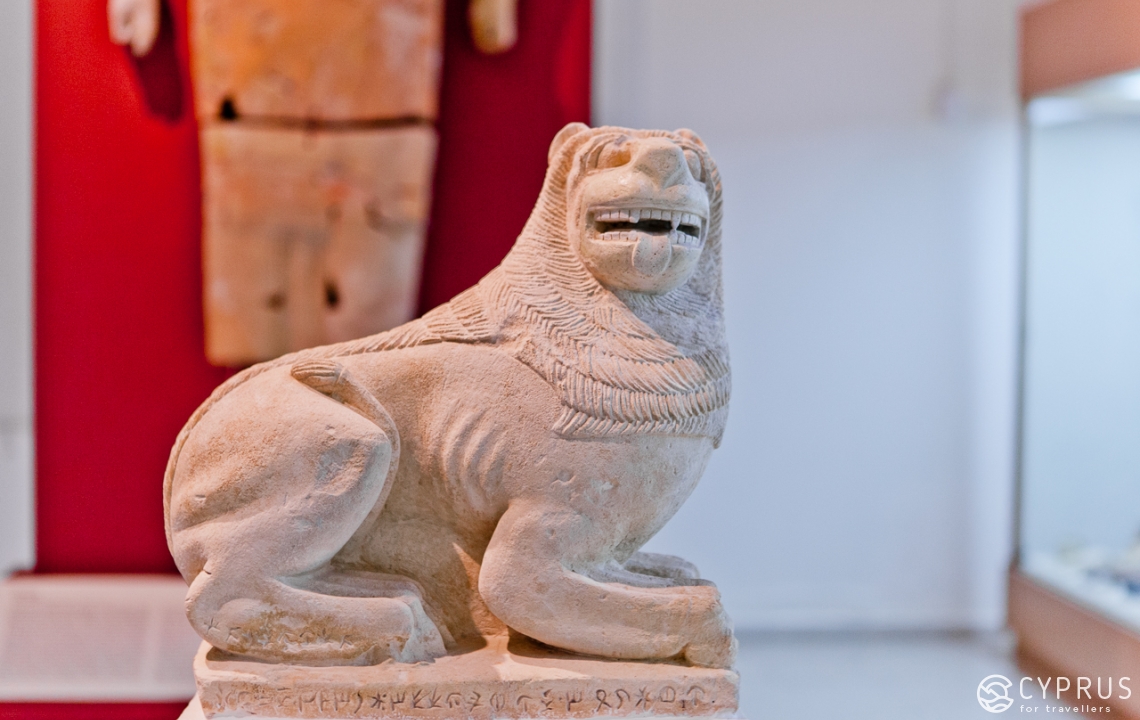
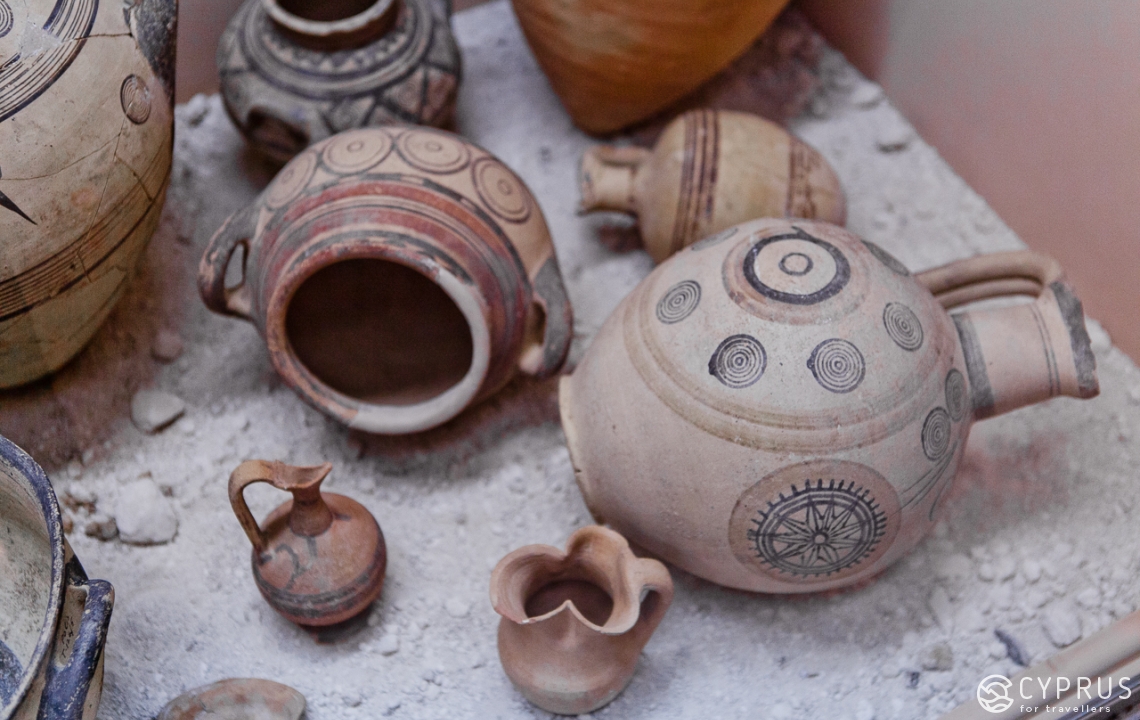
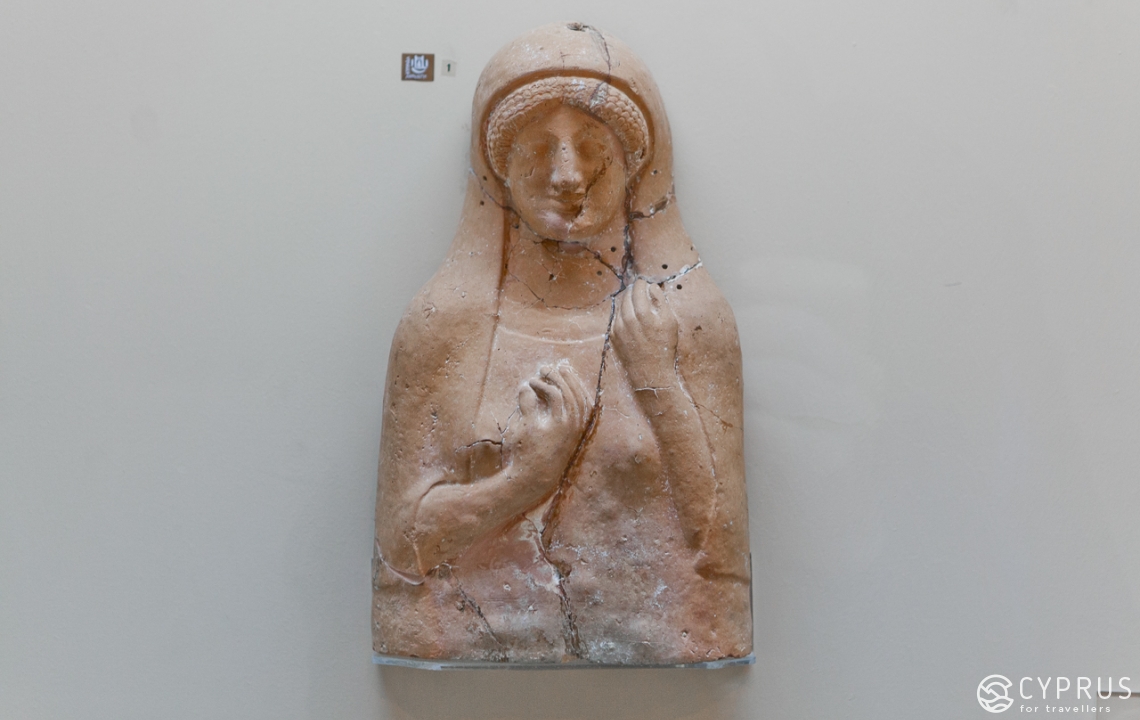
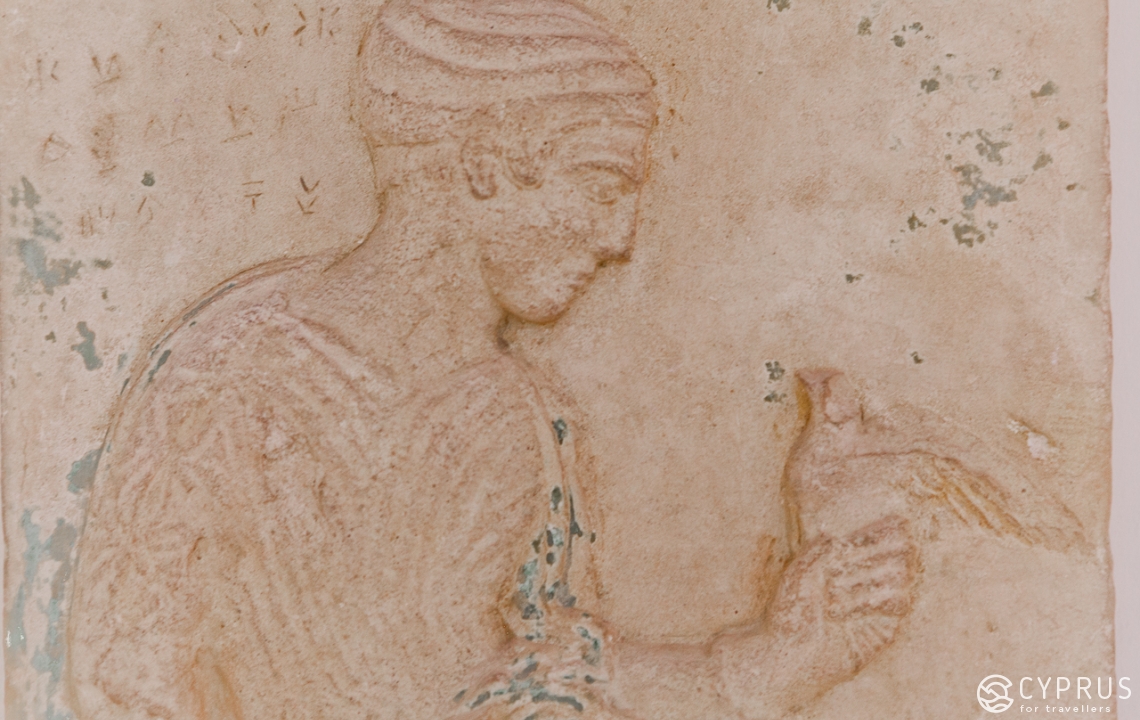
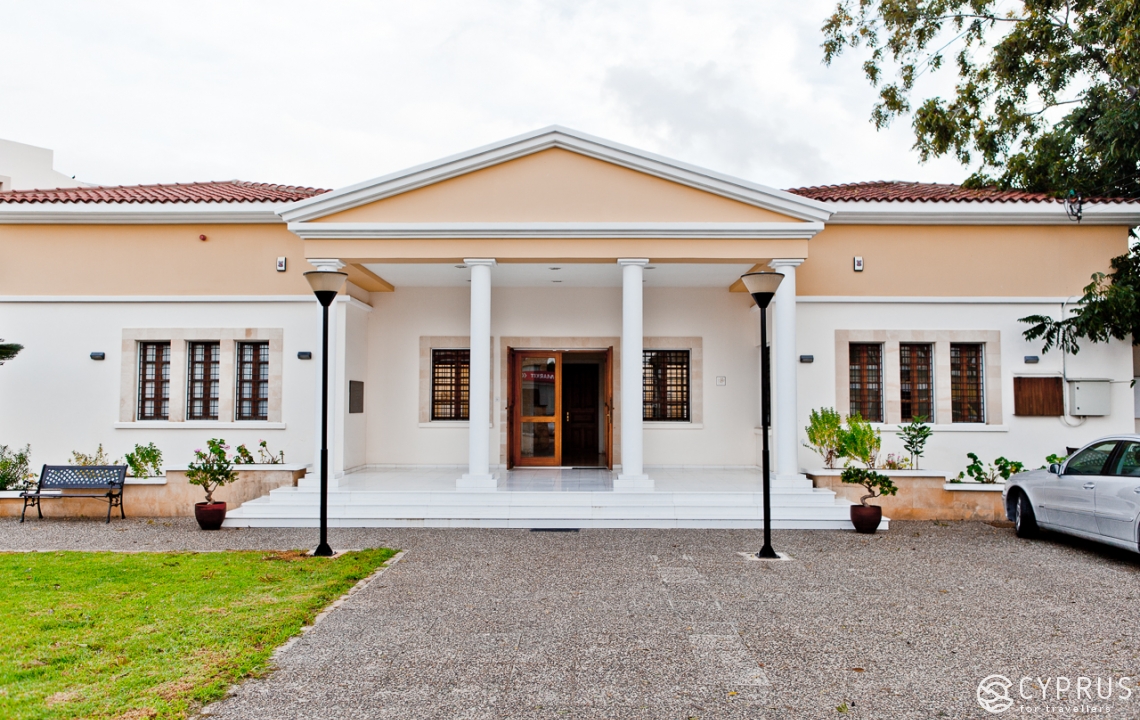
Address: Archbishop Makarios III street, 26
Telephone: +357 26322955
Opening Hours: Monday 08:00-14:00; Tuesday, Thursday and Friday 8:00-15:00; Saturday 09:00-15:00
Admission: 2.5 euros
St. Andronicus Church, a traditional Byzantine church, is nearby. It has frescoes from the 16th century. Since 1571, the church operated as a mosque under the Ottomans. They covered the existing fresco with plaster. In 1974, specialists from the Department of Antiquities managed to uncover the magnificent works of art. The exterior of the church is decorated with modern mosaic and gold plating (2003). One of the side doors leads to a small chapel (which is always open, even when the church is locked).
Where to stay in Polis
You can always find suitable hotel options here: www.tripadvisor.com, www.booking.com.
For real nature-lovers and fans of the great outdoors, there is a campsite in the area, just 1km northwest of Polis. It is on the coast, in the eucalyptus woods of Limni, and is popular with local and foreign tourists. It is the largest campsite in Cyprus and can accommodate up to 700 people. Its services include: toilets, a shower, a bar, a barbecue area and several wooden picnic tables, and parking. It has electricity and Dasoudi Beach is nearby. You can walk to central Polis in about 15 minutes.
For more information about the area, check out: www.polischrysochous.net
The «Flying Cypriot» a.k.a. Our Discovery in Winter Latchi
This small coastal village is in Polis Chrysochous district where you’ll find numerous beaches, rental points where you can hire yachts, boats, and speedboats for watersports. Find out more here: www.facebook.com или на www.latch-yachting.com
In fact, this place was also a port in ancient times and the ruins can still be seen.
In the winter, the marina with its laid-up boats and other ships is fairly empty. You’ll only come across a few taverns open on the waterfront where a few locals and tourists will be enjoying one of the windy evenings at this time of year.
Incidentally, we discovered that the food here is really tasty but doesn’t come cheap (about 20 euros for a dish). However, the portions are large and if you don’t want one to yourself, you can always share a dish between two of you.
Twilight was encroaching as we arrived. The sun was still making an attempt to cast its last rays into the sky and over the coast. However, it soon disappeared behind the huge clouds that were being driven in by the wind. Down below, the waves crashed in and in that moment the seascape was magnificent, the ideal backdrop for the many yachts and boats dragged onto land, but in particular a strange ship once called Agios Spiridon. It is covered in rust, gaping holes, and the empty frames of smashed portholes.
We were so taken aback by this ship in this harsh hour as the next wave of bad weather rolled in that we gave it a new name, the Flying Cypriot. As the wind picked up and began to howl, we continued to explore its pale skeleton and it finally got dark. The few passers-by we had seen disappeared and the moon appeared in the sky. It was time to think about dinner and a relaxing evening so we went in search for our long-awaited accommodation.
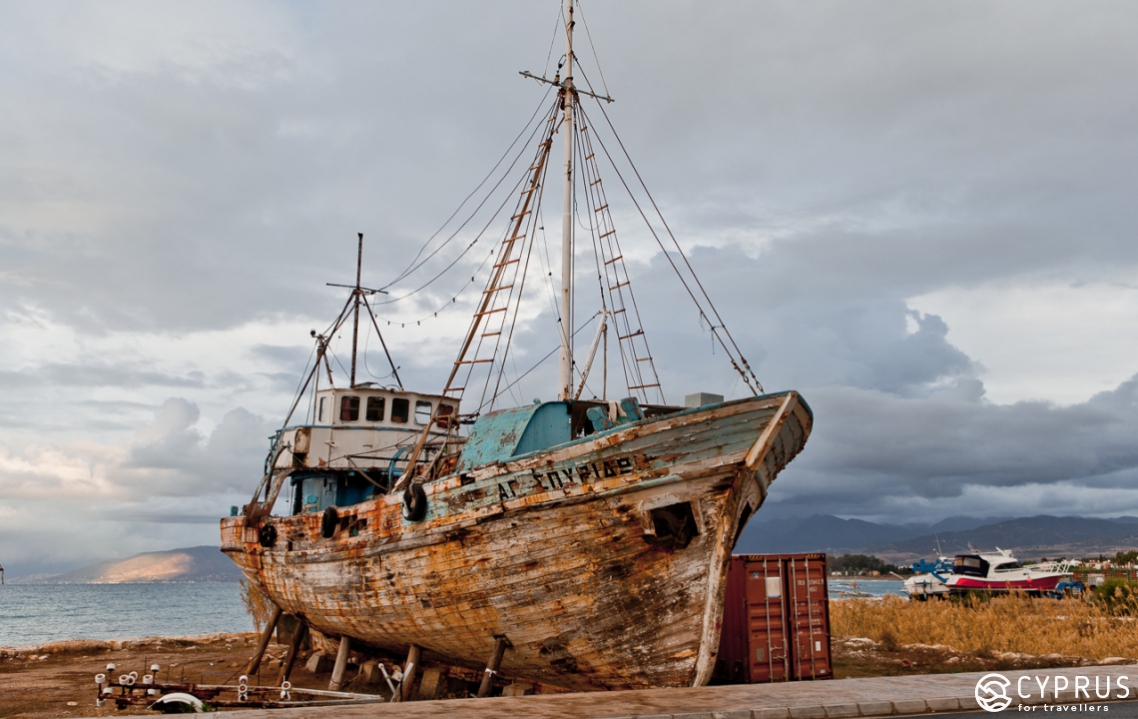
Where to stay in Akamas
On our travels, we discovered the Aphrodite Beach Hotel in Neo Cyorio, a 2-minute drive from the Baths of Aphrodite and the nature trails that start in the botanical garden next door.
It is small, but with a cosy homely atmosphere and has its own beautiful beach and panoramic view of the sea and coast. If you come in the summer, you can start your morning off with an early swim in crystal-clear water or sit on the restaurant’s veranda for your morning coffee. All this will make you want to go on a safari. The hotel also organises trips as well as other entertainment and leisure activities. Alternatively, you can set off alone to explore the area and its abundant history and ancient myths.
We were here in winter and the hotel’s friendly owners were extremely welcoming, caring and attentive. Upon our return from our day’s outing around the area, it was usually already dark and beginning to feel cool in the damp wintery air, so it was wonderful to go into the lounge and sit by the burning fireplace with the other guests. Our trip coincided with a large group of German tourists! We relaxed with quiet conversation and enjoyed the warmth of the fire, delicious dinner, and good wine.
We liked our rooms at the Aphrodite Beach hotel. All rooms have stunning views of the mountains and Chrysochous Bay. Far from the cities and hubbub of the tourist hotspots, the local air carries the scent of late-season roses and herbs (even in winter). The wind rustles and whispers by, and waves crash against the shore glinting in the moonlight, tossing sleepy pebbles in a splash of water.
This is the majestic Akamas peninsula with its incredible landscapes, colours and sounds. It watches as tourists again set off for a new day of impressions in its wilds, mountain paths, and deserted stony beaches.
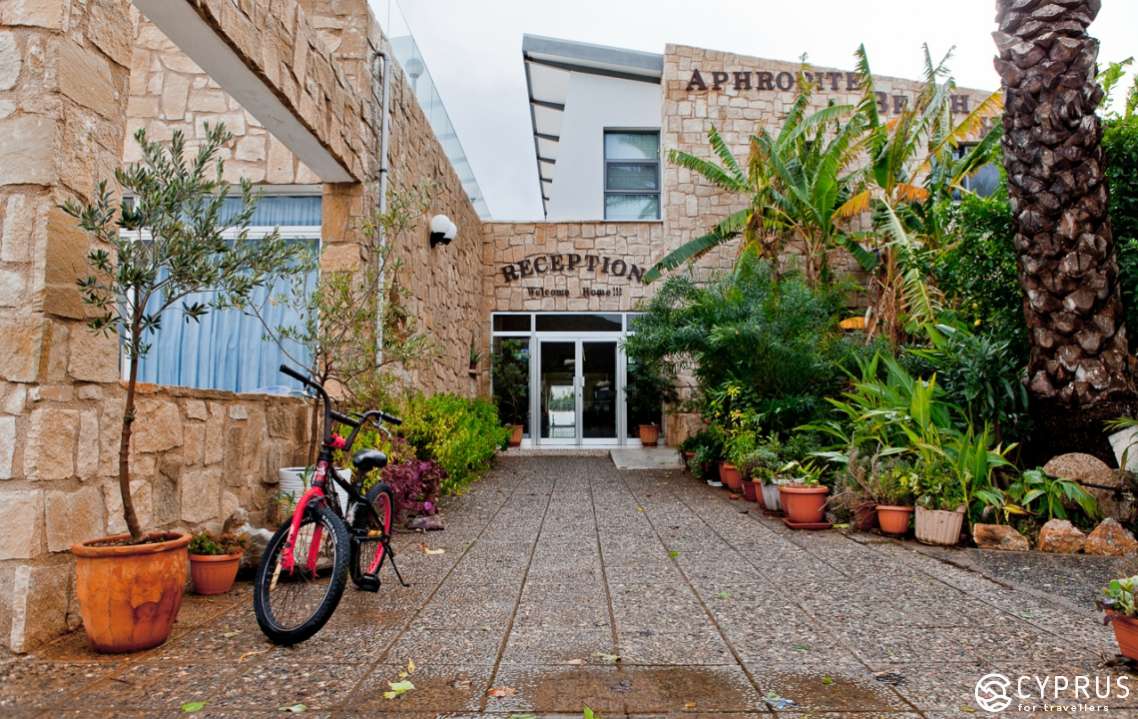
So, nature-lover friends, we’ll provide this precious address and hope that you will visit this area at least once and want to return again and again.
Address: Aphrodite Beach Hotel, Neo Chorio (Polis Chrysochous)
Telephone: +357 26321001
Site: www.aphrodite-beachhotel.com
However, if you’re more of a sports and active holiday fan, there are also places to go in the area where you can get your kicks.
Note: Summer Fun in Akamas
Akamas Trip & Fishing in the Blue Lagoon on a modern speedboat costs 120 euros per hour for cruises and parties.
Telephone: +357 99630136 (Konstantinos).
Jeep safaris run by Aphrodite Safari Bus Tours. Main stops include: Fountain Amorosa – a pirate base (interestingly enough, the brochure actually says it is a functioning base) – the Blue Lagoon – Akamas. At tourists’ requests, you can go part of the way on foot. Price: 10 euros for two people.
Contact details: +357 99227565, www.aphroditesafari.com
Aphrodite Water Park in Paphos
Contact details: +357 26913638, info@aphroditewaterpark.com
Year-round Entertainment
Sophia and Andreas’ traditional house in the village of Letymbou is open for weddings, festivals, and parties. They also bake traditional bread, cypriot olive pie and halloumi pie, and make lucumades.
Contactdetails: +357 99995961 (Sophia), +357 99675223 (Andreas)
There are horseback tours available. You can opt to go solo, with your family, or your group of friends (prices start at 40 euros).
Contact details: +357 99777624, caroline@rideincyprus.com, www.rideincyprus.com
Morning Starts with the Baths…
The early Akamas morning, it seemed, woke up later than us. So, when we arrived to «meet» Aphrodite, we hesitantly sat in our cars in the car park (next to an affordable restaurant on the coast with its own beach down below), and listened carefully to the sounds of the wildlife awakening around us and the gentle rumbles of thunder far off in the distance rolling through after last night’s spell of bad weather. Lady luck had favoured us again: the Goddess of Love was suddenly right before us and the whole area was cast in a bright glow by the sun. Without any further ado, we made our way the legendary place. We made a note of what to do on a return trip (when the weather is warmer): bring the family and explore the nature trails of this reserve.
For those who make the wise decision to delve into and explore the nature here in spring or summer, there are two routes on the Akamas peninsula in the Baths area: Aphrodite and Adonis.
The Aphrodite trail, as expected, leads away from the Baths. It’s 7.5 km long and last about 3-4 hours. It’s a level three walk in terms of difficulty. What to see: admire the Baths themselves, then go and find Pyrgos-tis-Rigenis (the Tower of Rigena), which was thought to once have been part of a medieval monastery. Then, you’ll come across ... an oak, but not just any oak. This one is 500 years old. Walkers are also treated the beautiful views of Cape Arnaoutis, Polis Chrysochous and the surrounding forests of Akamas (part of Paphos).
Please note: there are two water sources on this route but it is not recommended that you drink the water from them. The trail joins up with the Adonis trail here at the Tower.
The Adonis trail starts 400m before the entrance to the botanical garden (up to the gates where the trail leads to the Baths, while the other follows the Aphrodite trail). It is 7.5km long, lasts 3-4 hours and is a level three walk in terms of difficulty. What to see: the magnificent views of Polis, the forests and mountainous borders of the Akamas peninsula. You will also pass by Pyrgos-tis-Rigenis.
In principle, you can also walk them in winter but try and choose a sunny, dry day. This shouldn’t pose too much of a problem in Cyprus as the average climate info testifies. This area enjoys 320 sunny days per year (it was just our unforgettable journey that fell on one of the outliers!)
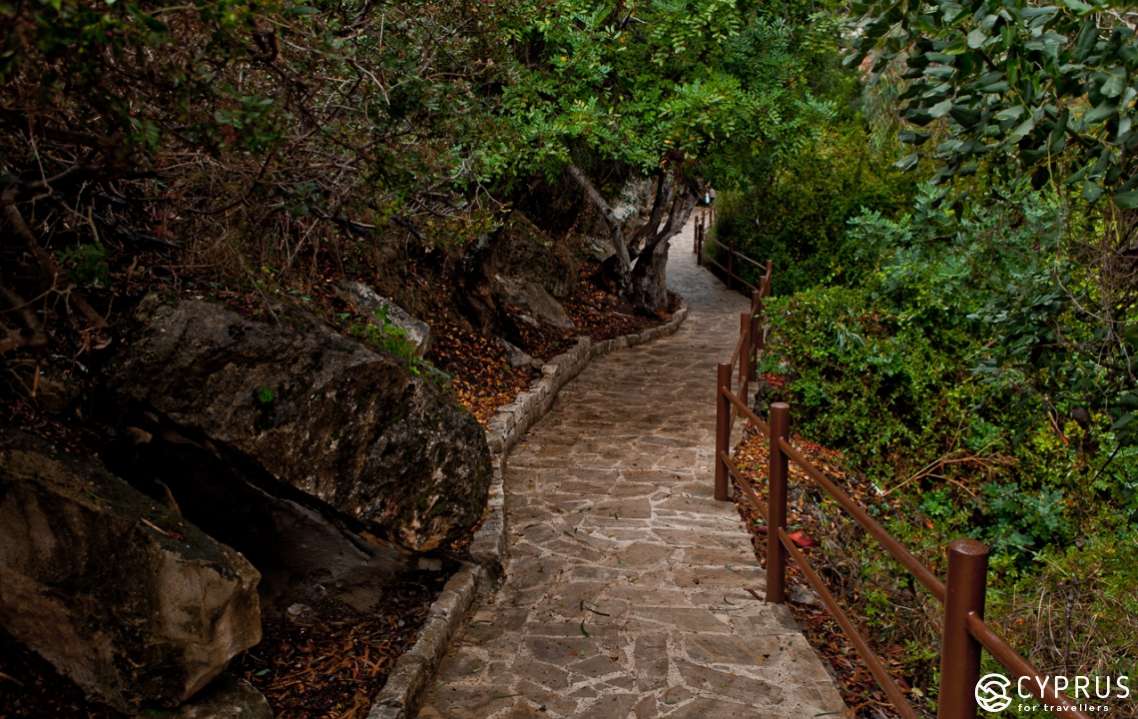
... The trail wound through the thickets, still gloomy with their heavy dark leaves from the rain, and there was nobody around. The air was thick and highly scented; the rich aromas of eucalyptus, pine, rosemary assailed our senses. It’s here, 48km north of Paphos near the village of Latchi, where the famous Baths are. They are in a small natural cove where, legend has it, the Goddess of Love and Beauty, Aphrodite, bathed before meeting her lover Adonis. Once you get up close to the Baths, you can see a stony natural pool in the shade of a rocky crevice. A waterfall springs forth from somewhere above and a mountain stream flows quietly by. You really feel the urge to plunge into the pristine silence and sit back and ponder the vicissitudes of a life full of such dramatic (by human standards) twists and turns, and the difficult fate of the ancient goddess who appeared with so many names and incarnations in different cultures ...
Unfortunately, us modern-day goddesses don’t get the chance to bathe here: there’s a sign forbidding swimming in the pool in order to preserve Aphrodite’s untouchable property.
The botanical garden is nearby (with free admission). It has displays of the diverse endemic flora of the peninsula. After walking one of the trails, nature-lovers can enjoy watching the local fauna (foxes, hares, hedgehogs, lizards, Cyprus warblers, etc.) and migrating birds.
Leaving this picturesque area that is undoubtedly meant to inspire our subtle nature and exalted spirit onwards to new creative feats, we headed along the coast to the opposite side of the bay as we felt a pressing need see the entire picture of the area around the City of Gold. The museum in Tilliria was our destination, 25km from Neo Chorio according to the sat nav.
We drove through or by the following coastal villages: Limni – Argaka – Gialia – Ayia Marina – Nea Dimmata – Pomos – Ayia Raphael – Pachyammos and Tilliriya
The coast stretching from Polis to Pyrgos is one of the most wild and bleak places in Cyprus. Its landscape is craggy with numerous coves cutting into it and headland jutting out. What’s more, Chrysochous Bay boasts a magnificent wealth of marine wildlife.
It is definitely worth a visit if only for the wildlife. As you drive, look out to the left and you’ll see a coastline with both natural, wild, and tamed beaches where unfazed fishermen work and the sea opens up to its fullest. To the right, the coastline is dotted with villages, cosy cafes and pubs, plantations, vineyards and gardens, all under the backdrop of the looming mountains. Despite speeding by, you should be able to notice that there are a lot of relict plants in the coastal area, and each village has its own unique look and feel. Take Argaka for example, when driving in and out you go through symbolic doors with welcoming inscriptions. In Gialia, you’ll find the remains of Venetian opulence in the form of a two-level stone bridge.
Nea Dimmata is characterised by its old brick buildings (clearly a legacy of the British period) that differ from that of the neighbouring villages. Pomos is the largest fishing village and here spurs of the mountains reach the sea. Pomos like nowhere else conjures up the feeling that you might stumble on the end of the world somewhere around here. The sea is absolutely boundless, and the distances seem infinite. Anyone who has been, knows what I’m talking about. In Ayia Raphael, the wildlife has confidently taken over the surrounding rocks and stony coastline.
Dragon Cave is near the great, majestic St. Raphael church. As you drive closer, you’ll see more and more stalls and shops selling baskets and other woven goods (one of the main crafts in Polis district). Rumour has it that one of the most hospitable Cypriots lives in Pyrgos. Pachyammos is known as a garden village.
Pachyammos and Tilliria are 295m above sea level. Tilliriya is basically a sparsely populated, wooded area with several wild, expansive beaches between Chrysochous and Morphou bays.
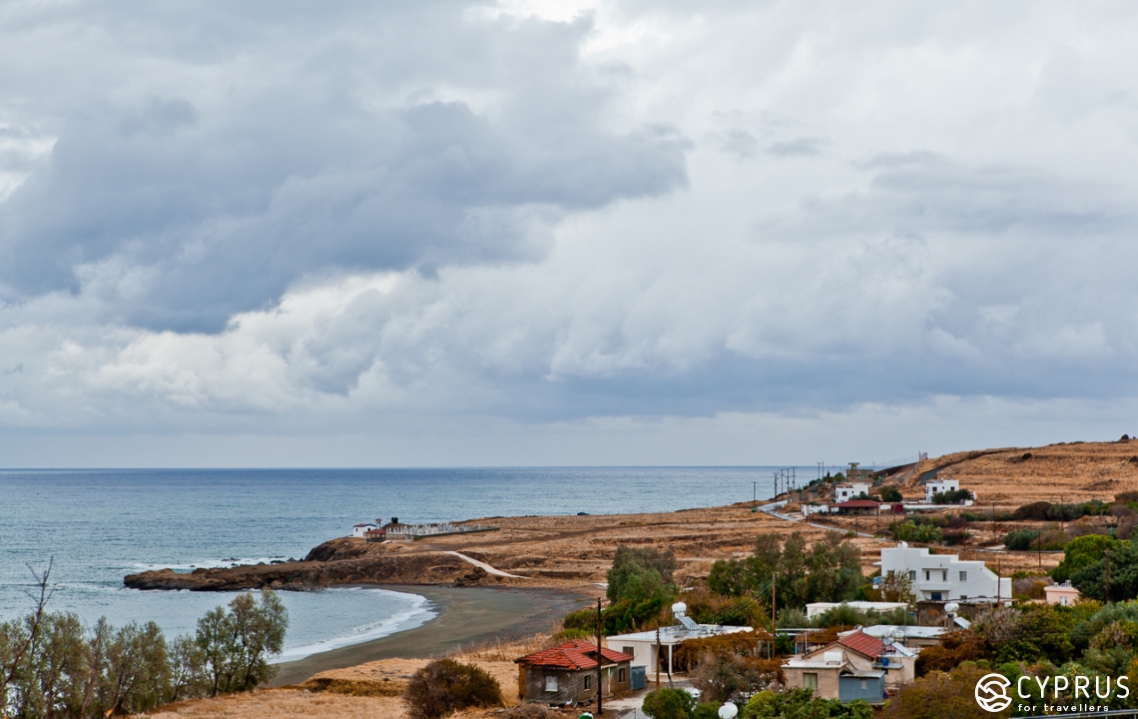
By driving along the main road by the sea, we arrived in almost the very centre of the village of Pachyammos by the church (opened on September 3, 1989), which looms over the sea like a lighthouse. The church has a bell tower with a clock, and its grounds are home to a monument called The Flame dedicated to soldiers, officers, and the local population, to all victims (listed by name) that fell during the resistance to the Turkish army in August 1964.
There is also a car park, bookshop, an assembly point for local Democrats, and ... that museum we had put into the sat nav and made our way towards. The museum turned out to be a kind of junk shop, souvenir stall and agricultural equipment shop all in one. It sold wicker baskets and mats alongside with glass demijohns, sickles, ploughs and ceramic figurines. It was vaguely interesting but we decided not to waste time there and walked on into the centre. After a short walk around, we went back and continued on our journey.
If you walk further up the street, you’ll see traditional fountains in the walls (taps in stone niches 1946) and then Agios Georgios Chapel with its belfry and fascinating medieval buildings made of rough stone that have been well-preserved. There is a bus stop nearby.
Bear in mind that you can find rooms and houses for rent all year round in all the villages overlooking Chrysochous Bay.
The bay’s beaches and sea water are so clean that they have been awarded blue flag status all along the coast.
The only public transport in the area is the 643 bus that goes from Polis to the villages along Dimokratias Avenue.
Find more information at: www.cyprusbybus.com.
Droushia: Up in the Clouds
The coastal drive along the stormy bay had refreshed our spirits and we headed for the village of Droushia and drove deep into the mountains with the same effusive enthusiasm. A long-awaited calm had descended after the recent storm and the tops of low mountains and hills were draped in a kind of thick fog or heavy mist, and the heavy, saturated clouds settled wearily over the land.
We found a place to park and went deeper in search of adventures.
The silence was deafening. The only sound was coming from droplets of water dripping off the dark, wet branches. The air was white and thick and disturbed only by the sound of our steps. From time to time, old stone buildings jutted out to meet us. ThiswashowDroushiawelcomedusthatmorning.
Owing to its location, the picturesque and incredibly atmospheric village (at 600 meters above sea level and 34km from Paphos) is fanned by cool winds from Akamas. This is how it got its name. The Greek word drosia means cool.
The traditional lifestyle of the community is preserved and can be seen in its traditional architecture, narrow lanes, the couple of museums and Byzantine churches. These days, the village has 386 inhabitants. Droushia is located in the unique region of the Laon plateau, which boasts a wealth of natural resources and a curative climate. It is also renowned for its soil composition (limestone and clay). 19 varieties of grapes are grown there but the region is mostly famous for Sauvignon Blanc.
What to See and Where to Go:
Agios Epiphanes church (1783) is in the heart of the village. It is a splendid example of ecclesiastical architecture on a beautiful, stone-edged square. The new, carved iconostasis (2008) contains both old icons made by the artist Dapani N. Paparchirou Drusiotou (1907) and new ones (2015)
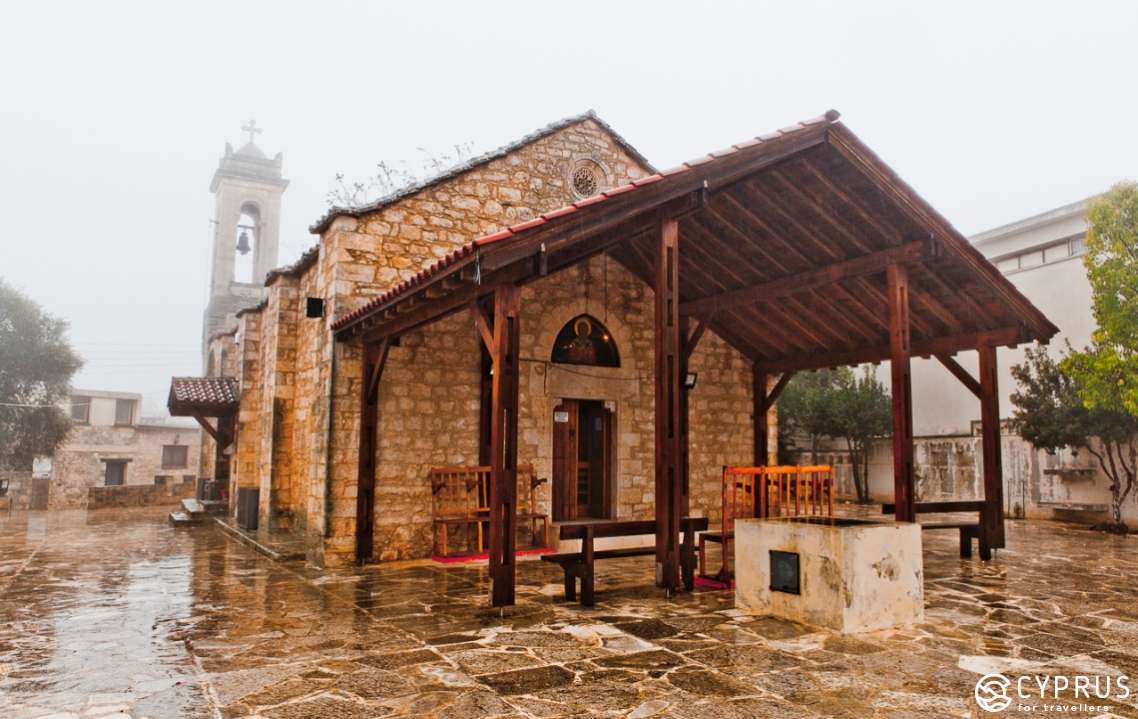
Nearby, you’ll find the monument to Stefanos Loizidis, a then 24-year-old Droushia local, who died during the Turkish invasion in August 1974.
The Weaving and Folk Craft Museum is next to Agios Epiphanes church. It houses a small but interesting exhibition with a large wooden loom (called «voofah» in Cyprus), samples of national dress made of cotton and silk, and other local needlework and crafts.
Opening Hours: Monday – Thursday: 07:30 – 13:00 and 14:00 – 17:00; All other working days: 07:30 – 14:30.
You’ll also find the Art Workshop, a souvenir shop and café nearby. It sells frappes, halloumi, tea, etc. as well as Cypriot sweets (from 1 to 8 euros), home-made rugs and bedspreads (40-100 euros), and dried pumpkins with carved patterns, etc.
The H Droushia cheese factory is in the heart of the village. A visit there will teach you about Cypriot dairy products and, of course, goat milk.
The St. George Nikosilitis Monastery (15th Centurtu) is just 3 km northeast of Droushia. Historical accounts have it that in 327 St. Helena decided to found a monastery dedicated to St. George in the area when leaving the island.
The green theatre with an open-air stage and a view of the bay. Numerous shows and events are held here during the summer months.
Last but not least, there are plenty of cafes and taverns. In the main square there are several cafes (for example, the Krio Vrisi which translates as cold water source) which are popular with the locals and the occasional tourist.
Where to Stay:
A good option is the modern Droushia Heights hotel. There’s a choice of 3 executive suites, 11 luxury family rooms, 1 honeymoon suite and 1 presidential suite with a beautiful view of the sea, and the surrounding landscape. The hotel also has 16 standard rooms and 12 superior suites with a view of the village; as well as 4 standard rooms near the pool with a sea view for guests with disabilities.
Telephone: +357 26332200
Website: www.droushiaheightshotel.com.cy
Email: info@droushiaheightshotel.com
How to Get There:
From Polis (15 minutes) by Akamantos Street then turn left at the St. Lucas Anglican Church and follow the signs.
From Paphos (38 minutes) via the B7 motorway, then the F708.
Buses 626 and 641.
As we made our way back to Paphos as the early evening was drawing in and our whistle stop tour was coming to a close, we still couldn’t resist popping in to our next stop.
Pegeia
It’s 15km from central Paphos and about an hour's drive from the Akamas tracts on the mountain slopes at 200m above sea level. From here you can enjoy a panoramic view of the west coast with its deep azure sea water, picturesque bays and gardens. The locals of this cosmopolitan area mostly work in tourism, agriculture and livestock.
We drove directly to the town centre. Pegeia’s main square has a car park and toilets. Here, «in the shade» of the town hall you’ll find the famous fountain, which is also the renowned landmark of Vrisi-ton-Pegiotison and the symbol of Pegeia. The fountain was built in 1907 (designed by architect Achilleas Constantinou). Until 1956, it was the main source of drinking water for the local community. The song Vrisi-ton-Pegiotison, which is well-known in Cyprus was written in 1938 by the primary school head teacher, Stavros Stavrou, from Chloraka (the music was written by the cantor, Theodul Kalinik). The song, which is still sung to this day, uses allegories arguing that «the waters of the source are able to heal the pain of the heart».
The central square is also home to the St. George the Victorious basilica. The church is open daily from 8:00 to 18:00. Nearby you’ll see an information board with a map that indicates local sights.
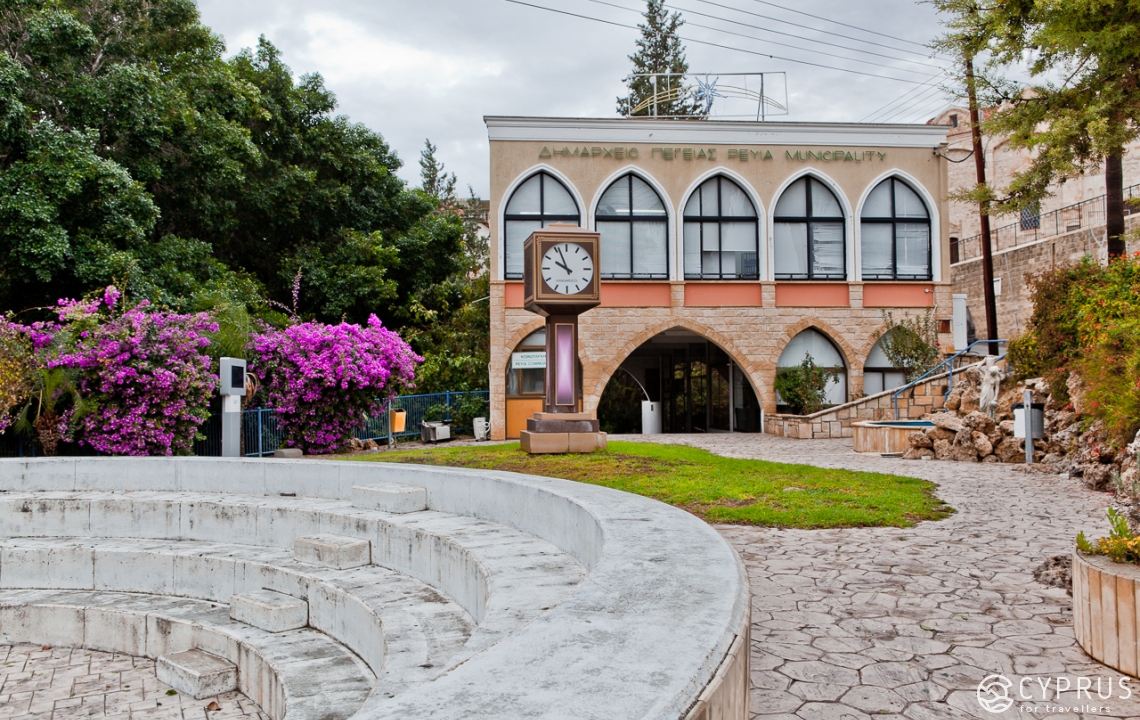
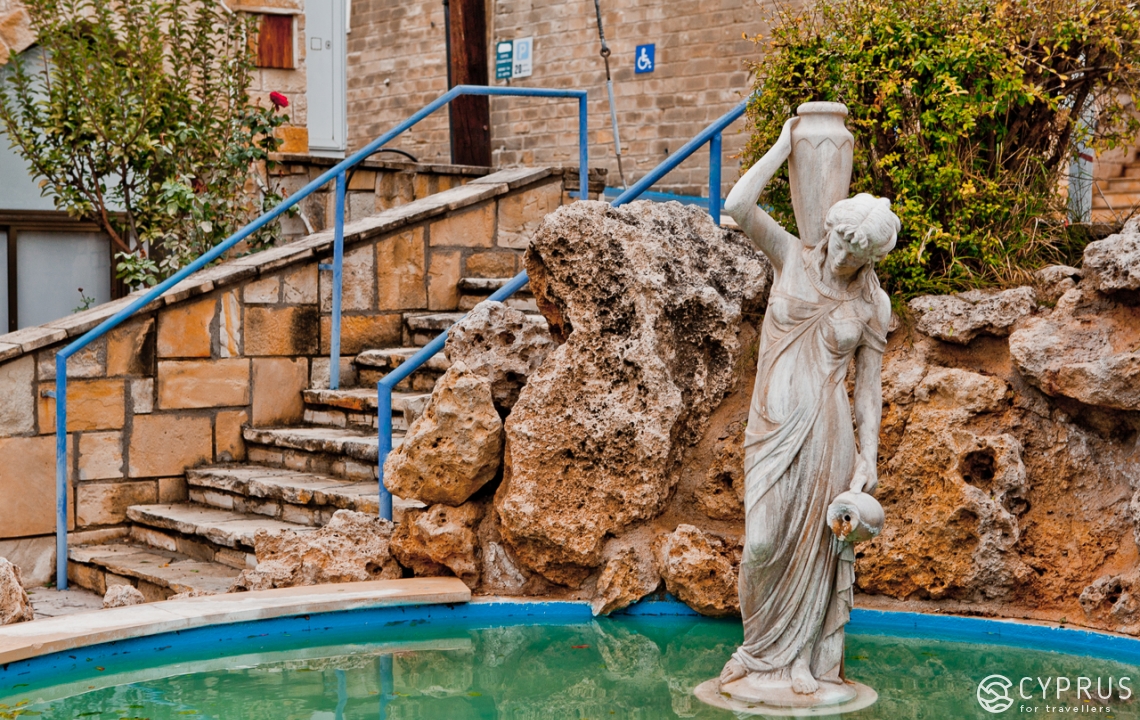
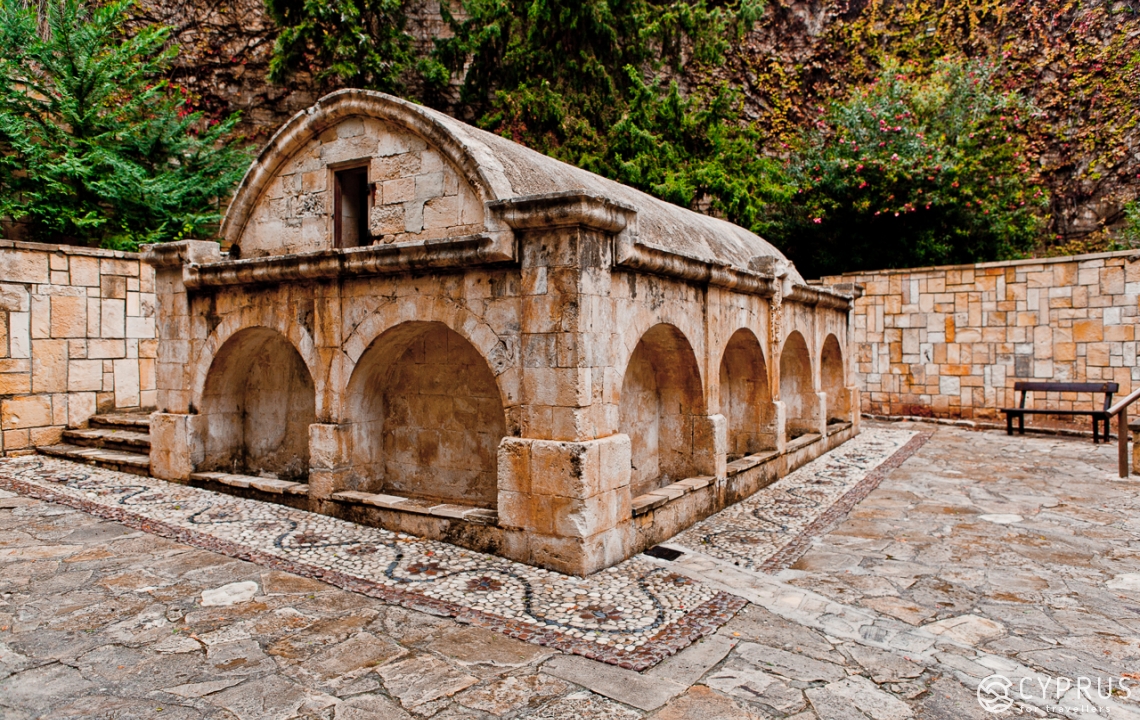
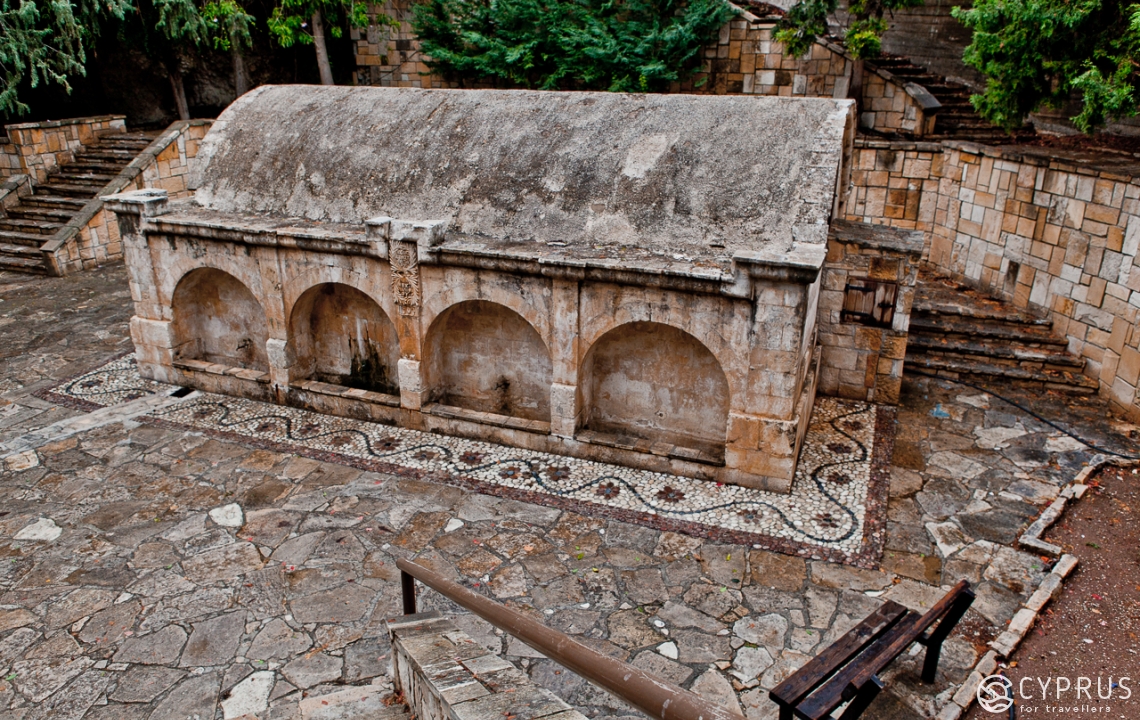
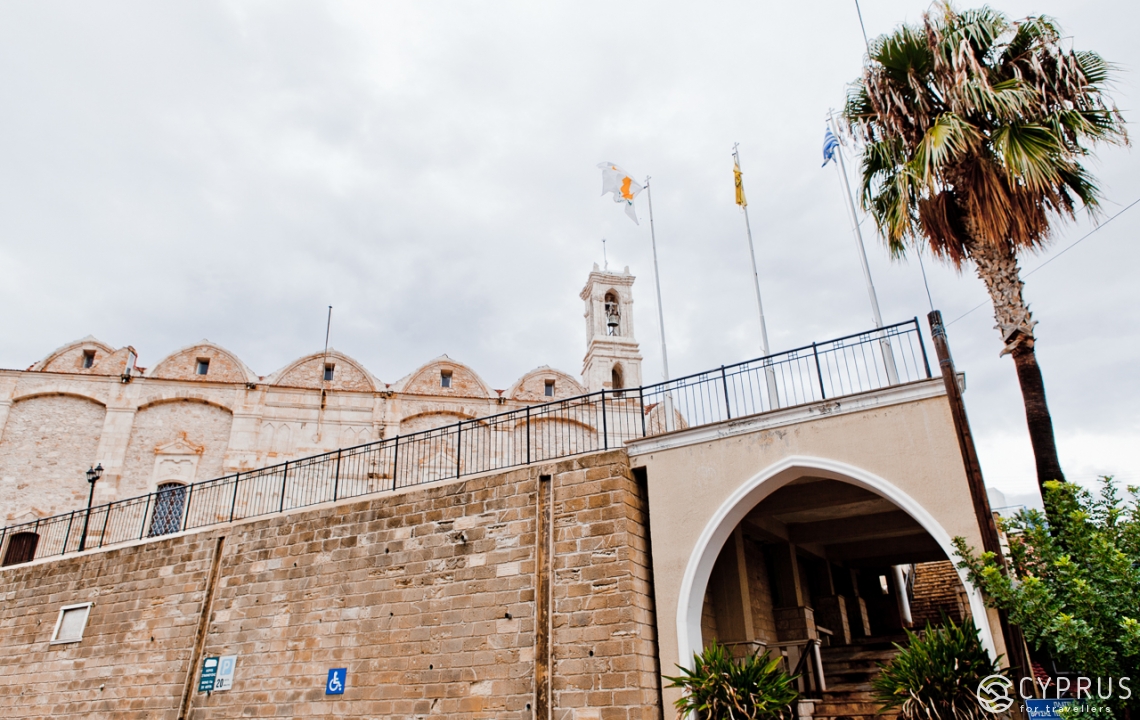
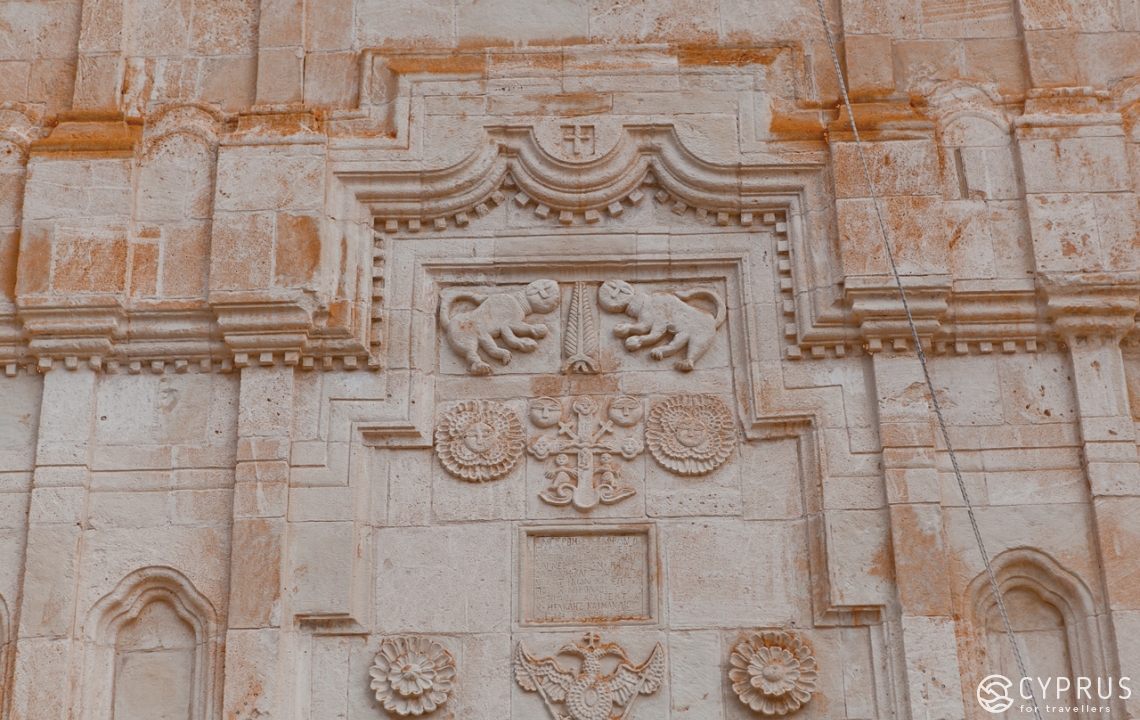
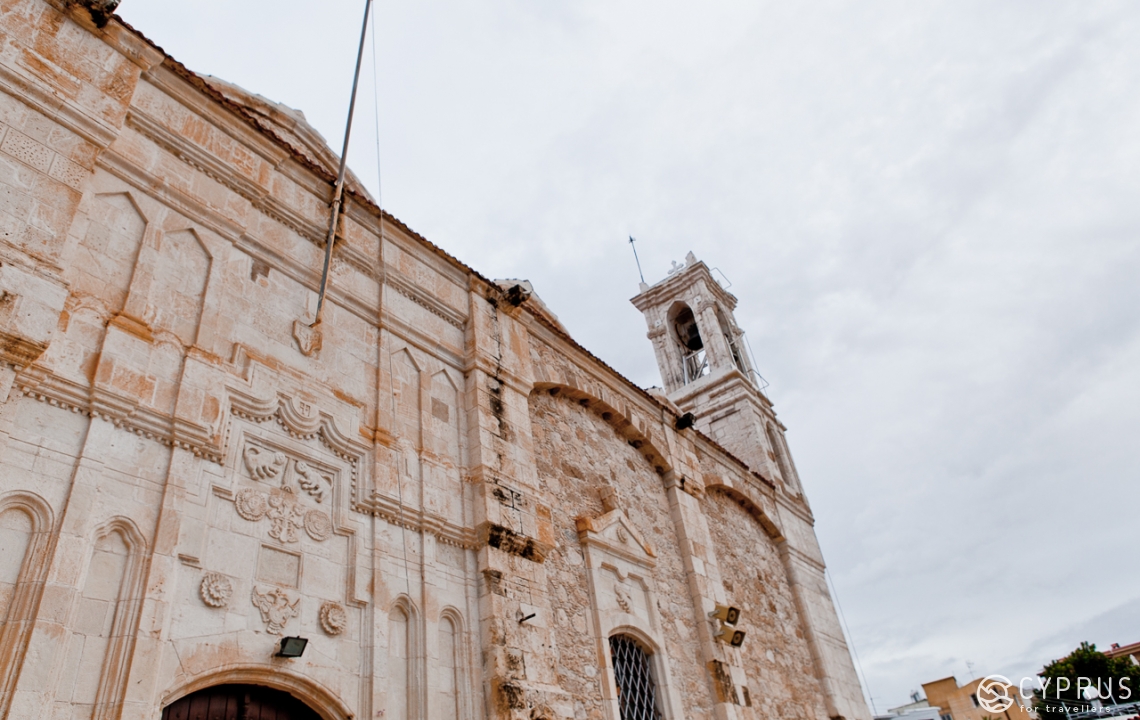
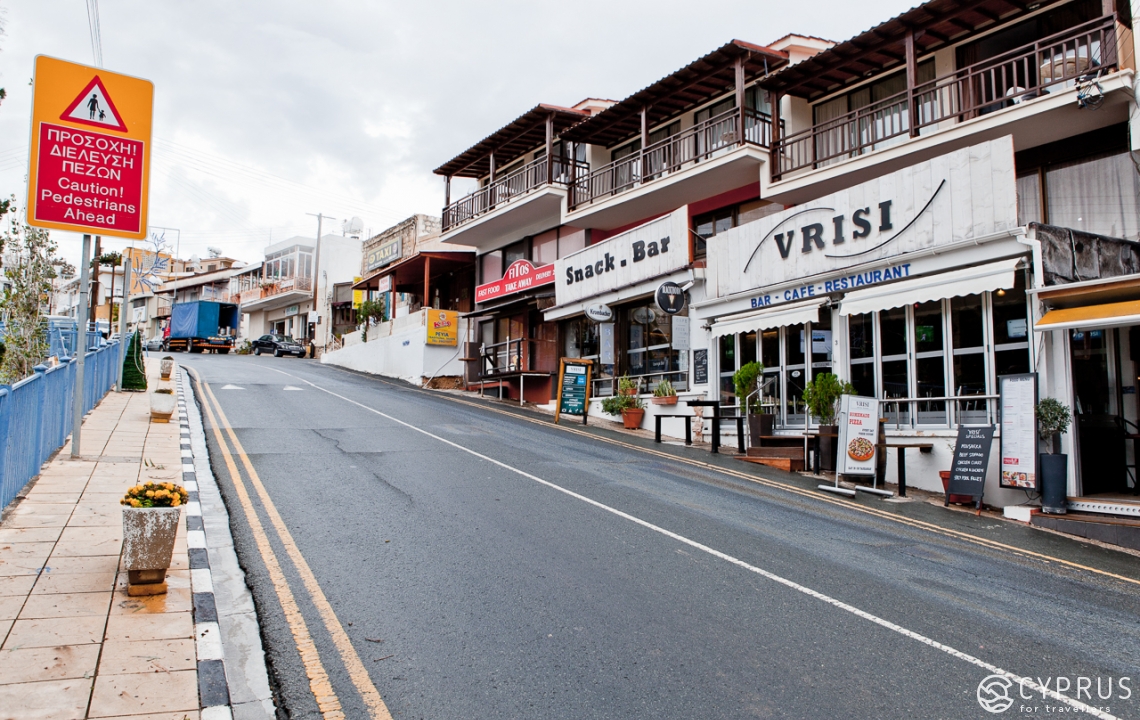
Theories about the origin of the name vary. The most common one was put forward by Nearchos Clerides and posits that the etymology of this word is foreign to Greek and proves that the settlement has its origins in the Venetian era. After all, the word «b(a)ia» in Italian means bay.
Historians acknowledge the particular importance of this area in terms of Cypriot history: it was here that the Hellenisation of Cyprus began. The first Museum of Mycenaean Colonisation on the island was founded here to commemorate the fact: archaeological digs in the area around Pegeia unearthed numerous unique artefacts. In the early years, the village was in the Zalatzia region.
For example, hundreds of figurines were found on the site of the ancient shrine, the Tomb of Meletis in the woods of Pegeia, which provided the link between the Bronze age and the Roman period and then Byzantine era, which succeeded the Hellenistic era.
For history and antiquity-lovers, the western tip of Cape Drepano (translated from Greek δρεπάνι meaning sickle) is undoubtedly the place to go. Its complex of churches, Agios Georgios, was once a famous pilgrimage destination. There was a large port and the city prospered. This is confirmed by the numerous works of art and luxury items found here that were brought from Greece, Egypt and other countries. For example, the rare white marble used to build the local basilica was imported from Proconessos Island.
What’s more, this site near Agios Georgios is the most important archaeological site for Cypriot history from the period of the Byzantine Empire. Research is currently ongoing on three local early Christian basilicas (6th century) with mosaic floors. It is thought that there was a small settlement there (however its name is still unknown), which thrived in the Hellenistic, Roman and early Byzantine periods. Later, the town was destroyed and abandoned, in all likelihood due to the repeated Arab invasions in the 7th-10th centuries.
Looking out across from the Agios Georgios chapel, the silhouette of Yeronisos island clearly stands out in the setting sun. It was the holy sanctuary of the god Apollo and it was confirmed that its first inhabitants came in the Chalcolithic period by a group of archaeologists under Joanne Conley from the University of New York.
Arab raids in the 7th and 9th centuries brought an end to many coastal settlements in Cyprus, including Agios Georgios. Much later, at the turn of the 13th - 14th centuries, the St. George Church was built near the former settlement. It has survived and continues to operate to this day. As for Agios Georgios Church on the coast, it was built more «recently» in 1928.
Archaeological digs were carried out here in several stages. The first excavations made by the Department of Antiquities (1952-1955) unearthed three early Christian basilicas and thermae dating back to the 6th century. Later, in 1992, the research was continued by the Greek archaeological mission from Greece. There were found adjacent to the temples of buildings, there was strong evidence that during the Byzantine emperor Justinian I (527-565 AD) it was here that the whole settlement was located.
Opening Hours: Winter (16 September – 15 April) 8:30 – 16:00; Summer (16 April – 15 September) – 9:30 – 17:00
Admission: 2.5 евро
Telephone: +357 26812301
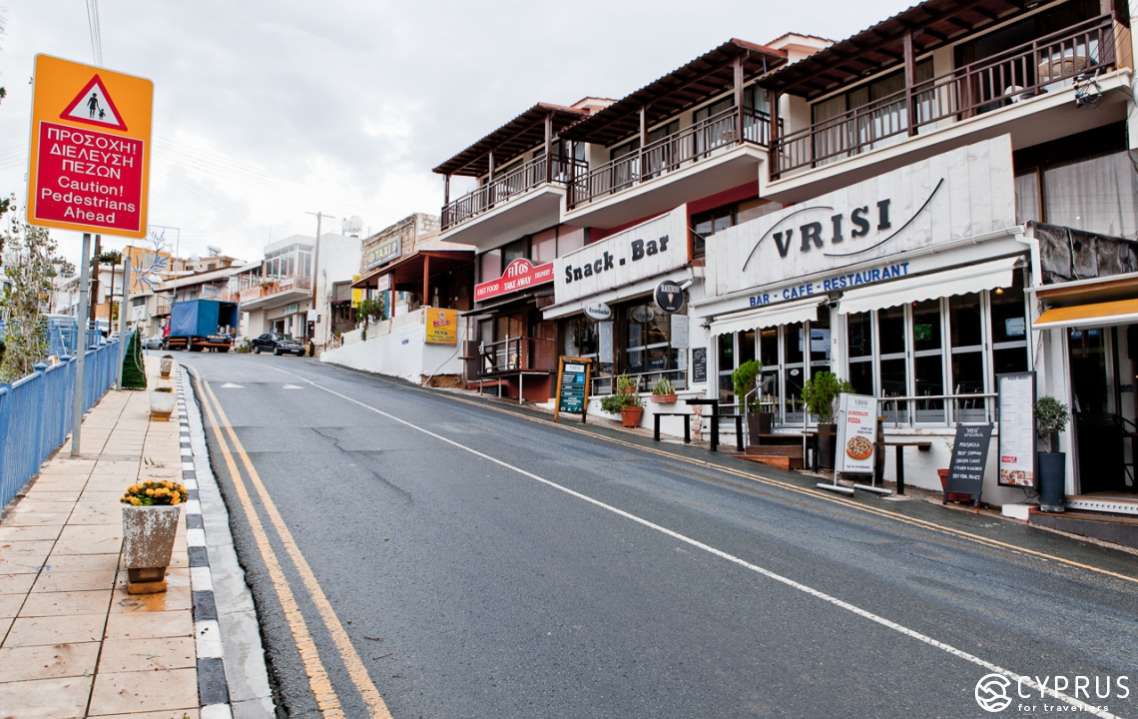
Where to Eat:
There are several cafes and restaurants in Pegeia. You can read about them here: www.tripadvisor.com. Of the bars in town, the coolest is The Mill in the centre (Synergatismou Sq 1, tel.: +357 26 622101/102/103).
You can find good accommodation options here: www.booking.com
For more information, check out: www.peyiacyprus.com, www.pegeiamunicipality.com
As you can see, we packed a lot into two days in the Akamas peninsula and surrounding area: we saw a lot of new places, forged great memories, and learned new things about the area; yet, we also barely scratched the surface of the incredible history that lives on and creates the unique atmosphere of this region.
We have shown you some of many places worth visiting so you can pick and choose the best tips and travel ideas and plan the perfect couple of days for yourselves.
We wish you fun adventures! Stay tuned for our latest articles!
